Yachting Monthly
- Digital edition


Sailing with solar power: A practical guide
- Duncan Kent
- November 13, 2020
The latest solar technology makes self-sufficient cruising much more achievable. Duncan Kent gives the lowdown on everything you need to get your boat sorted

SOLAR POWER ON BOARD
Solar power is fast becoming the most popular and economic method of keeping the batteries charged on a boat.
Particularly now that the efficiency of photovoltaic (PV) panels, charge controllers and batteries is improving every day.
Furthermore, the latest technology in regulators and charge controllers has brought about a noticeable increase in useable power output, so the problems of shading and non-alignment can be compensated for more easily.
Not only has PV equipment become more efficient and cost-effective, but many of the modern devices we want to use on a boat have become less power hungry.
This means it is now far easier to provide your entire yacht’s electrical needs, both 220Vac and 12/24Vdc, from natural energy resources – particularly solar power, even if you are planning on a fully electric boat .

Thinking carefully about how much power you need and how much your boat can accommodate is key to planning a solar array. Credit: Graham Snook
WHAT DO YOU NEED?
For instance, a boat with two new, good quality, deep-cycle house batteries of 100Ah each would supply 100Ah of energy to consume between charges, if you only use the recommended 50% of available charge between each charge cycle to protect the batteries.
From this you could run:
- a modern 12Vdc fridge (approx. 1.5Ah, or 36Ah over 24hrs),
- all LED lighting (say 20Ah per day),
- various small device chargers (20Ah)
- and a number of other items such as water pumps, TVs and stereos (25Ah/day)
- Totalling around 100Ah.
- For this you’d need 400W of solar capacity.
Of course, if you like to run a lot of AC devices off-grid such as hair dryers, microwaves, toasters and the like, then you’re going to need a DC/ AC inverter, which will take you to another level in power consumption terms.
But even then, with careful planning, solar could provide a large portion of the power you need before resorting to engine charging or a generator.
THE AVAILABLE SPACE
In practical terms, a modern 40ft monohull would have the space for around 1,200W of PV panels (cockpit arch, sprayhood top, deck), maybe 1,500W with the addition of a few portable panels for use at anchor.
The 1,200W of fixed position solar array could produce around 360Ah on a sunny summer’s day (zero shading) or more likely 250Ah on the average UK summer’s day.
So that’s enough for your 100Ah general DC consumption plus another 150Ah of AC consumption via the inverter.
Of course, to do this you’ll most likely need to increase your battery capacity to around 400-500Ah for maximum flexibility (you’ll need to store as much as possible during daylight hours), a typical figure for a 40-50ft offshore cruising yacht these days.

Get your solar charging right and you may never need to hook up to shore power
Typical daily inverter loads for a cruising yacht off grid might be:
- induction cooking plate (20min) 60Ah
- microwave (15min) 30Ah
- coffee maker (20mins) 25Ah
- hair dryer (5min) 15Ah
- laptop charger (2h) 10Ah
- or around 140Ah in total.
The trick is to monitor the batteries’ state of charge (SOC) at all times and vary your use of the inverter to suit.
For example, you might want to cook supper mid-afternoon, when solar is in abundance, and then reheat it in the evening when you want to eat it.
In some cases, when you’re cruising in warm climates such as the Med, you might end up with excess charge from your solar panels .
In this situation, many long-term cruisers devise a method of ‘dumping’ the extra energy by heating water for showers.
Do bear in mind if you’re planning to live aboard full time , then it’ll be a whole different story on cloudy days and during the winter, when inverter use might need to be knocked on the head entirely.
Continues below…

Eco friendly sailing: Best practice for green yachting
How easy is it to go eco friendly sailing? We look at the steps cruisers can take to minimise their…

How and where to go wild cruising in the UK
Planning to spend the night away from crowded waters can be truly rewarding but preparation is essential before you go…

Solar-powered boat crosses Atlantic
Then heads to UN climate conference
POWER DISCREPANCIES
There’s often confusion as to how much power you can harvest from a solar installation.
A PV panel is nearly always advertised stating its theoretical peak output power (Pw).
But in reality, on a yacht where there are limited areas in which to mount them, they will more likely produce a maximum of 60% of their peak output if mounted horizontally, increasing to 80% if tilted towards the sun and regularly adjusted.
The latter is rarely achievable on a boat, however, as even at anchor it can swing through an arc of 180° in wind or tidal shifts .

Flexible panels can be mounted on sprayhoods or awnings to add power when it’s needed at anchor or in harbour
INSTALLATION
Having trawled through hundreds of ‘deals’ to get the best price on the most efficient panels you can afford you now need to know how to install them to best fulfill your energy generation needs.
The output, even from the highest quality photo-voltaic array, will only be as good as the installation itself.
So following our guidelines should ensure you extract every last drop of energy from your investment.
PANEL MOUNTING
Sailing boats are not the ideal structure on which to mount wide, flat PV panels.
So before you go ahead and purchase what looks like the biggest and best, take a few minutes to decide on exactly where you can mount them, as this will affect what size and type of panels you should buy.
In many cases the first choice would be on an arch, davits or gantry aft, especially if you already have, or plan to fit one.

Dinghy davits, particularly on multihulls, can support a huge solar capacity
These allow a solid metal framework to be constructed that will be strong enough to take the heavier, more productive rigid PV panels.
You can also build in some form of adjuster to the framework that will allow the panels to be orientated towards the sun for the best performance.
With luck (or careful planning) a gantry will also keep them aft of the boom, thereby eliminating loss of output caused by boom shading.
The next most popular position for mounting the panels is on a cockpit sprayhood or bimini, although this will often mean using the flexible or semi-flexible panels, which are generally less efficient than the rigid ones for the same area.
ELEVATED MOUNTING
Alternatively, there are kits available for mounting panels onto lifelines, which can allow their elevation to be manually adjusted to a certain degree.

Pole-mounted panels can be used for maximum adjustability
Finally, panels can be fitted directly onto the deck by either gluing them down using mastic or attaching them onto a rigid support frame.
Once again you will probably need to use semi-flexible panels – especially if the deck surface is curved.
Rigid, glass-coated panels will obviously not be suitable for deck mounting in an area that is frequently walked over.
Don’t be tempted to drill through the panels, even along the edges, as this will invalidate the warranty and possibly damage the panel.

With solid panels, the ability to adjust the angle can add significantly to output
It might seem obvious, but the key to an efficient system is to avoid shading wherever possible.
It’s no good fitting expensive, high-efficiency PVs right under the boom as they’ll perform little better than the cheaper types.
Saying that, in good quality panels each cell will be isolated from the next by a series of diodes (one-way electrical valves), so that if one cell is shaded at least it won’t drag down the other cells within the same panel.
Older panels often didn’t have these, so the slightest partial shading caused the output of the entire panel to cease.
OVERHEATING
Another important factor that is often ignored when installing the panels is that of overheating.
If a PV panel gets too hot, which is quite likely if mounted directly onto a flat surface without an air gap behind, its output will drop quite noticeably.
To allow for some air circulation behind the panels it’s best to apply mastic adhesive in numerous large dabs.
This is best achieved by placing wooden spacer strips between the dabs until the mastic has completely cured, after which the spacers can be removed.
You might need some form of trim around one or more of the outside edges, though, if they are positioned where sheets and other lines might get caught under them.
Raising the panels up will also help water to drain off and thereby helping to avoid possible delamination from sitting in water for too long.
CHARGE CONTROL
A PV module cannot supply an electrical device directly due to the changeability of the sunlight, which in turns varies the current it can produce.
Therefore, it has to be connected to a battery, which stores and smooths its output.
Whatever the size of your solar array you will need to fit a regulator, or charge controller as they are now more commonly known, to the system in order to control the output and to help extract as much power from the panels as possible.
There are two types of PV charge controller.
The older designs, called Pulse Width Modulation (PWM) types, were fairly basic voltage regulators and simply output volts at just above battery level.
The latest controllers use Multi Power Point Tracking (MPPT) technology and can accept much higher input voltages (up to 240Vdc).
MPPT controllers can be up to 30% more efficient as they use the peak output of the panels to charge the batteries, even compensating for partial shading.
BEWARE FAKE GEAR
If you buy online do be careful to ensure you’re getting what you pay for.
There are a huge number of fake MPPTs out there, which are simply the much cheaper PWM dressed up with fake labels.
It’s hard to tell which is which, but the old adage of ‘if it looks too good to be true, it usually is’ makes good sense.
MPPT controllers are usually bigger and heavier than PWMs, but if in doubt call or email the supplier to discuss the pros and cons of their kit before buying.
If they’re not happy to chat and advise you then I would steer clear of their gear.
Some good MPPTs are made in China, but unless they have a UK supplier, I wouldn’t bother with them as you’ll have no follow-up advice.
To calculate what size controller you need simply divide the panel’s peak power in Watts (Wp) by the battery voltage, which will give you the maximum current (Amps) they could theoretically supply.
For example 240W/12V = 20A. Although it’s unlikely you’ll ever get near the peak output from any PV panel, it’s best to go for the maximum possible.

Induction cooking is now a reality on board, even without shore power
PV panels come with a short length of cable, usually around 1m long.
Some are supplied with MC4 connectors already attached but most only provide bare wires.
The latter can be easily extended using proper waterproof connections but thought must be given as to the current rating and voltage drop (usually max 3%) for the size of cable you intend to use.
If in doubt, bigger is better!
Panels can sometimes be ordered with the wiring on the back so that the cable can go straight below deck through a hole under the panel.

You may need to fit extra battery capacity if you want to run an inverter from solar charging
SERIES OR PARALLEL?
A commonly asked question is ‘should I wire my PV panels in series or in parallel?’
The simple answer is, if there’s any danger of frequent shading to one or more of the panels then install them in parallel.
If wired in series the shading of a single panel will drag down the output from all of the others in the same series.
PARALLEL IS PREFERRED
Most commonly, multiple panels are wired together in parallel to a single charge controller, with diodes protecting each panel from discharging the others should one become partially shaded.
With the advent of MPPT controllers, however, there can sometimes be a benefit to wiring two or more identical panels into a series bank, thereby presenting a higher voltage to the controller.
It’s worth noting that, like batteries, wiring PV panels in series increases the voltage only – the current capacity of the array remains the same as for a single panel.
‘Where’s the benefit of wiring them in series then?’ you might ask.
Well, the higher the voltage fed into the MPPT, the more consistent it will be with its output, which could, in some cases, prove more efficient than a parallel installation with PWM controllers.
It’s also likely to be necessary if you have a 24V domestic system.
SERIES WIRING
Series wiring is usually only done when the cable runs are long, as it helps negate the voltage drop caused by the resistance of the cable.
While a decent controller will have no problem handling the output from four or even five panels wired in series, it is often inappropriate for sailing yachts as shading just one of the panels will reduce the output of the entire series array.
If you need to do so in order to reduce cable runs then it’s best to split the panels between each side of the boat – a series bank on each side.
If you do this, then you would ideally fit a separate controller to each series PV bank and then connect their outputs together in parallel to the battery bank.
Note, however, that panels wired in series must all be the same types with an equal number of cells per panel.
Furthermore, the charge controller needs to be sized for the total of all panel voltages added together and the current rating of one individual panel.
Differently rated panels can be connected together in parallel but only if each panel has its own controller.
The outputs of the individual controllers can then be joined together to go to the battery bank.
BATTERY BANK QUESTION
Another frequently asked question is ‘Can I connect another charging source to the battery bank while the solar array is charging?’
The answer is yes.
Any decent PV controller will be protected against feedback from other charging sources.

Think carefully about where shade from mast, boom and rigging will fall. Credit: Graham Snook Photography
CABLE SIZE AND CONNECTORS
A frequent cause of reduced output from PV arrays is wiring that is too small.
The resistance of a wire conductor increases in direct proportion to its cross-sectional area, so go as big as is practicable for the least cable loss.
Each panel should be supplied with the correctly sized cables for its own maximum output.
But if you’re combining panels, either in parallel or in series, you will clearly need to rate the single feed cable to suit the maximum current available at theoretical peak solar output and to minimise voltage drop.
Likewise, the cable from the controller to the batteries should be sized to suit the controller’s maximum output current and protected with a fuse.
For outside it’s important to use exterior grade cable, which is double- insulated and UV-proof.
WEATHERPROOF CONNECTORS
And wherever possible use compatible weatherproof connectors (usually MC4) to those found on the panels rather than cutting off the plugs and hard-wiring them.
Field- assembly MC4 plugs are available, so you don’t have to drill large holes in the decks or bulkheads when feeding the cables through.
When joining more than one panel together try to use the approved multiway connectors; not only do they keep the wiring neat and tidy, but they also offer a greater contact area than budget terminal blocks.
If you have to use screw-type connectors make sure to fit proper ferrules to the wire first to avoid any stray wires in the multistrand shorting across the terminals.
When feeding a cable from above to below deck, try to go through an upright bulkhead where possible to minimise ‘pooling’ of water around the access hole.
Also, use a proper watertight deck seal that matches the cable you’re using.
If drilling through a cored deck you need to drill a larger hole first, fill it with epoxy resin and then drill the required size hole through the epoxy to ensure no water gets into the deck core.
Ideally, the charge controller should be mounted no further than 2m from the battery bank.
If you need to go further, you’ll require larger cabling to reduce the voltage drop.

A generous solar array will keep you self- sufficient indefinitely. Credit: Graham Snook Photography
CONTROLLER LOAD TERMINALS
There is often confusion over the ‘load’ output of a charge controller (often depicted by a light bulb) and what can safely be connected to these terminals.
Rarely explained in the manual, the load terminals should be pretty much ignored in a marine installation as the output on these terminals is usually very limited (10A max).
Some attach an LED light to them to indicate the controller is operating, but all your usual electrical loads should remain connected to the batteries with the battery terminals on the controller connected directly to that battery bank via a fuse.
It is possible, though, to control a high-current switching relay in certain conditions.

Parallel installation is more resilient to shading, but a series installation will increase peak charging outputs. A combination of the two offers some of the benefit of both
CIRCUIT MONITORING
Unlike most cheap PWMs, the majority of good quality MPPT charge controllers come with an alphanumeric LCD screen to let you know what is going on.
This can either be a remote display or simply one on the front of the box.
It’s obviously a lot better to have a proper numerical display than to rely on a few flashing LEDs to tell you when something’s not right.
So if your chosen controller doesn’t have one be sure to fit a battery monitor (the shunt type) into your solar circuit between the controller and the batteries.
It doesn’t have to be a very ‘smart’ monitor, just one that can display the voltage and current being supplied by the panels.
For smartphone addicts there are several wifi apps that will do the job remotely on your phone or tablet.
DEVICE PROTECTION
All good quality PV panels feature built-in diode protection between each cell to prevent a shaded cell from dragging down the productive ones.
In addition, there will be internal blocking diodes on the final output to protect the panel from polarity reversal and to ensure that the batteries can’t discharge back into the panel during the night.
The latter can be added externally, the former can’t, so check before you buy.
A fuse, rated just above the maximum current available, should be fitted between each panel and the charge controller.
Another fuse should then be installed between the charge controller’s output and the batteries.
In the case of multiple arrays, this second fuse will be rated higher than the individual panel fuses and should match the maximum current rating of the cable.
With this protection installed other charging devices can be connected in parallel at the battery, meaning the solar can be left connected even when you are hooked up to shore power and the battery charger is operating.
In some circumstances, however, this arrangement can affect the sensing of the battery by the charger, causing it to fall back into float mode.
If this becomes apparent it can be overcome by installing a manual/auto switch to disconnect the solar array when on shore power.

Check the flex of the solar panel is sufficient for your deck
EXCESS POWER DUMPING
A solar charge controller works by disconnecting the supply from the PV panels when the batteries are fully charged.
But for some full-time liveaboards in sunny climates that can be considered a waste, when the excess power could be put to good use – heating water, say.
This is commonly done using an inverter to supply AC power to the heating element.
Alternatively, you can now buy a 12Vdc element for your calorifier (hot water tank) and supply this directly from your battery bank.
Both of these methods would require a voltage sensitive relay (VSR) to disconnect the element should the battery voltage drop below a pre-set level.
Don’t expect boiling hot water, as there will probably only be enough spare power to take the chill off it before your battery bank reaches its lower threshold voltage.
A 600W/12V element will draw some 50A, from the batteries, whereas a 1kW AC element run through an inverter will need close to 100A.

A small, semi-flexible panel will be sufficient for keeping batteries trickle charged, but not for heavy use
RIGID, FLEXIBLE, OR SEMI FLEXIBLE?
Despite massive recent improvements in semi-flexible panels in recent years, the solid glass panels still offer a higher power density.
That said, they are heavier, more awkward to mount and can’t be walked on, so unless you have a dedicated gantry aft, you’re better off choosing the more rugged semi-flexibles.
Modules incorporating monocrystalline cells also have a better output than those with polycrystalline cells (that’s cells made from a single slice of silicon as opposed to layers of smaller pieces).
Output voltage also depends on the number of cells on the panel.
In the past this has commonly been 32, but now some 36 and even 40 cell panels are available.
That said, they’re larger, of course, so an array of interconnected smaller panels might be a better solution.
Module efficiency is now more often around the 20% mark, as opposed to 12-15% for older models and semi- flexible (up to 20° bend) are usually better than flexible (up to 180° bend).

A rigid panel is more efficient, but less robust
There are a huge number of panels on the market, but many use the same cells.
Sunpower Maxeon cells are exceptionally good, as are the Panasonic HIT range and LG, but they are pricey.
If the maker is offering a 25-year guarantee instead of a 3-5 year one, you can be pretty confident they’re good.
When it comes to charge controllers it’s definitely worth paying a little more for a decent MPPT.
A cheap PWM might be okay just to keep a small starter battery charged with a 30W panel, but the MPPT will give you much more when it comes to heavy service.
Victron are probably top of the range, while cheaper brands like MakeSkyBlue and EPever are also good value – but treat imports of unclear origin with care.
ABOUT THE AUTHOR

Duncan Kent has been evaluating and reviewing yachts and marine equipment for the past 30 years
Enjoyed reading this?
A subscription to Yachting Monthly magazine costs around 40% less than the cover price .
Print and digital editions are available through Magazines Direct – where you can also find the latest deals .
YM is packed with information to help you get the most from your time on the water.
- Take your seamanship to the next level with tips, advice and skills from our experts
- Impartial in-depth reviews of the latest yachts and equipment
- Cruising guides to help you reach those dream destinations
Follow us on Facebook , Twitter and Instagram.
ACTIVE STORM TRACKER Hurricane and Tropical Storm Information Learn more

Service Locator
- Angler Endorsement
- Boat Towing Coverage
- Mechanical Breakdown
- Insurance Requirements in Mexico
- Agreed Hull Value
- Actual Cash Value
- Liability Only
- Insurance Payment Options
- Claims Information
- Towing Service Agreement
- Membership Plans
- Boat Show Tickets
- BoatUS Boats For Sale
- Membership Payment Options
- Consumer Affairs
- Boat Documentation Requirements
- Installation Instructions
- Shipping & Handling Information
- Contact Boat Lettering
- End User Agreement
- Frequently Asked Questions
- Vessel Documentation
- BoatUS Foundation
- Government Affairs
- Powercruisers
- Buying & Selling Advice
- Maintenance
- Tow Vehicles
- Make & Create
- Makeovers & Refitting
- Accessories
- Electronics
- Skills, Tips, Tools
- Spring Preparation
- Winterization
- Boaters’ Rights
- Environment & Clean Water
- Boat Safety
- Navigational Hazards
- Personal Safety
- Batteries & Onboard Power
- Motors, Engines, Propulsion
- Books & Movies
- Cockpit Confessions
- Communication & Etiquette
- Contests & Sweepstakes
- Colleges & Tech Schools
- Food, Drink, Entertainment
- New To Boating
- Travel & Destinations
- Watersports
- Anchors & Anchoring
- Boat Handling
What You Need To Know About Boat Solar Panels
Advertisement
Sunshine and boats are a natural together, so why not use all that free energy? Here’s the lowdown on solar panel selection and installation
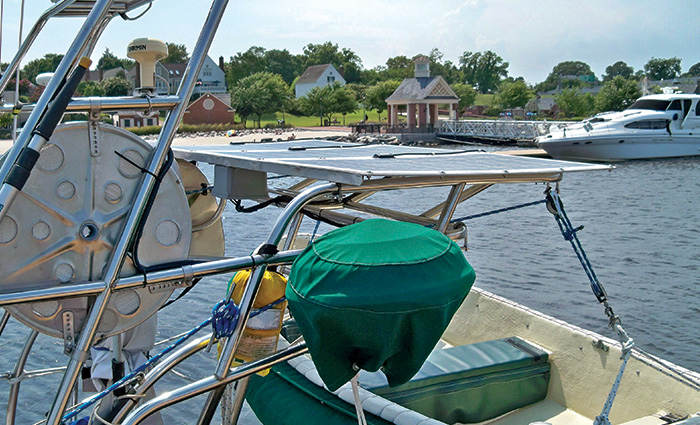
I first embraced the idea of solar power while up a pole (literally) in the Atlantic Intracoastal Waterway replacing dead batteries. It was the early 1980s, and I was maintaining buoys, beacons, and other such Aids To Navigation (ATON) for the U.S. Coast Guard, replacing massive, nonrechargeable batteries with rechargeable solar-powered ones. The higher-ups said the solar rechargeables would last six years – twice as long as the one-shot batteries. As the deck-ape in charge of lugging all those batteries up and down the ladders, my back and I immediately appreciated the whole “free power from the sun” thing, a concept I continue to embrace.
The strategy behind s olar energy onboard is simple: A solar panel converts sunlight into electricity, after which wiring conducts it to your batteries for storage until needed. Solar panels are used to keep batteries or banks charged rather than to power equipment directly. This arrangement allows the panels to store generated power whenever produced, while providing a steady source of power to a piece of equipment even when the panel is producing no power.
While they do require an initial outlay, solar panels can easily pay for themselves in money saved and independence gained over their service life. They’re noiseless, have no moving parts, and they provide free electricity for years with minimal maintenance. Solar panels also have the benefit of being modular, letting you start small and add more as your power requirements increase.
The benefits of solar
Almost any boat can benefit from solar power. Whether at a slip, mooring, or on a trailer, boats can keep their batteries topped off without the need for external power. You can also use solar power to supplement or even replace other onboard charging sources, reducing or eliminating the need to run engines or generators to keep batteries topped off (a wasteful practice that burns fuel while wearing down the costliest pieces of equipment onboard).
While underway, it’s a plus to be able to recharge a dead battery in an emergency – say, to operate a VHF radio or navigation gear. While dockside, solar panels keep batteries charged and vital systems (such as bilge pumps) up and running without the need for shore power.
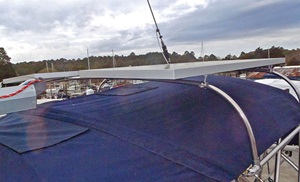
Just about any boat can benefit from solar power, whether it’s to keep batteries topped off or supplement other onboard charging sources.
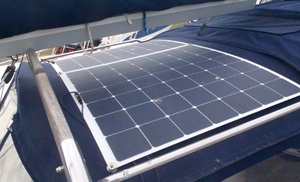
Mount solar panels where they are exposed to maximum sunlight but do not interfere with operation of the vessel.
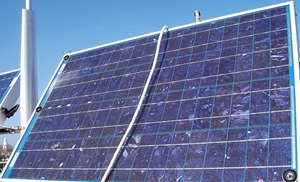
Bottom: Something as simple as the shadow of a line or shroud can reduce or halt output.
Types of panels
Solar panels contain photovoltaic cells – small silicon semiconductor devices that convert sunlight into electricity. Each cell generates between 0.45 and 0.5 volts, depending on exposure to direct sunlight. Cell size determines amperage, with a 3-inch cell producing roughly 2 amps, a 4-inch cell a little over 3 amps, and a 5-inch cell around 5 amps.
Construction-wise, the three main types of solar panels are monocrystalline, polycrystalline, and amorphous (or thin-film) technology.
Monocrystalline panels have been around the longest and remain the most popular. The panels are constructed of thin slices of crystal silicon (each cell is cut from a single crystal) housed in a rigid, aluminum frame and covered with tempered shatterproof glass. The panels have a uniform black, blue, or gray appearance and are generally quite rugged, although they can be cracked or broken if subjected to extreme abuse.
Monocrystalline panels have the longest service life of the three types. With a conversion efficiency of around 17%, they’re also the most efficient and have the highest electrical output per area, but they are also the most expensive.
Polycrystalline cells are sliced from a cast silicon block and have a shattered glass appearance. Built in much the same way as monocrystalline panels, they’re rectangular, giving the panel itself a tiled look. Their life span is similar to monocrystalline panels, and while their conversion efficiency is lower (by 14%), they’re also a bit less expensive.
Amorphous panels are made by placing a thin film of active silicon on a solid or flexible backing (such as stainless or aluminum sheeting) depending on whether the panel is to be rigid-framed and glass-fronted or flexible. Flexible amorphous panels, in which cells are sandwiched between rubber and polymer covers, are light and tough enough that you can walk on them and, in some cases, even roll them up for storage.
This type of solar panel is also better if shade is an issue. With crystalline panels, even the thin shadow of a rope or shroud across one cell can reduce or halt output of an entire module. Amorphous panels have “bypass” diodes that essentially turn off shaded cells and provide a current path around them. Some monocrystalline panels also have bypass diodes, but this feature comes at an increase in cost.
Amorphous panels are the least expensive of the three types, but their efficiency is also lower – around 8%, or roughly half that of a monocrystalline type. This lower output is somewhat mitigated in newer panels, however, which use three-layer construction. Each layer absorbs different colors of the solar spectrum, so the panel will deliver more power longer each day and during lower light conditions than the other two types.
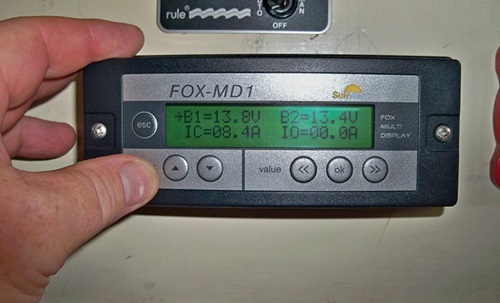
The charge controller should be mounted below decks and as close to the battery as possible.
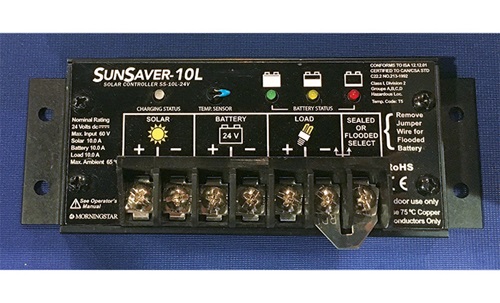
Follow manufacturer instructions for wire connections.
Planning the system
While factors such as cost, mounting options, and output are important, a successful installation depends on knowing what you want the system to accomplish. Is the goal to float-charge a single battery or supplement an overall vessel energy plan? Answering these questions up front will help determine the type, size, and number of panels required.
To understand the process better, let’s walk through the basic steps to determine power requirements and installation considerations for a single solar panel installation. While the example itself is simple, the steps are the same used to plan more complicated installations.
For our example, the goal is to install a solar panel to provide charging for a single 12-volt, 100-amp-hour wet-cell battery used to power an automatic anchor light on a moored vessel.
The first step is compiling a daily power consumption estimate to determine how much solar power is needed.
The daily self-discharge rate for a wet-cell battery is roughly 1%, meaning our 100-amp-hour battery requires one amp every 24 hours just to maintain the status quo. The anchor light draws 50 milliamps per hour of operation, and we’ll assume it operates 10 hours each night. Multiplying current draw (50 milliamps) by hours of daily operation (10) generates a daily energy expense of 500 milliamps or .5 amps.
This means our solar panel must meet a minimum daily energy tab of 1.5 amps – one amp of battery self-discharge rate plus .5 amps of power draw for the anchor light.
Next up is figuring out panel size and the best mounting location. For our example, let’s assume the panel will be a horizontal, fixed-mount installation. A 10-watt horizontally mounted panel should generate between 3- and 5-amp hours per day.
We’ll need at least 13 volts to fully charge our 12-volt battery. As most solar cells generate at least 0.45 volts, you’ll want a panel with a minimum of 33 cells, which should provide around 14.85 volts.
Keep in mind that’s the minimum needed, which may not be enough once you factor in a few cloudy days. Most panels are designed to generate between 15 and 20 volts to overcome problems like cloudy days or inherent electrical resistance within the panel or installation components. While this higher voltage lets you make up for less electrically productive days, it also means you’ll want to install a solar charge controller (voltage regulator) to avoid battery damage due to overcharging.
Attempts to plan a system that tries to use the output of the panel and capacity of the battery to prevent overcharging (and avoid the installation of a charge controller) is false economy and should not be done. The system will never meet its full output potential and, worst case, can damage the battery due to overcharging.
A word on ‘charge controller confliction’
If your vessel has multiple charging sources, such as solar panels and a wind turbine, a crucial but often overlooked consideration is “charge controller confliction.” In short, this is an issue where the charge controller for your solar panel and the charge controller for your wind turbine are internally adjusted to the same maximum charge voltage set point. This means they are constantly fighting each other to be the dominant power source, which results in diminished overall charging output and performance. An in-depth article on this issue can be found at missioncriticalenergy.com (in the website footer, click “Superwind Turbine Manuals & Technical Bulletins.” Under the header “Charge Controllers,” select the document “Resolving Charge Controller Confliction”).
While this article addresses charge controller confliction at remote, off-grid sites, the information provided is also applicable to vessel installations. — F.L.
Location and mounting
Solar panels should be mounted in a location where they are exposed to the maximum amount of sunlight but do not interfere with operation of the vessel or the movement of passengers and crew. Solar panels will typically be either fixed or mounted on some type of movable bracket that allows you to actively point the panel toward the sun for maximum output. Both methods have their pros and cons. Fixed panels (which are normally mounted horizontally) don’t produce as much power as a panel that can be adjusted to face the sun. The downside is that adjustable panels must be aimed throughout the day to maximize their output.
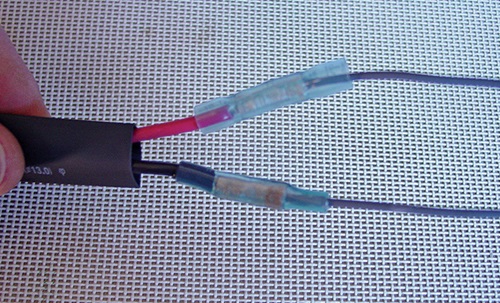
Use good quality, marine-grade heat shrink connectors (top) and liquid electrical tape (right) to create airtight, waterproof seals and reduce corrosion.
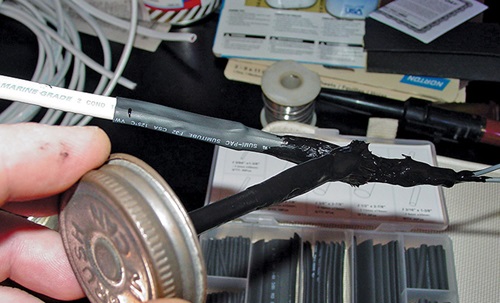
Installation
After choosing and mounting your panel, it’s time to connect it. The first thing you need to determine is the size (gauge) of the wiring to be used. Multiply your panel’s rated amp output by 1.25 (which adds a 25% safety factor). Then measure the length of the entire wiring run, panel to battery, and multiply by 2. Once you have these two numbers, refer to the American Boat and Yacht Council’s (ABYC) 3% voltage-drop table for wire size. Ancor Products offers a handy wire calculator on its website ( ancorproducts.com/resources ).
Always use good quality marine grade connectors and tinned, multi-stranded copper wire with vinyl sheathing. The wire will run from the solar panel to the charge controller first, then to the battery. Try to keep the wire run as short as possible, and if it transits an external deck or cabin house (it likely will), be sure to use an appropriate weatherproof deck fitting.
The charge controller should be mounted below decks and as close to the battery as possible. You’ll always want to follow the manufacturer’s instructions for connections, but in a typical installation you’ll connect the solar panel’s positive (red wire) lead to the charge controller’s positive input wire or terminal and the negative (black wire) lead to the charge controller’s negative input wire or terminal.
Next, connect the charge controller’s negative output to the battery negative terminal and the controller’s positive output to the battery’s positive terminal via an appropriately sized in-line fuse (or circuit breaker). ABYC recommends these be installed within 7 inches of connection to the battery or other point in the DC system. To reiterate, the installation of the charge controller can vary among models, so follow the manufacturer’s installation instructions.
Finally, ensure all connections are waterproof and secure any loose wire runs with wire ties and cable clamps for a neat installation. Then get ready to lean back and soak up some free sun.
Related Articles
The truth about ceramic coatings for boats.
Our editor investigates the marketing claims of consumer-grade ceramic coatings.
Fine-Tune Your Side Scan Fishfinder
Take your side-scanning fishfinder off auto mode, and you’ll be spotting your prey from afar in no time
DIY Boat Foam Decking
Closed-cell foam flooring helps make boating more comfortable. Here’s how to install it on your vessel
Click to explore related articles
Frank Lanier
Contributing Editor, BoatUS Magazine
Capt. Frank Lanier is a SAMS-accredited marine surveyor with over 40 years of experience in the marine and diving industries. He’s an author, public speaker, and multiple award-winning journalist whose articles on boat maintenance, repair, and seamanship appear regularly in numerous marine publications worldwide. Contact him via his YouTube channel “Everything Boats with Capt. Frank Lanier” or at captfklanier.com.
BoatUS Magazine Is A Benefit Of BoatUS Membership
Membership Benefits Include:
Subscription to the print version of BoatUS Magazine
4% back on purchases from West Marine stores or online at WestMarine.com
Discounts on fuel, transient slips, repairs and more at over 1,200 businesses
Deals on cruises, charters, car rentals, hotel stays and more…
All for only $25/year!
We use cookies to enhance your visit to our website and to improve your experience. By continuing to use our website, you’re agreeing to our cookie policy.
America's Most Trusted Solar Marketplace
Please enter a valid zip code.
- Why Solar.com?
- Solar Calculator
- How It Works
- Learn About Solar
- Installer Reviews
- No menu assigned!
Solar Learning Center
--> Solar Pros & Cons
- Lower Electric Bill
- Increase Your Home Property Value
- Gain Energy Independence
- How Solar Benefits the Environment
- Disadvantages of Solar Energy
- Solar Panel Scams
- Time-of-Use Rates (TOU)
--> Solar Panels for Home
- Best Solar Panels
- How Do Solar Panels Work?
- Solar Panel Efficiency
- Solar Inverters
Solar Providers Near Me
- Solar Panel Installation
- Charging an EV with Solar Panels
Community Solar
Solar for condo owners, key solar terms, --> solar panel cost.
- Solar Cost Calculator
- How Much Do Solar Panels Save?
- Solar Panel Installation Cost
- Solar Panel Costs by State
- Solar Cost Per Watt
- Solar Panel Maintenance Requirements
--> Solar Financing
- Buy Solar Panels
- Solar Loans
- Solar Lease
- Power Purchase Agreement
--> Solar Rebates & Incentives
- Federal Solar Tax Credit
- Solar Incentives by State
- What are Solar SRECs?
- Inflation Reduction Act of 2022
- ITC Step Down: Effects on Solar Installation
--> Solar Battery
- How Do Solar Batteries Work?
- Solar Battery Price
- Battery Backup vs Generator
- Enphase Battery
- FranklinWH Battery
- Tesla Powerwall
- LG Batteries
- Off Grid Solar System
--> Solar FAQs
- General Solar.com Questions
- Project Financing
- Creating a Solar.com Account
- Solar.com Bidding Process
- Solar.com Installers
See how much solar panels cost in your area
Zero upfront cost, best price guaranteed.
Solar Learning Center > Solar Panels for Home > Solar Panel Installation Process > Solar Panels For Boats and Yachts Solar Learning Center > Solar Panels for Home > Solar Panel Installation Process > Solar Panels For Boats and Yachts -->
Solar Panels For Boats and Yachts

By Michael Olenick | Jul 26, 2022
The purchase of a boat or a yacht is a coveted purchase for many people. While it certainly adds a new dynamic to one’s life, it’s not the most straightforward investment since maintenance is a huge component of owning a sea vessel. Other than the physical maintenance of your boat, fuel management and maintenance is often a logistical nightmare for many boat owners. Some of these problems include keeping batteries topped off; doing it quietly, as not to bother the surrounding communities; and refueling costs. An easy solution to these problems: solar panels.
Sizing a Solar System for Your Boat or Yacht

- Refrigerator(s)
- Radar & sonar units
When adding up your energy consumption, always round up and add about 10-15% extra Watt-hours to your total, as certain appliances tend to use up more energy during spring and summer months. Once you reach the conclusion that you are ready for a further discussion, you can always reach out to a solar panel expert to get solar quotes, help with your energy calculations, and aid in determining the right number of panels you would need to offset your yacht or boat’s energy usage. Obviously, the number of panels you would need depends on energy usage and vessel size, but solar is a much better option than common fossil fuels when powering your boat.
The Benefits of Adding Solar Panels To a Boat or Yacht
When it comes to adding solar panels to your boat, the benefits are endless. Here are just a few for you to consider:
- Silence: Noisy refueling at docks and extremely loud on-board generators are a thing of the past. Cruise the seas in with zero mechanical noises, and enjoy the natural ocean sounds.
- Minimal Maintenance: The only maintenance solar panels require is a simple rinse off every couple of months, as salt can build up when the seawater evaporates.

- Travel Lightly: With your new panels, you won’t have to lug heavy containers of fuel with you on your trips. More room for wine or martini mix.
- Unlimited Energy: Aside from the occasional cloud in the sky, you will have full access to the sun on the open seas.
Besides the affordability and convenience, solar panels could inevitably save your life. You will never have to worry about running out of fuel when you are out on the water. This will help you avoid any potential emergencies or disasters.
Solar Panel Placement
This is where most caution needs to be taken. When choosing where you are going to place your solar panels on your yacht or boat, you need to take two big things into consideration: shading and security.
When it comes to shading, you want to make sure you place your panels in an area that receives the most sunlight. Having your boom shade some of the panels, or any lines can reduce your energy production. The wiring of solar panels can also be delicate. That is why you need to place your solar system in the most secure spot possible – rough seas or choppy waters could lead to a wire shaking loose.
If you’re longing to make a maintenance upgrade to your nautical vessel, a solar system should be seriously considered. Not only will it reduce noise, weight, and fueling costs, but it will differentiate your boat from all the other vessels at your next port.
Whether you have questions about panel placement, efficiency, or just if your boat is right for solar, please click here to speak to an expert!
Solar Panel Installation Process
More related articles.

Solar Panels on a Flat Roof: 5 Things to Know
Can you install solar panels on a flat roof? Yes, you can successfully install solar panels on the flat roof of your home or business....

How Many Solar Panels Do I Need To Power a House?
One of the first questions homeowners ask when going solar is “How many solar panels do I need to power my home?” The goal for...

What Is the Best Roof Design for Solar Panels and What If...
If you’re looking to go solar at home, chances are you’re going to put those panels up on your roof. Ground-mounted solar is a great...

The Best Roof Materials for Solar Panels - 5 Common Materials
One of the first questions you’ll be asked in the process of going solar is, “What is your roof made of?” Solar can be installed...

How Long Do Solar Panels Last on a House?
Like buying a house, solar panels are a long-term investment. The longer you own them, the greater the return on investment. In fact, if you...

Meet the Energy Companies Topping the Inc. 5000
Last month, the annual Inc. 5000 list was published on Inc.com. The list ranks businesses based on their revenue growth from 2013 to 2016, and...

The Value of Custom Designed Solar Systems
When customers come to us from other installers, they are always hesitant and anxious. Why? Because when you go straight to the installer they give...

3 Questions To Ask Before You Go Solar
Most solar installation companies provide financial projections to homeowners estimating what their savings will be twenty or twenty-five years after the time of installation....

The Influence of Women in the Solar Industry
It’s International Women’s Day! Today we recognize and celebrate women all around the world. As a member of Solar.com’s female population, it’s necessary for me...

Who Are The Best Solar Panel Manufacturers?
You are a savvy consumer who wants to make sure you find the best solar panels for your home. In a lot of instances,...

2021's Top Solar Monitoring Systems
Household solar monitoring systems change the abstracts of power generation and consumption into graphics and numbers you can scroll through on an app. Hardware connected...

2021's Best Home Solar Mounting Systems
Solar panels and backup batteries get all the attention. But there’s another important piece of equipment to the home solar equation: mounting systems. These sturdy...
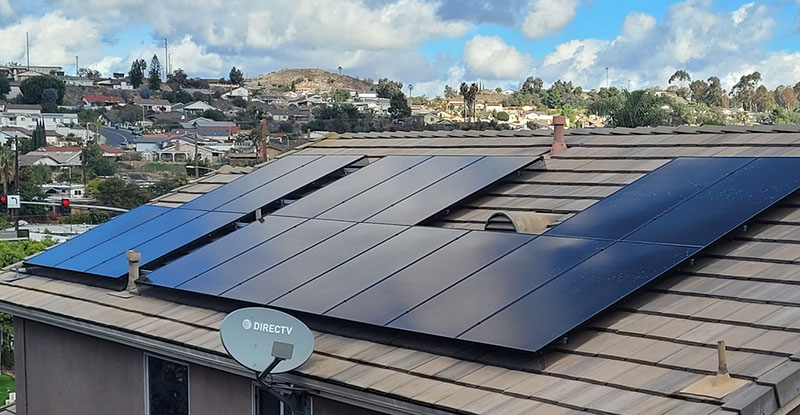
How To Choose The Best Solar Panels in 2023
Solar panels last a very long time and technology is always improving. How do you decide which panel is the right fit for you? Should...

Our Solar COVID-19 Guidelines
Solar.com is committed to providing our customers with the best customer service experience in the solar industry. In light of the ongoing developments around the...

U.S. Installed Solar Capacity: 2 Million Milestone
According to the most recent data released by Wood Mackenzie Power & Renewables and the Solar Energy Industries Association (SEIA), the residential solar market in...

Solar Subcontractors: Should I use one to go solar?
So, you’re interested in starting a solar project and now you’re wondering, “who should be doing the installation work?” Well, more and more companies...

5 Most Popular Solar Panels Chosen by Homeowners in 2018
Homeowners demand a lot from the solar panels they select for their rooftop system. These panels need to look good and perform well over multiple decades! Here...

Better Looking Solar Panels: System Aesthetics Comparison
As a homeowner, solar panel efficiency and cost may not be the only two factors you’re considering when deciding whether or not to go...

Brooklyn Solar Works Solar Canopy: The Comprehensive Review
As everyone knows, space is tough to come by in New York City. The same holds true when designing rooftop solar arrays. The city is...

8 Awesome New Technologies from Solar Power International 2018
Today, the Solar.com team took a break from our solar designs for a quick trip down to Anaheim for Solar Power International 2018. We...

The Essentials of Passive Solar Home Design
In the process of designing a home, there are a number of strategies that can be implemented to minimize the amount of energy required to...

South Korea's Q CELLS to Open Georgia Solar Factory
In the wake of US tariffs on non-domestic solar modules, Q CELLS is opening a solar module factory in Georgia. The South Korean company announced...

What Direction Should My Solar Panels Face?
When you make the decision to install a solar panel system at your home, there are going to be several questions on your mind. How...

India Gets Serious About Solar
According to Indian Prime Minister Narendra Modi, India is on track to install 200 gigawatts of renewable capacity by 2020. The country is fully embracing...

Can My Solar Panels Withstand a Hurricane?
If you live in an area that experiences extreme weather like hurricanes, hail, thunderstorms, blizzards, heavy winds and more, then you should take the...

Why Are Solar Panels Blue?
If you have ever driven through a residential neighborhood in states like California, Arizona, North Carolina, or any of the other top states for solar,...

What Solar Options Are There Besides Rooftop Solar?
When you think of solar, you probably imagine a solar panel-lined rooftop. For many homeowners, rooftop solar is usually the way to go. But it...

Brand Battle: Hyundai vs. Panasonic Solar Panels
Hyundai and Panasonic are trusted brands and they’ve both expanded into the solar panel industry. Offering quality products for two different price points, each brand...

Why New York Loves SunPower Solar Panels
New York loves its Yankees — and its Sunpower solar panels. A recent review of the Solar.com platform showed that homeowners in New York state...

Should I Get a Solar Thermal System Instead of a PV System?
When you hear about installing solar, you’re most likely hearing about PV (photovoltaic) solar cell panels. They’ve become standard in the industry. PV solar cell...

How to Conduct Due Diligence on Your Solar Project
Once you’ve decided to install a solar panel system at your home, the next thing to focus on is conducting the proper due diligence on...

How Utility API Works With Your Utility and Solar Company
Utility API provides software to accelerate the clean energy movement. They do this, in part, by offering secure data on a homeowner’s energy usage to...

What's the Size of a Solar Panel? Solar Panel Size and Weight...
If you are thinking about installing a solar panel system at your home, one of the first things you must consider is how much...

American Solar Panel Manufacturers - 2018 Complete List
There are many reasons why a consumer may want to purchase their solar panels from an American manufacturer or from American Solar brands. They want...

A Guide to Solar Panel Mounts
Solar panel mounts are a common component of almost every solar panel array. Although there are newer solar panel technologies coming out that do not...

Top 5 Solar Panels Selected Through Solar.com in 2017
Curious which solar panels are selected most on the Solar.com platform? As an online marketplace connecting quality solar companies to customers, we stay neutral...

SunPower Solar Panels vs. LG Solar Panels - 2018 Update
SunPower and LG are two of the top companies making solar panels. You’ve probably come across them in your research, and you’re wondering which will...

How Blockchain And Solar Can Work Together
Many would consider 2017 to be the year of cryptocurrency. Coins like Bitcoin, Litecoin, Ripple and dozens of others have shot up 1,000%+ and do...

The Craziest Solar Technologies Coming in 2018
Solar technology has been in existence since 1876 when William Grylls Adams and his student researcher discovered that you can produce electricity by exposing selenium to...

3 Solar Panel Innovations to Look for in 2018
Solar energy is taking shape across industries and geographies. Engineers at top solar panel companies are hard at work developing innovations making solar even more...

6 of the Most Common Solar FAQs
Solar is now more affordable and practical for the consumer than ever before, and because of this, it is starting to make sense to think...

An Overview of Panasonic's Solar Panel Offerings
With all of the advances in the solar industry, it is getting more practical and affordable to start using solar. In fact, the price of...

5 Reasons to Consider a Career in the Solar Industry
Solar energy, unfortunately, is still viewed as an alternate power source. However, in spite of this designation, it is quickly becoming the primary source of...

Installing Solar in Nepal
Working in the energy sector in America can be fast paced. It is primarily focused on reducing homeowners energy bills. Cost is king. My days...

How To Properly Evaluate Solar Panel Companies
There are so many details to take into account when choosing the right solar system for you. One of the most important factors is,...

Installing Solar On Spanish Tile Roofs
Spanish tile refers to the style of the tile, not the material. Spanish tile is usually made of either clay or concrete. Installing a solar...

Invisible Solar Cells - What Are They?
We have come a very long way from the first line of solar panels. Despite their sustainability, the first solar panels were not the most...
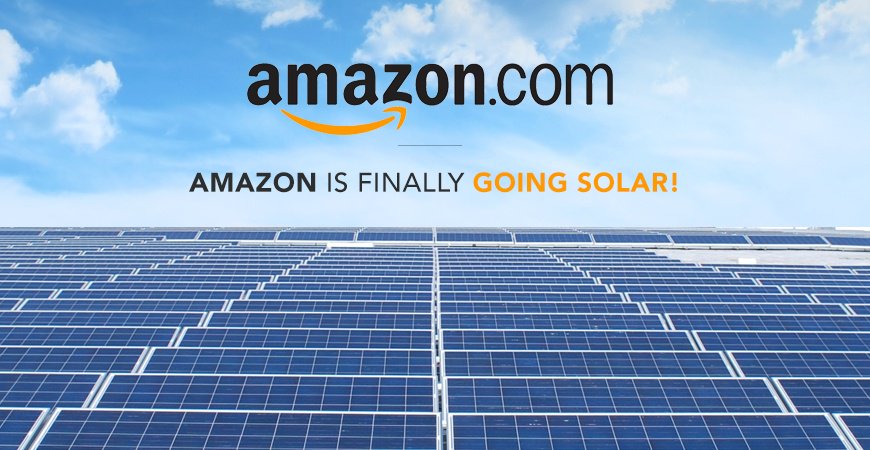
Amazon Has Finally Decided To Become A Leader in Renewable Energy
Back in 2015, Greenpeace did a sophisticated research project on the sustainability of the top tech giants in the United States. It covered many areas of sustainability,...

Solar Backup Power - Will My Solar Panels Work in a Grid...
Solar photovoltaic panels are created to absorb the sun’s energy and convert it to usable AC energy in your home. You may be wondering then,...

A Review of LG Solar Panels - When Brand Name Does Matter
LG is a brand you may already be familiar with. They are a South Korean multinational manufacturer that makes televisions, mobile devices, tablets, smartwatches and...

Will Tesla's Solar Panels Change The Industry?
On October 28, 2016, Elon Musk unveiled Tesla’s solar roof product – a line of roof tiles and shingles with embedded photovoltaic cells. To an...

Electrical Panel Upgrades for Solar: A Technical Case Study
John Smith is a homeowner in California looking to reduce his electric bill by going solar and he decided to call an installation company that...

SunPower Solar Panels vs. LG Solar Panels
If you are considering installing a solar system at your home or place of business, then you have many factors to consider. The paramount factor...
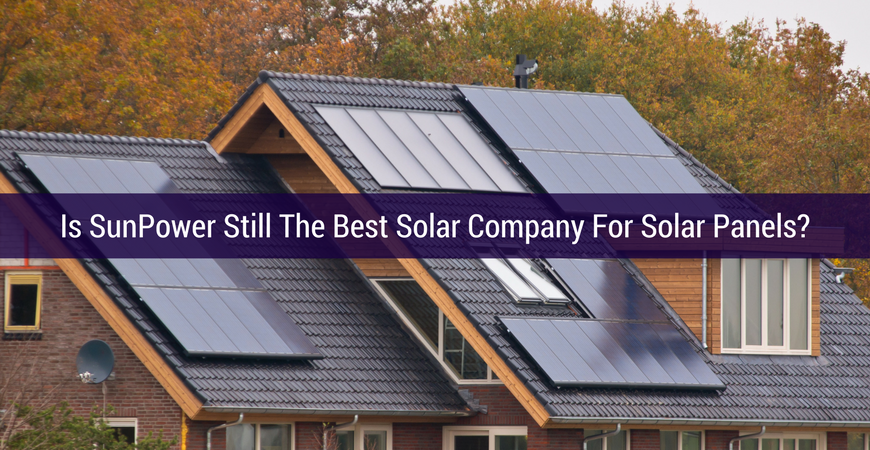
Is SunPower Still The Best Solar Company For Solar Panels?
You’ve heard of SunPower, LG, SolarWorld, Q CELLS, and maybe even Canadian Solar, but which one is the right fit for your home? To figure...

What Trump's Presidency Means for the Solar Industry
The election of Donald Trump to the office of President of the United States is expected to have a profound impact on the future of...

Importance of Power Tolerance in Solar Panels
This paper highlights the importance of power tolerance when choosing solar panels. Power tolerance is a measure of how much electrical power a solar panel...

Gauging the Bankability of Small to Mid-Sized Solar Installers
The entire world is going green and moving toward cleaner sources of energy. California hosts a flourishing solar industry with a burgeoning number of solar...

Ann Arbor Takes Steps to Promote Residential Solar
Home to Michigan’s largest solar panel array of 1.1 MW and one of the top green research universities in the country, Ann Arbor has a...

Measuring Home Energy Use
One of the most important steps before installing home solar is figuring out how much energy your home uses, and how big your solar energy...

Three Things to Avoid When Installing Your Solar Panel System
At Solar.com, we have a lot of experience in the solar panel industry. Every day we help people to install panels on their homes, and...

The Benefits of Floating Solar Panels
Floating solar panels utilize the same technology as the panels that you put on your roof. The main difference is that they’ve been adapted...

The Top Three Solar Manufacturers
At Solar.com, we believe in supplying quality equipment for our customers. In the last twenty years, solar technology has grown exponentially, costs have plummeted, and...

Elon Musk's Gigafactory Should Be Dictating Your Solar Equipment
All solar installations today should be thinking ahead to the not-so-distant future. The main question to be asking is whether your solar system will seamlessly...

The Solar “Tipping Point” is Looming
We all know why people go solar: investment purposes, immediate savings, environmental concerns, and grid independence. But who are these people? One of Malcom Gladwell’s...

4 Mistakes Homeowners Make When Going Solar
Buying a solar system for your home can be a confusing process. At Solar.com we’re committed to helping homeowners sort through it all and...

Solar Installation Horror Story
The following letter is from a very reputable company in Solar.com’s installer network to a homeowner who was unfortunately taken advantage of by an installer...

Bankability: What it Means and Why it is Important for Your Solar...
Homeowners who are considering solar typically overlook the manufacturer of their solar panels, despite this being one of the most important factors for the longevity...

How ‘Big Data’ Will Change The Solar Industry
The U.S. Department of Energy invests in new technology to revolutionize the landscape of solar data. Reliable solar grid data, the true performance of solar...

Los Angeles Solar Installation Permit Process About to Get Easier
Here at Solar.com, we want to see solar panels on every compatible rooftop in the U.S. And while our plans for expansion are ambitious,...
See how much solar panels cost in your area.
Zero Upfront Cost. Best Price Guaranteed.

How To Find the Best Solar Panels for Your Home in 2024
Trying to determine the best solar panels for your home is like trying to determine the best car – there’s no one correct answer. Everybody...

How Does Solar Power Work on a House? Your Questions Answered
How does solar power work? A simple explanation is that solar panels convert sunlight into electricity that can be used immediately or stored in batteries....
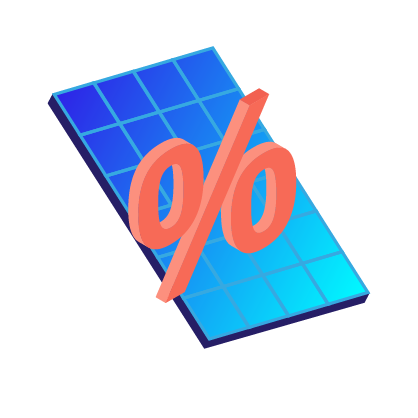
Solar Panel Efficiency - Pick the Most Efficient Solar Panels
You may hear the term “efficiency” thrown around a lot when reading up on solar panels. It sure sounds like a good thing, but what...

Solar Inverters: Types, Pros and Cons
What is a solar inverter? Solar energy doesn’t provide electricity in a format that your table lamp could be powered by. Inverters change the power...

When beginning your home solar project, you might start by searching “Solar Providers Near Me.” Then, you'll be presented with dozens of different solar companies...

Charging Your EV With Solar Panels and Using the EV Tax Credit To Lower the Cost
Ditching your gas-guzzler for an electric vehicle (EV) is a great way to lower the cost and emissions of getting from A to B. But...

It’s no secret that many of us spend a large portion of our income on energy and electricity bills. In fact, in 2012 we spent...

Solar for condominium unit owners is gaining steady popularity throughout the country, as more and more states are writing legislation to promote clean energy accessibility....

Going solar isn't something people do everyday and unless you have an electrical engineering degree, it's likely you'll bump into some new phrases and terms....
Join our free newsletter to learn more about going solar

Silent Yachts
Creators of the world’s first series produced, solar-powered electric yachts.
Unlimited Range
Noiseless cruising, zero emission, minimal maintenance, pioneering solar powered yachting since 2009.
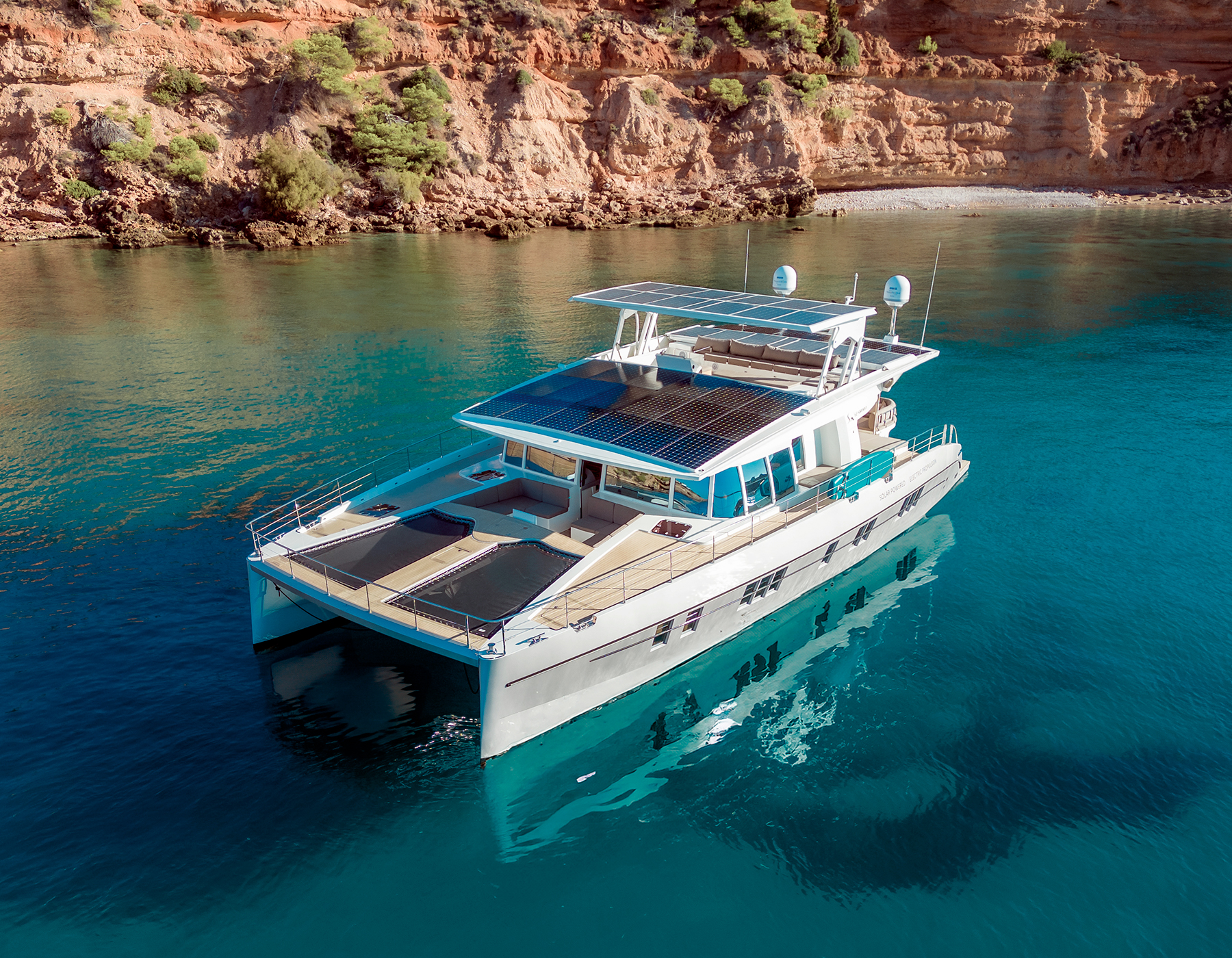
The Original Solar Yacht
As the original inventors of series produced solar-electric yachts, we pioneered this innovative approach. Our first model, the Silent 64, was launched to the market in 2016, several years before any other shipyard considered the possibility of going electric.
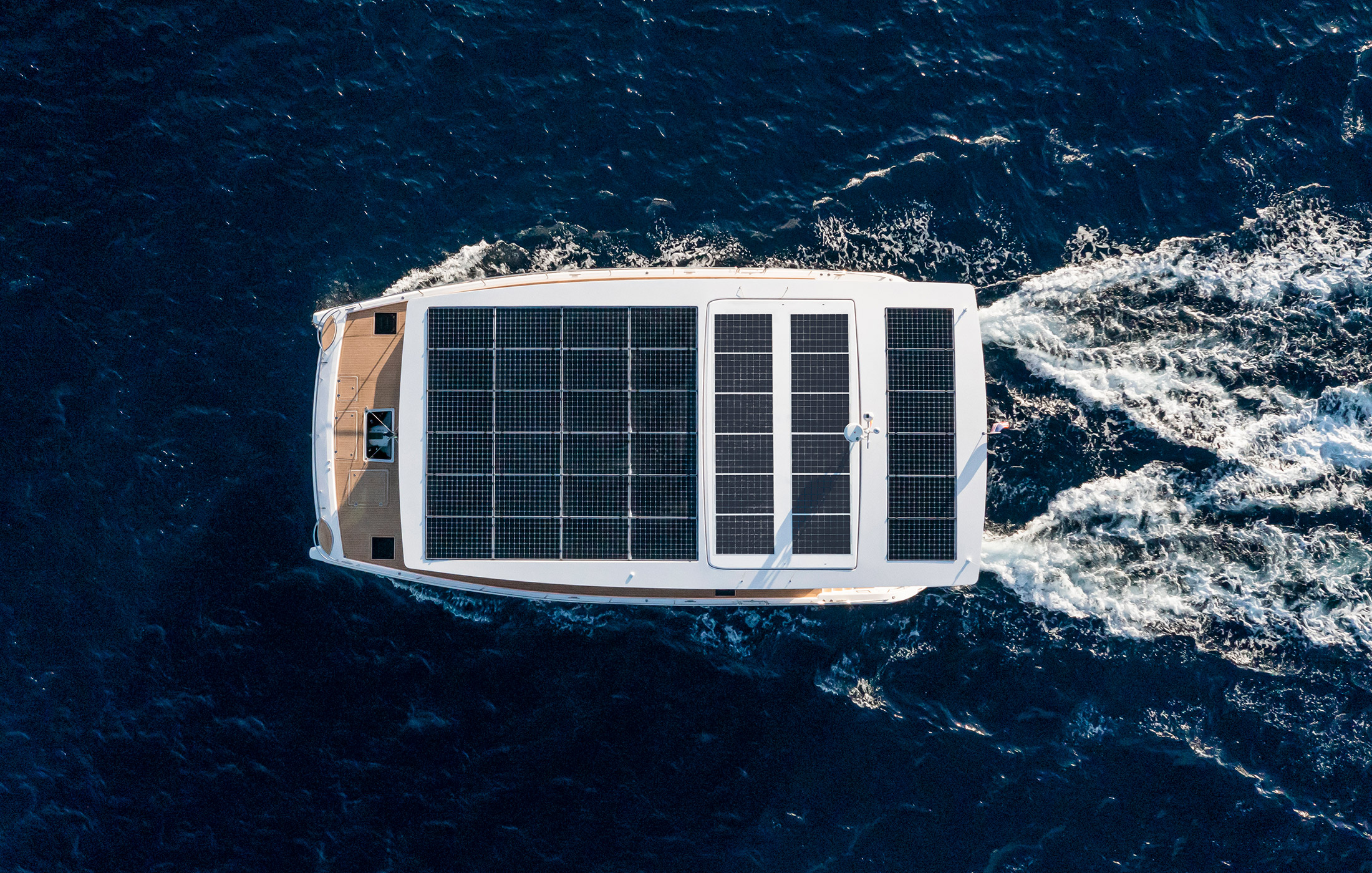
Leading Technology
Our founders began to research alternative energy sources to power yachts during the mid 1990s. Today, the technology of our in-house developed solar-electric drivetrain has been perfected and is multiple generations ahead in terms of reliability, performance and efficiency.
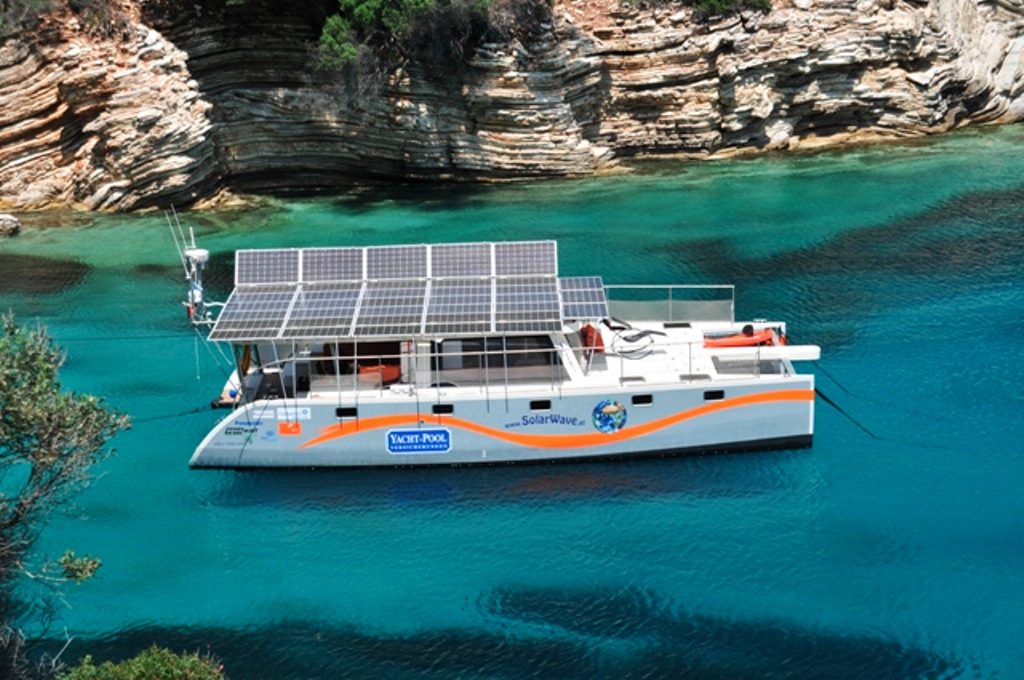
Historical Track-Record
In 2009, the Solarwave 46 was launched as our first prototype of a fully solar-electric, self-sufficient ocean-going catamaran. Since then, our electric yachts have cruised many 10.000s of nautical miles, performing flawlessly during a variety of weather conditions.
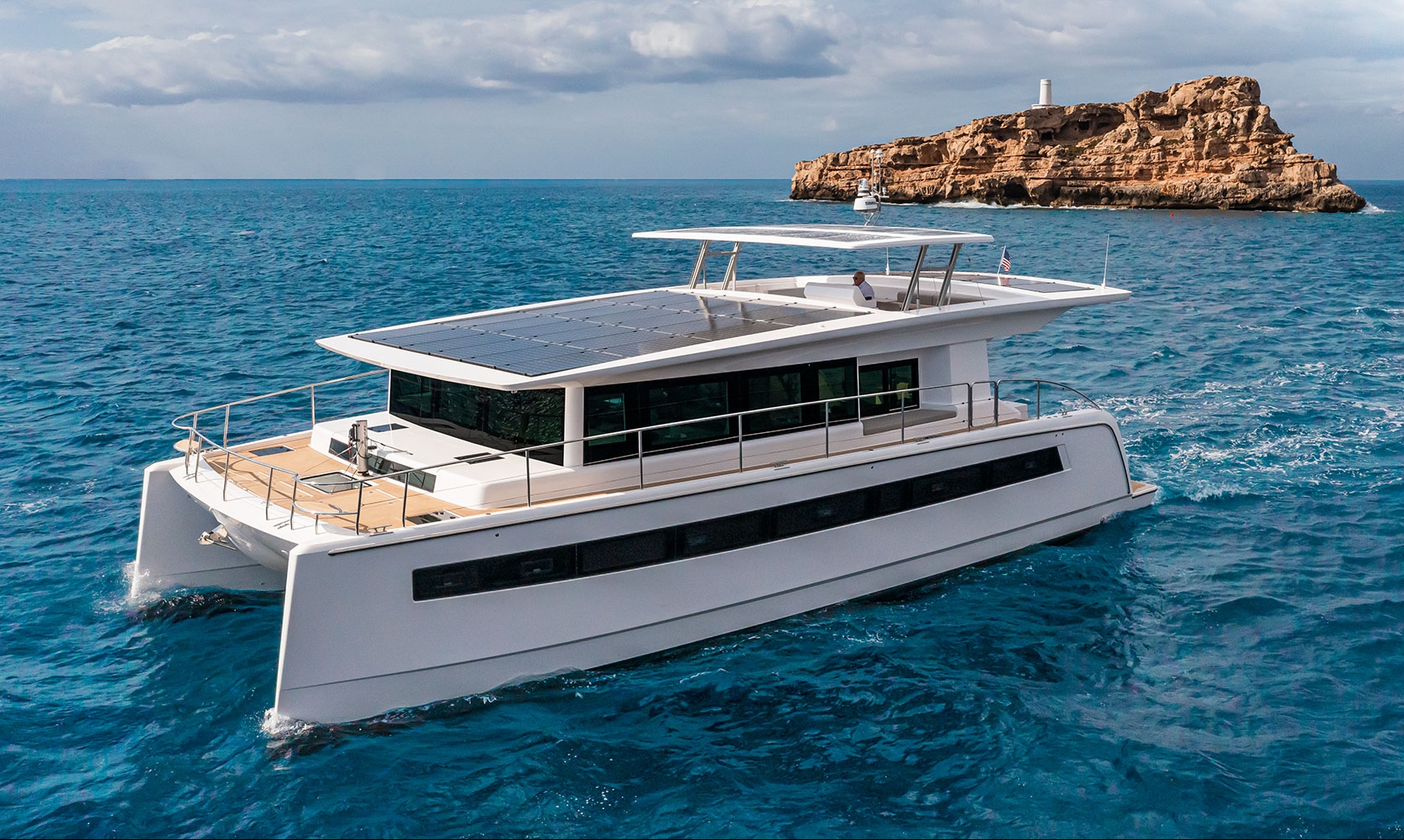
Enabling Self-Sufficiency
What differentiates a Silent is the unprecedented level of autonomy provided by our yachts. Being able to produce your own energy enables a fully self-sufficient lifestyle on board. Travel the oceans sustainably while making them your infinite playground.
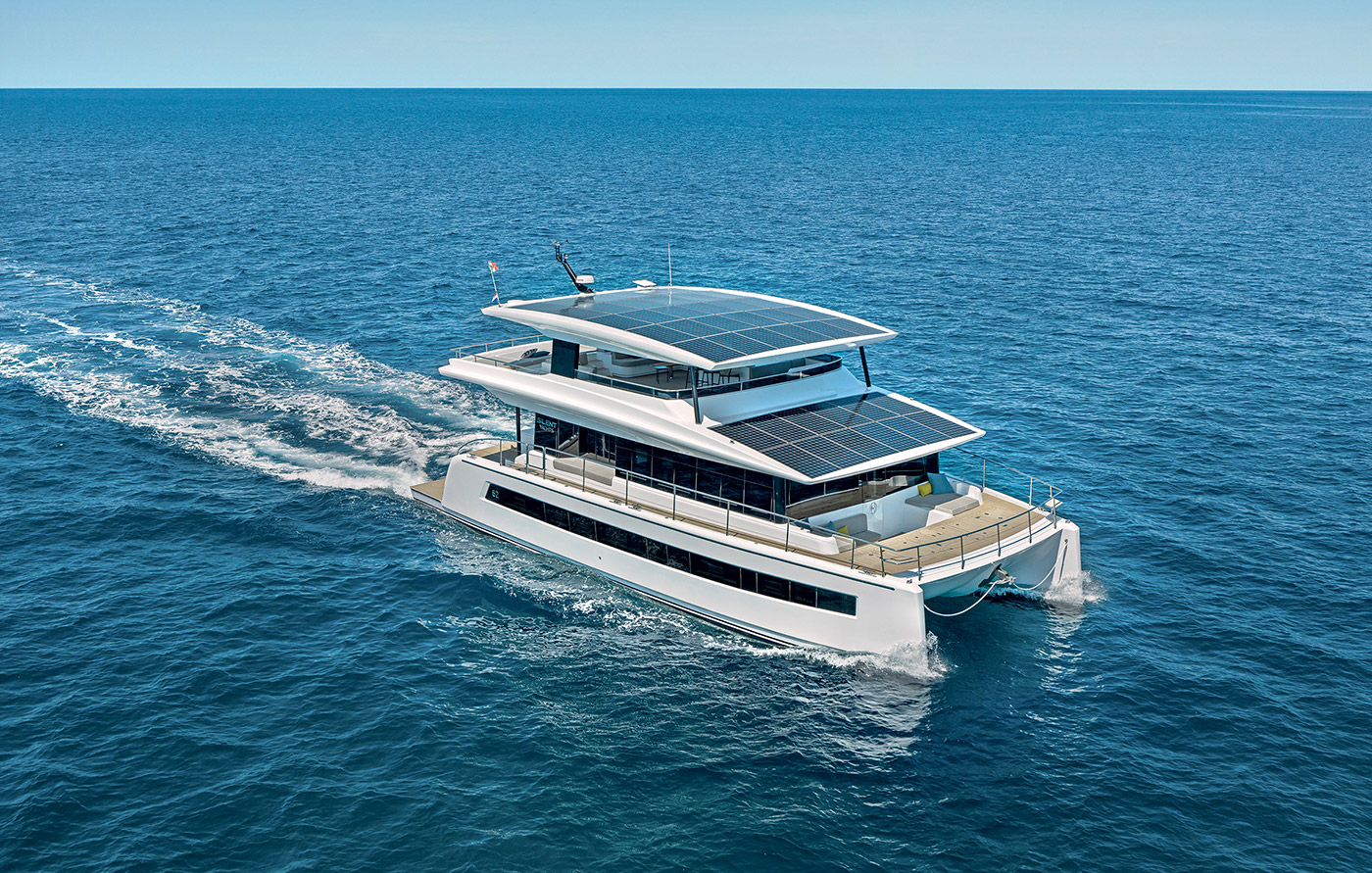
The award-winning entry to solar-electric yachts.
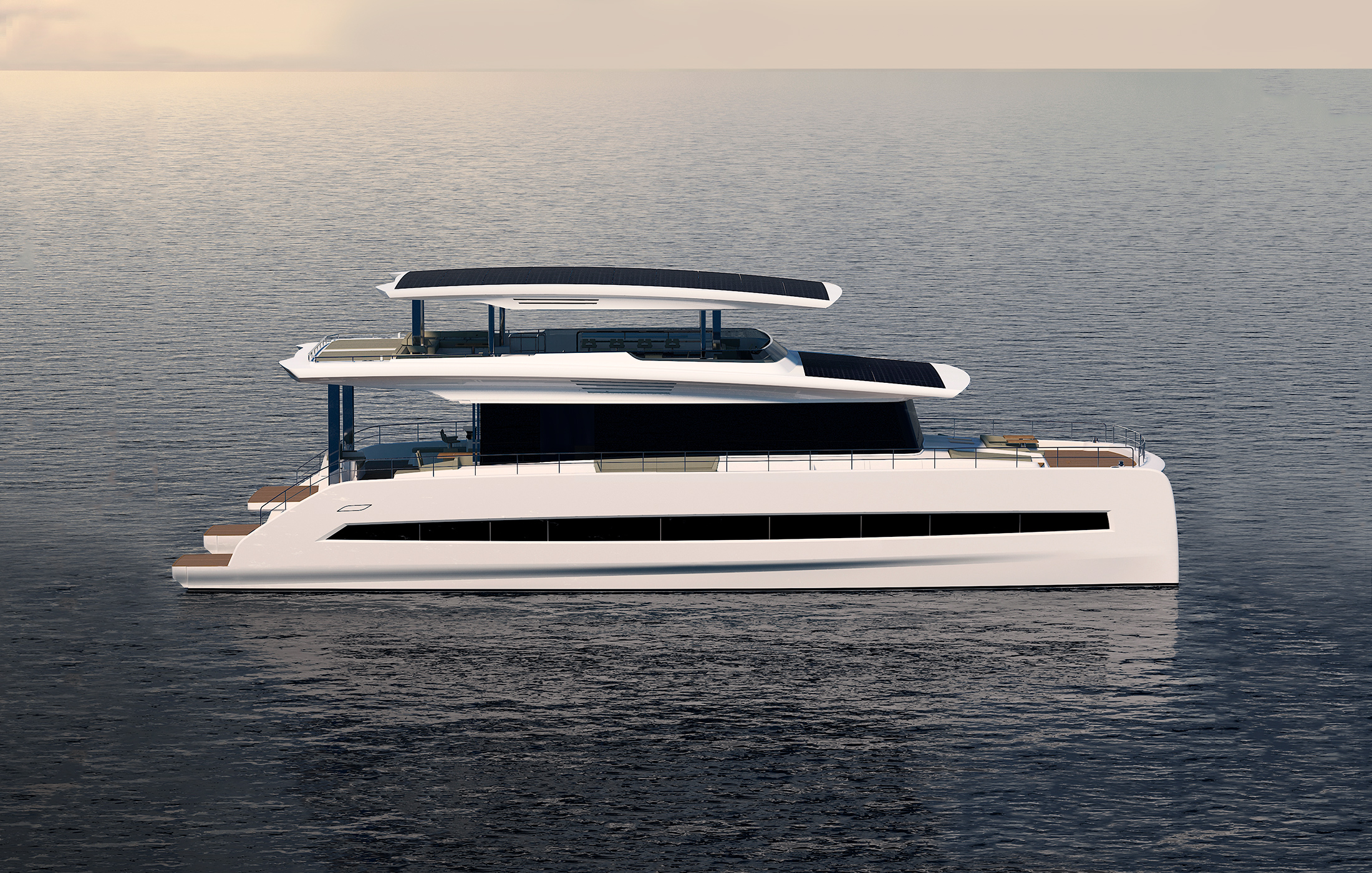
Timeless design meets state-of-the-art technology.
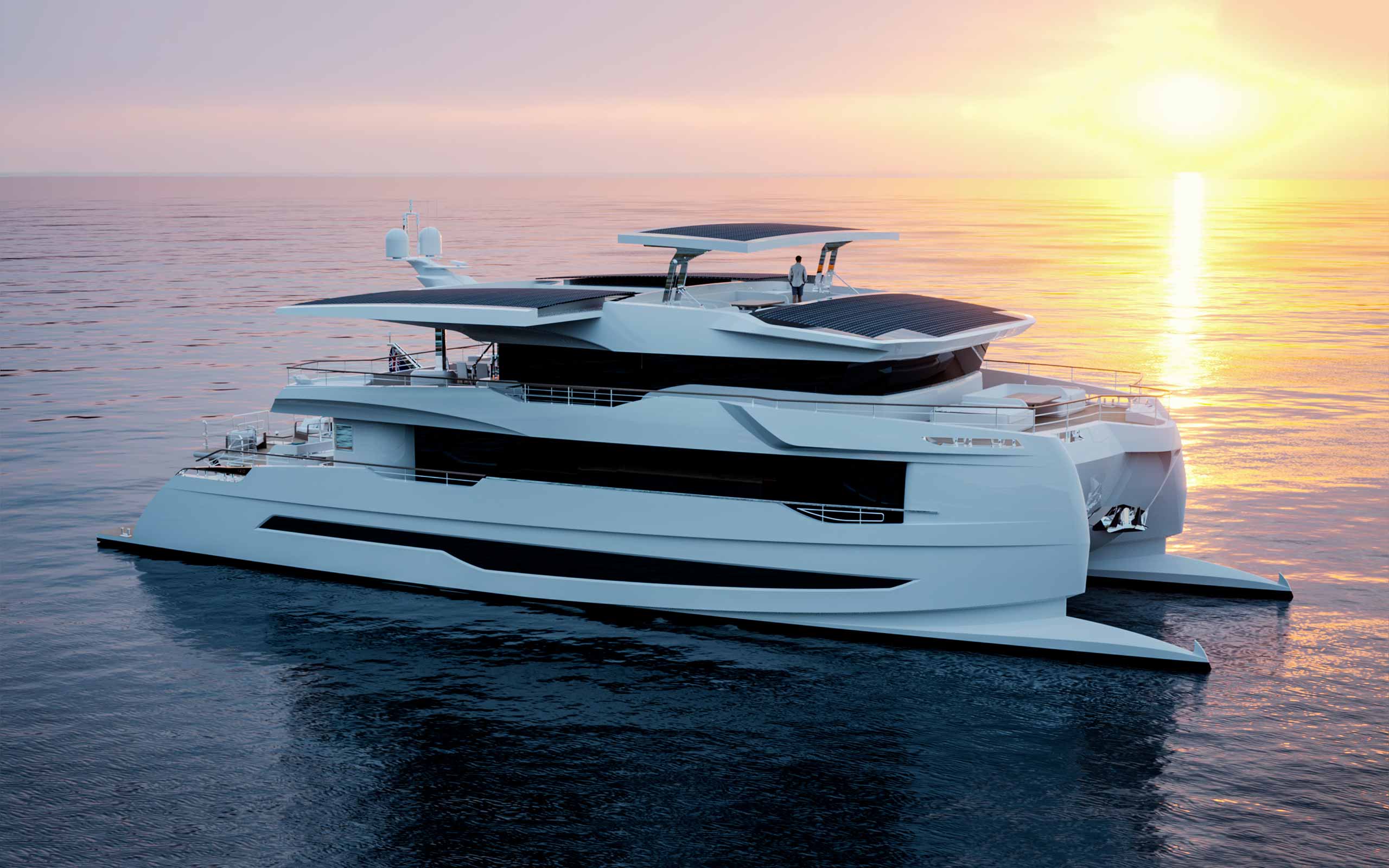
120 Explorer
The boldest expression of solar powered yachting yet.
What Makes Us Unique
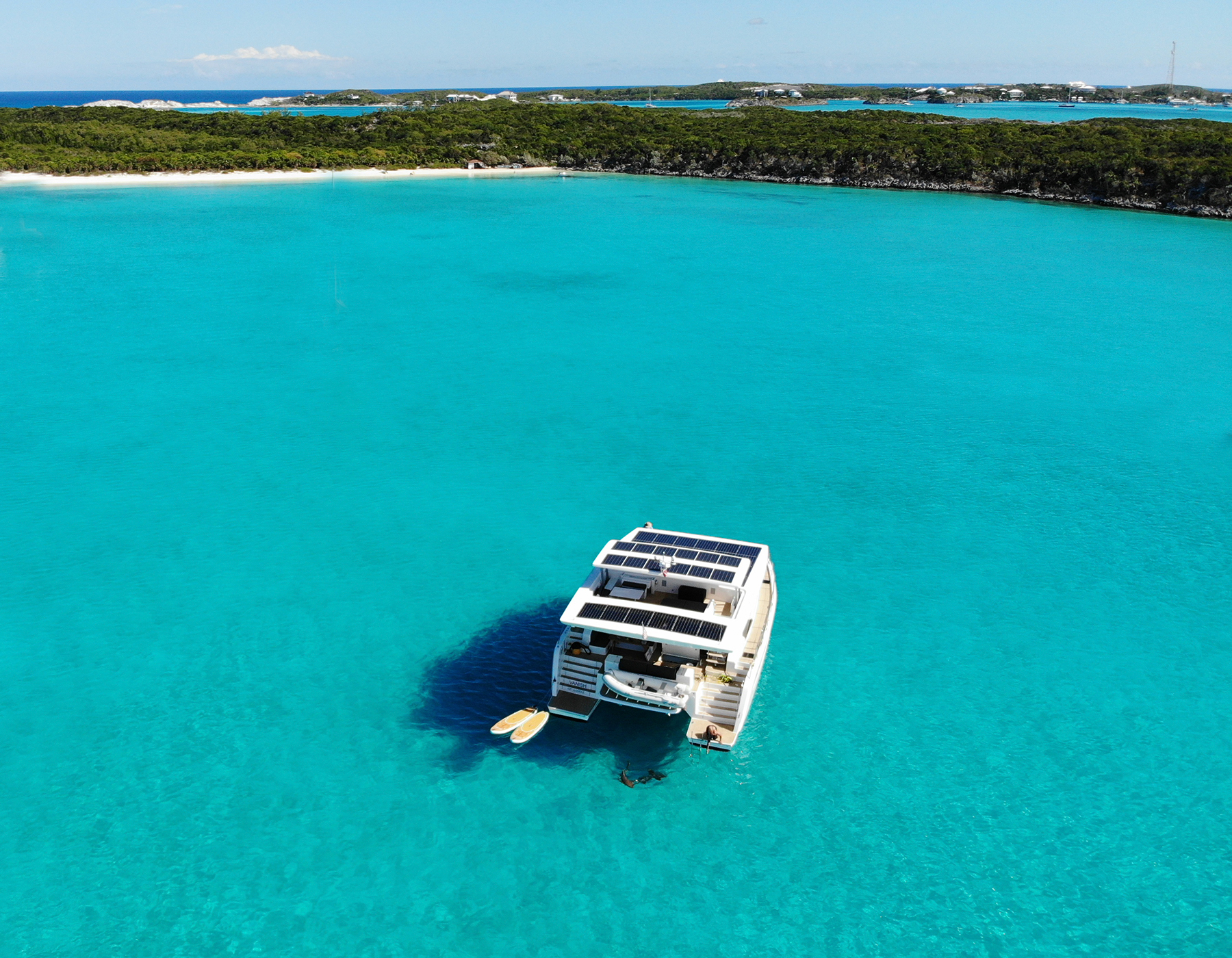
The tranquility on board of our yachts is unique. A lack of noise, fumes and vibrations create a deep connection with the sea. Luxury and sustainability finally merged into a holistic experience, working hand in hand with nature by minimizing the impact on the marine environment without compromising comfort.
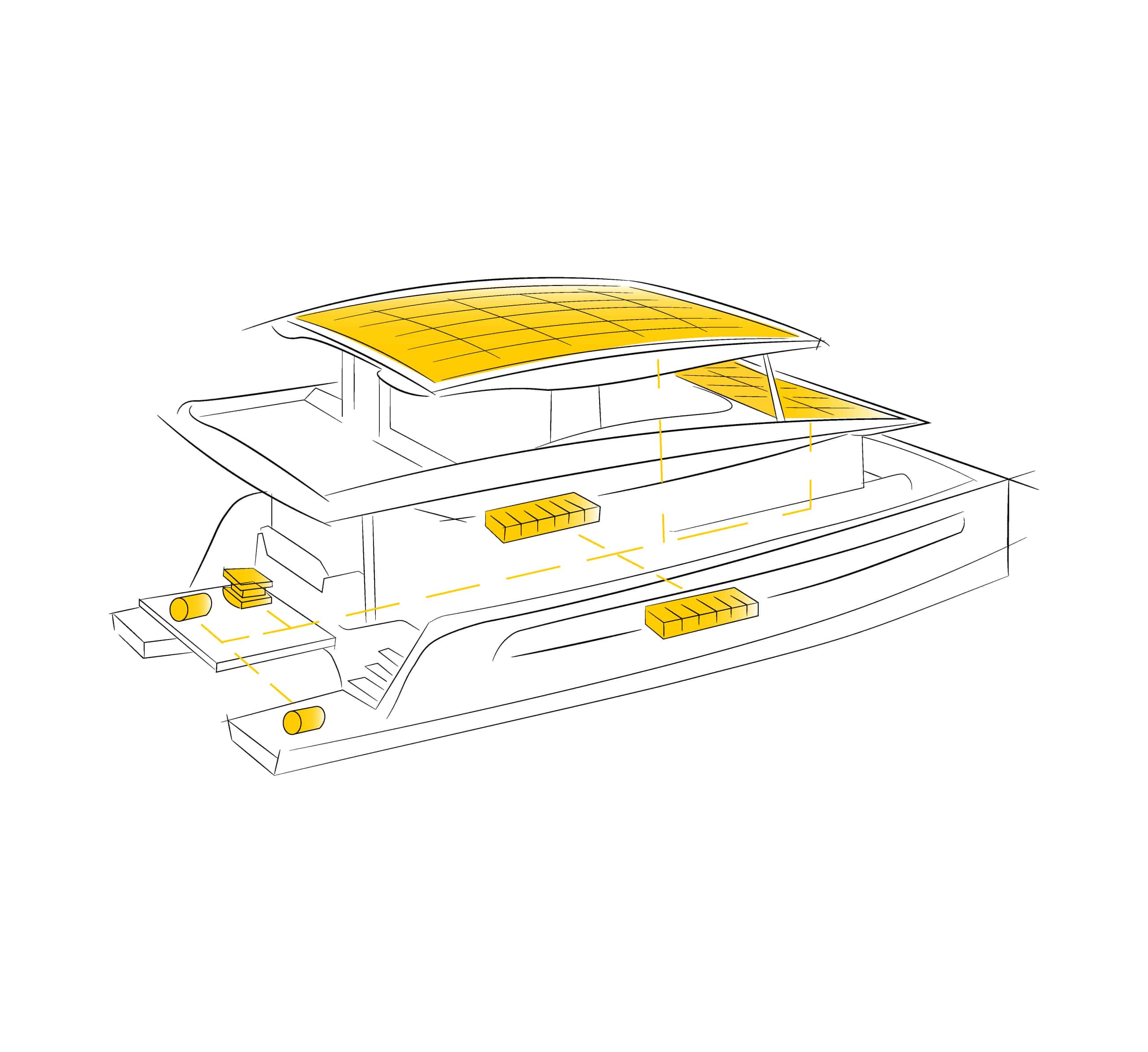
For optimal performance and efficiency, our solar-electric drivetrain integrates seamlessly with all onboard systems. Compared to fossil fuelled powertrains of motoryachts, electric powertrains have very few moving parts, resulting in minimal maintenance, maximum reliability and significantly lower running costs.
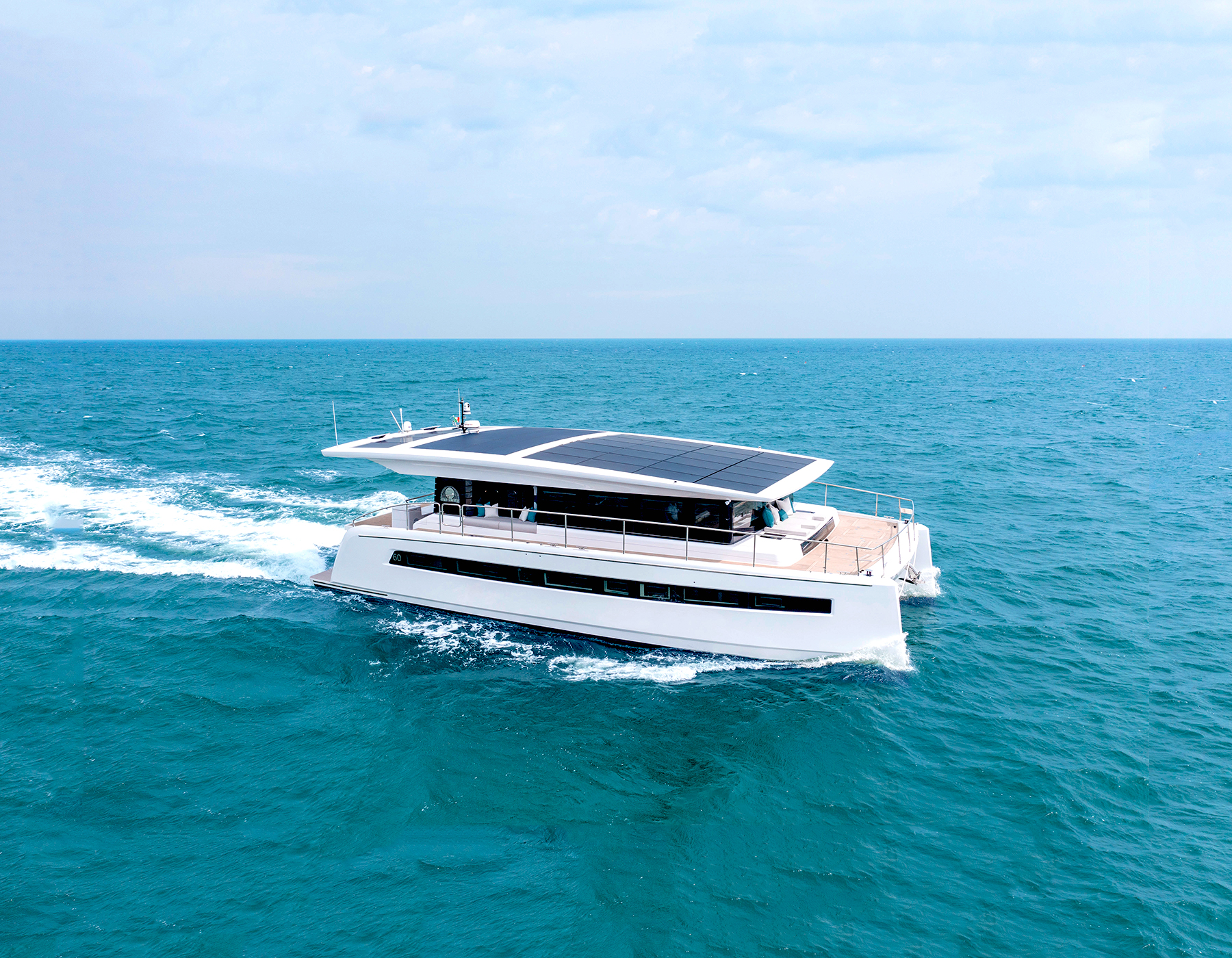
The ability to recharge your own batteries with the sun marks a new era of freedom. Depending on cruising speeds and weather conditions, a Silent has virtually unlimited range, enabling you to live a fully self-sufficient lifestyle on board. Unbound by the limitations of fossil fuels, you are free to explore the horizons.
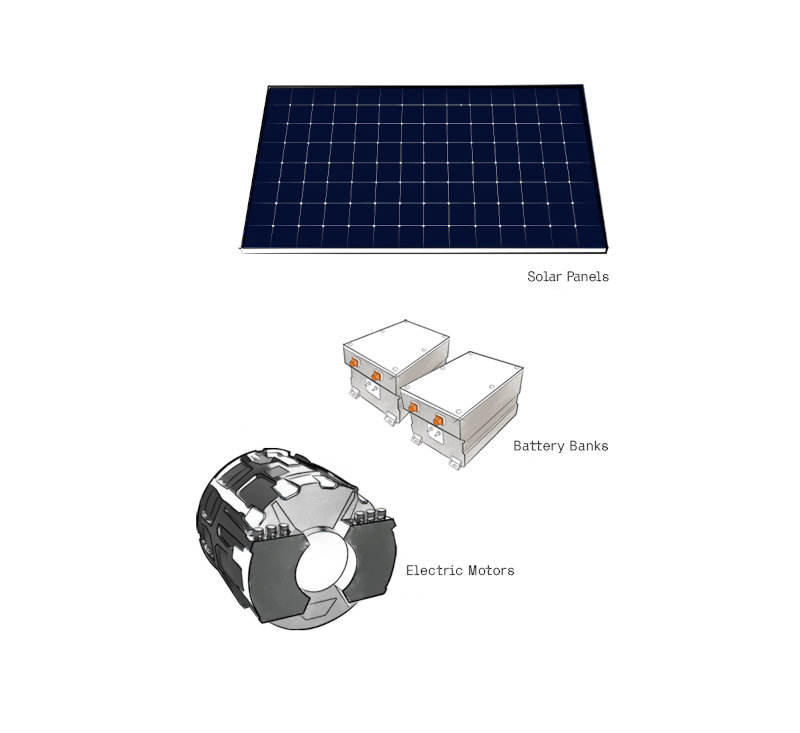
The technology powering our yachts today has been pioneered by our founders almost three decades ago. Continuous upgrading and steady optimization of the entire system are some of the key reasons our in-house developed solar-electric drivetrain offers a comprehensive portfolio of assurances and warranties.
Why Silent Yachts
A sensible approach to yachting which works in self-sufficient harmony with nature and creates a completely new experience on board.
Tech Corner
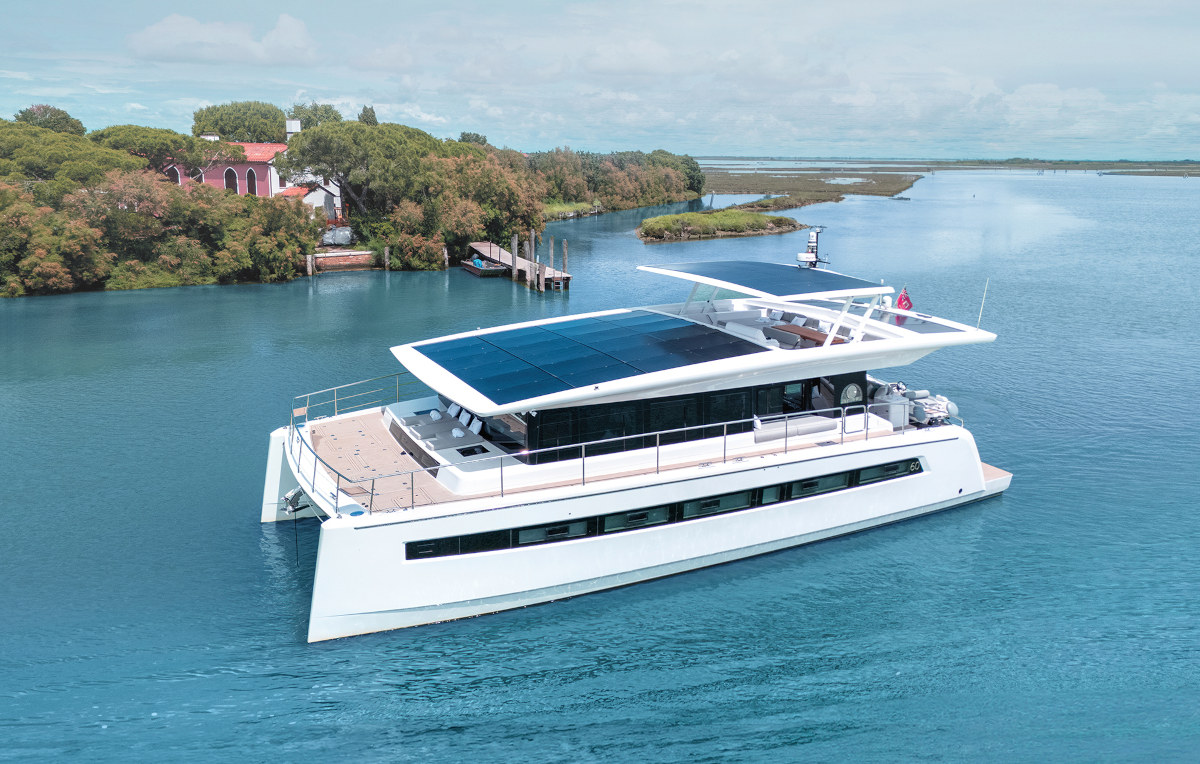
Why a Solar Powered Yacht?
Let’s break down the advantages of harnessing the sun’s energy for yacht propulsion: solar power offers remarkable efficiency, significant environmental benefits, and an unmatched synergy with the yachting experience. Join us as we dive into the future of sustainable yachting and discover how solar-powered yachts are revolutionizing the seas.
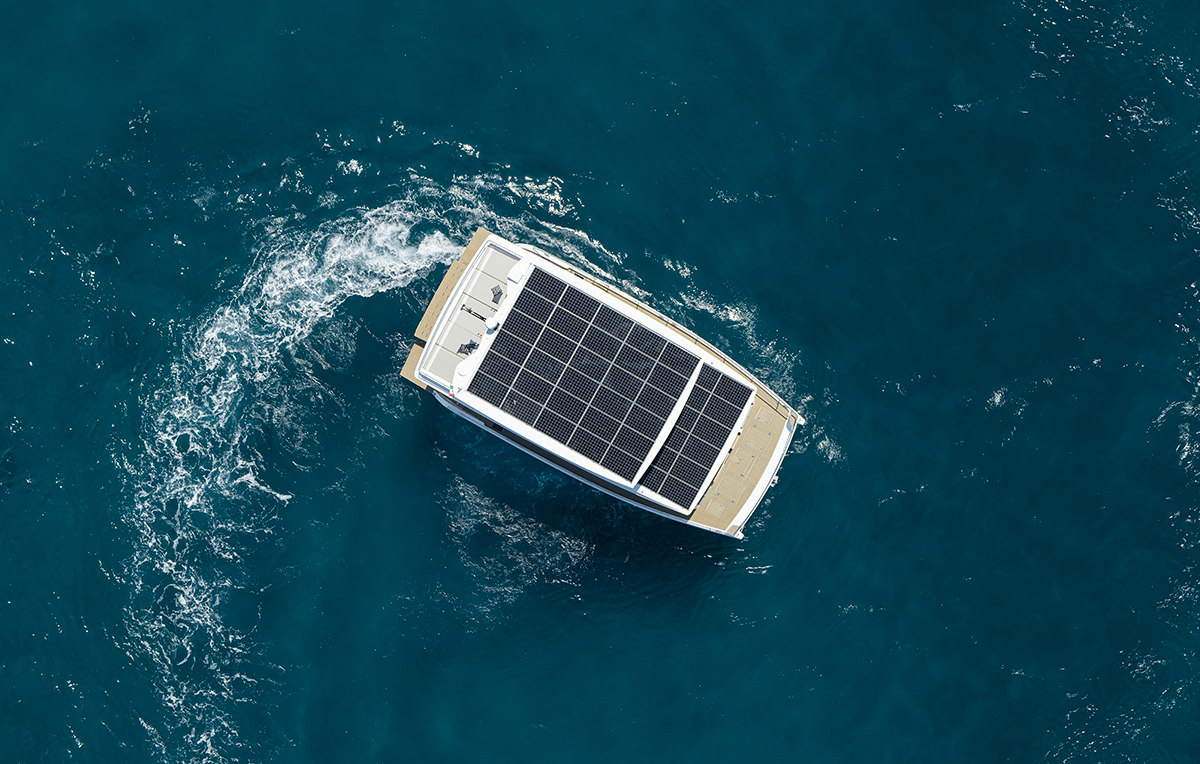
Living on a Silent 62 Solar Electric yacht
Silent Yachts’ range is designed to harness the power of the sun, providing green energy and silent cruising. But what can owners truly expect? How much power does the Silent 62 use while cruising? In this article, we evaluate a typical day onboard the Silent 62, based on actual data from our yachts.
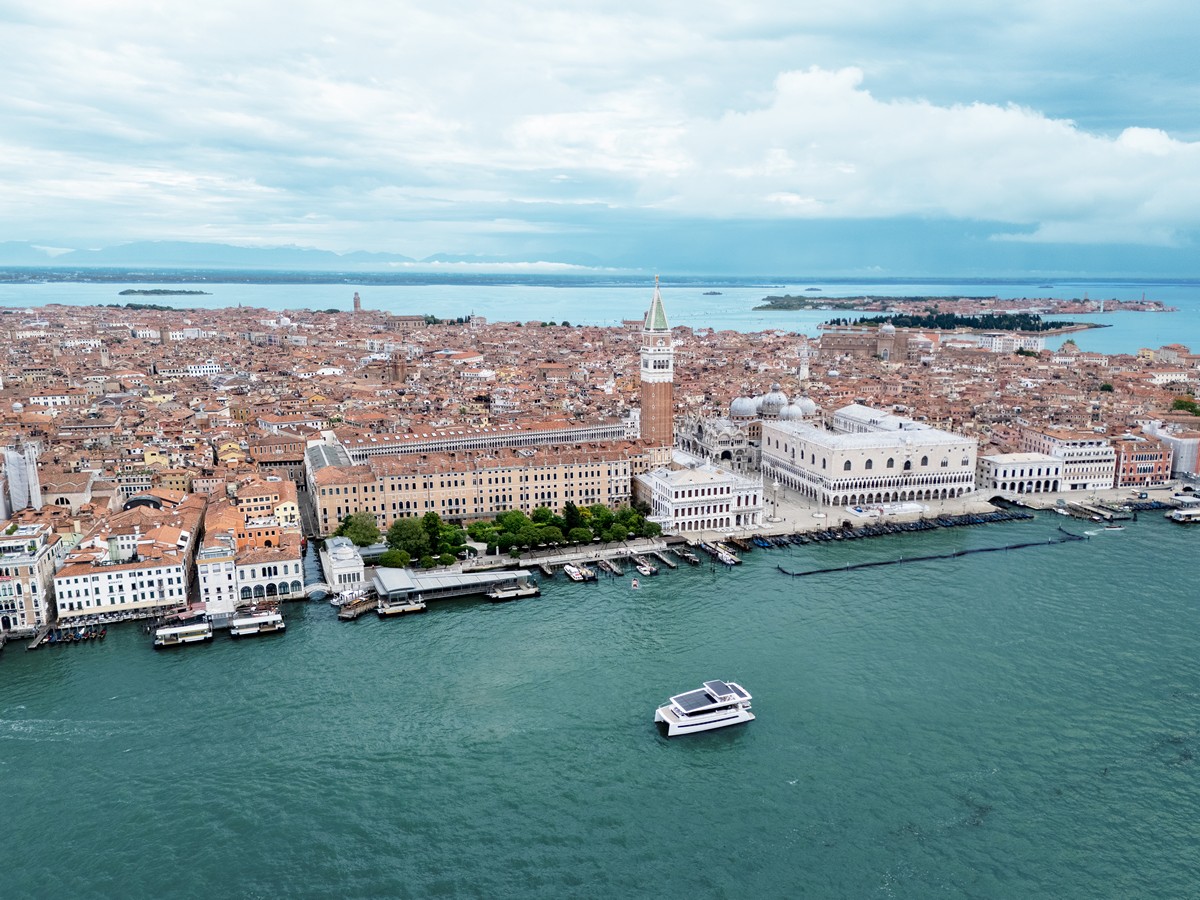
Silent Yachts’ shining debut at the Venice Boat Show 2024
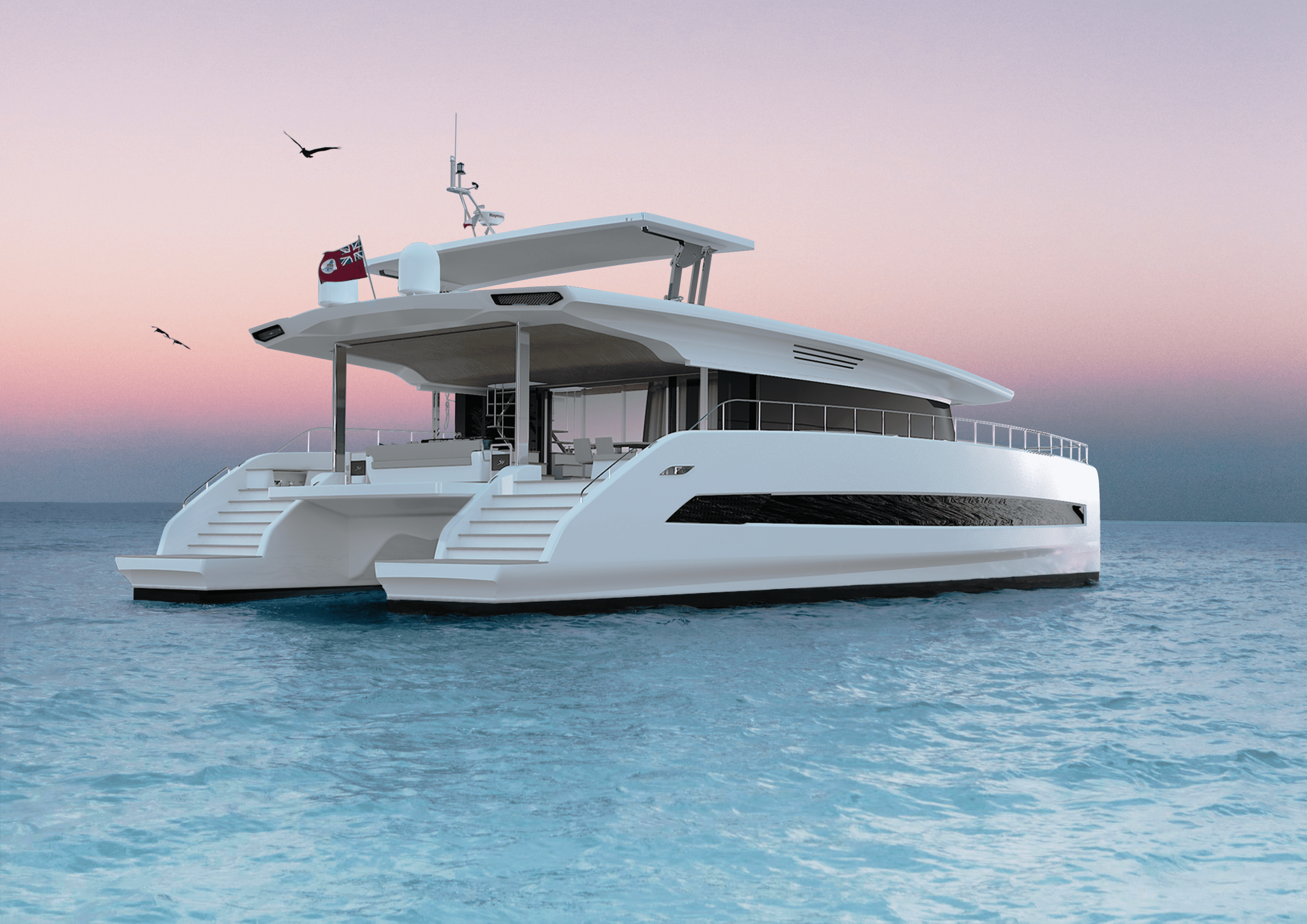
Silent-Yachts emerges stronger under new ownership
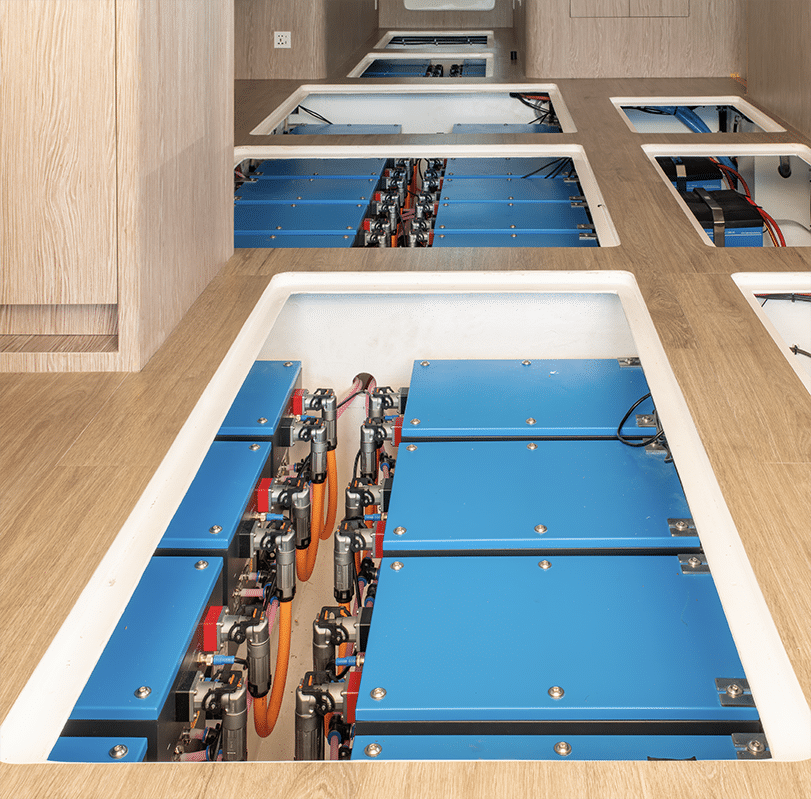
New Silent Drivetrain

Tech shorts 2023
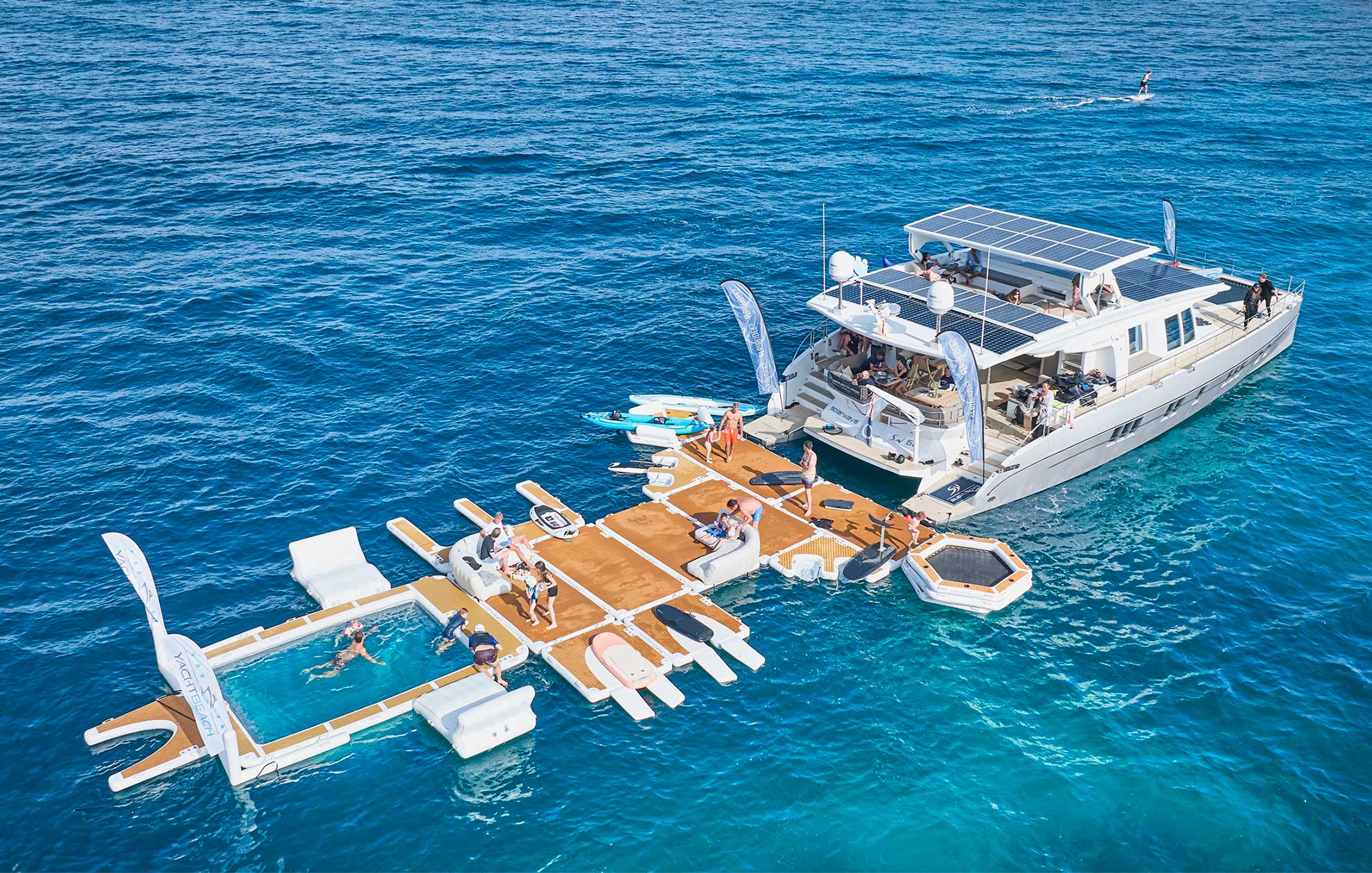
Electric power event on the water

Shipyard tour Italy by Michael & Heike
“The Tesla of the seas! An amazing founding couple, a highly innovative product as well as a really cool story behind it. Furthermore, a lot of love and attention has been invested into every single detail – truly impressive!” Frank Thelen / TV Personality, Founder, Angel Investor & Disruption Expert
While the present has brought us the dawn of smart cars, I strongly believe the future will bring us solar powered smart boats – and I definitely want to be at the frontline of that journey. Michael Jost / Former Head of Group Strategy of Volkswagen Group
The idea of sailing while charging your own battery is super powerful to me – solar powered sailing is the perfect love story! Jochen Rudat / Former Tesla Central Europa Director, Advisory Board Silent Group
Elon Musk single handedly forced an entire industry to go electric, as a matter of fact if they don’t all go electric now they will soon die. I would like to see the same thing happening for boating. You are not just selling boats – you are the actual leading edge of a crucial and much overdue revolution to sustainable transport!” Klaus Obermeyer / Emmy Award Winner
I am completely excited about solar catamarans. I knew before they are great but now I truly believe this is the future. After so many boats I’ve seen in over 18 years with Boote Exclusiv, this yacht truly blew my mind. Such a silent and peaceful cruising experience – just the way it should be. Martin Hager / Editor in Chief for Boote Exclusiv - Yachts

Updated 7 months ago
Everything you need to know about installing solar panels on boats
Written by Ana Almerini
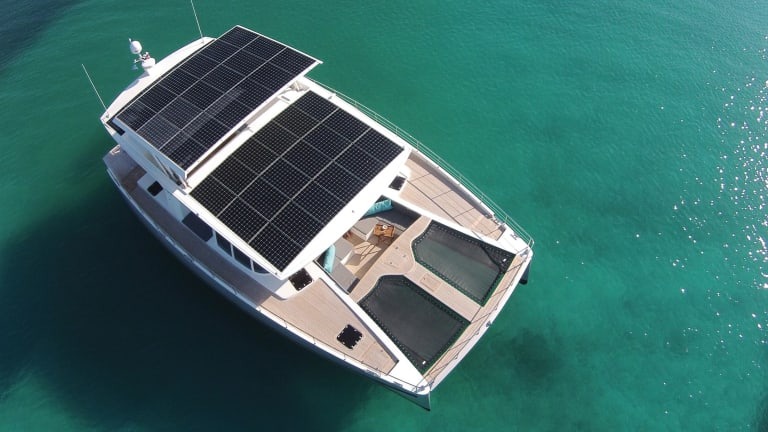
Find out what solar panels cost in your area
Solar panels built specifically for use on boats are a great option as a source of backup power when you’re out on the water. Solar panels act as a way to recharge the boat's batteries and keep your appliances running, all without needing to buy gas for a noisy gas-powered generator.
Marine solar panels are a relatively niche market, but there are plenty of options to choose from since typically, you can install any DIY off-grid solar panel on your boat.
Our favorite solar panels for boats are:
Topsolar flexible solar panel
Renogy 100W 12V solar panel
SunPower 170W solar panel
Below, we get into the best solar panels to buy for your boat depending on your needs, how to determine which size you will need, and why utilizing solar power for your boat is a smart idea.
Key takeaways
Solar panels on your boat maintain your battery’s charge to ensure that your appliances always have power, without a loud and expensive gas generator.
An average 30-foot boat will need about 350 watts of solar power to maintain electricity.
To determine how many panels your boat needs, you need to figure out how much power it uses, which you can easily do with a battery monitor. It also depends on how big your boat’s battery is.
You can install solar panels in unique locations on your boat but it is important that they can track the sun’s movement throughout the day.
What is the best use for boat solar panels?
Boats use a lot of energy for things like maintaining autopilot, keeping navigation lights on, and powering radio systems. Solar panels can provide the energy to carry out these tasks and maintain your boat's battery if it happens to be sitting idle. In either circumstance, your battery will never run out of energy.
Not to mention, compared to gas-powered generators, solar panels have the added benefit of being quiet. They also don’t produce excess heat that makes sitting in your boat with a gas generator unpleasant on hot days.
You can use solar panels for any size boat. For smaller sailboats, the main job of your solar panels would be to keep the battery fully charged for your boat’s electricity. For larger boats, they help reduce or eliminate the need to use the engine to provide excess power.
The average 30-foot boat would require about 300-350 watts of power . Depending on your energy use and boat size, you need more or less solar power to provide you with electricity.
How to choose the right solar panels for your boat
The first step to determining what size solar panel will work for your boat is figuring out how much power your boat is using . You can do this by checking the labels on your appliances for the typical amp hours and volts used.
Or, you can use a battery monitor to measure the amount of energy your fridge, lights, or the other appliances on your boat consume while in use. After finding the amp hours your boat uses per day, you can determine the wattage of power your solar panels need to produce.
Appliance | Power consumption | Power use (8 hours) |
|---|---|---|
Mini fridge |
| 800W |
Lightbulb |
| 480W |
Fan |
| 720W |
| : | 2,000W |
This example is extremely limited, you will need to determine how much energy your entire boat is using to make sure your panels provide enough power to keep your battery charged. But, technically if you had one 300-watt solar panel, or (3) 100W solar panels, they would generate 2,800W over those 8 hours. That energy would be more than enough to keep the above appliances running.
The size of your boat’s battery will also factor into which size solar panel you need . For instance, many DIY solar panels are meant to act as a battery charger to a 12-volt lithium battery, which is the typical size within a boat. But if you have a larger boat with a larger battery, you might need more than 350 watts of power.
Additional things to consider are whether you will need a charge controller and if you have enough unshaded space for your solar panels to absorb the maximum amount of sunlight.
Do you need a charge controller?
A charge controller acts as a regulator for the amount of energy that is transferred from your solar panel into your boat’s battery. This helps to make sure that your battery is not overloaded and overcharged, which can ruin the battery over time.
While it is not necessary, it is a good idea to install a charge controller with your solar panel system to help manage the energy load that your battery receives. This will prolong the life of your battery while ensuring your boat uses the exact amount of energy it needs.
Do you have enough space for boat solar panels?
Having a dedicated spot on your boat that has access to the full sun is key. Any shading, such as from a sail on your boat, will reduce the amount of energy your panels produce. While simply bringing portable solar panels aboard is an option, permanently mounting the panels to your boat makes it easier to always have your panels ready to go.
Because boats typically only have room for a small solar system, getting the most out of your limited space is key. With limited space, it’s best to look for high efficiency panels because you will need less of them to produce the energy you need.
Learn more : What are the most efficient solar panels in 2022?
Or something as simple as the setup below can power your boat's battery and be angled towards direct sunlight throughout the day while not taking up valuable space on the boat.
What are the best solar panels for boats to buy?
Any type of panel can be used on a boat such as monocrystalline, polycrystalline or thin-film. However, it is important to note that some companies exclude salt water and marine environments from their warranties.
We've listed some options below, you can choose based on where you have space to put the panels. For instance, thin-film panels are less efficient but they are flexible. So if you wanted to place a few panels on your boat’s roof versus one panel taking up valuable space, thin-film panels would be a good choice.
On the other hand, monocrystalline and polycrystalline panels have higher efficiency ratings and will ensure you get the most energy from your limited space or during low-light conditions. So if you have a location that can support racking, monocrystalline or polycrystalline solar panels are a better option.
Below are some of our top picks for solar panels for boats:
Most practical
Topsolar flexible solar panel
Cost : $149.99 Buy Now
The Topsolar 100W flexible solar panel is a practical, semi-flexible, cheap option. It does not come with a charge controller or an inverter but you can buy a few of these to create a simple solar panel system on your boat.
This flexible panel also allows you to utilize more space since this can be molded to fit untraditional angels on your boat.
Best quality, small cost
Renogy 100W 12V solar panel
Cost : $103.44 Buy Now
The Renogy 100W 12V solar panel is a great option. At 21%, it is a high efficiency monocrystalline panel manufactured by a reputable solar panel company.
There are pre-drilled holes for easy drilling to a mount on your boat. If you have space to secure solar panels to a mount, the Renogy panels will help you maximize energy output.
Best overall
Cost : $399.00 Buy Now
The SunPower 170W panel is a great flexible solar panel for off-grid use. Choose this option if you are interested in the versatility that a flexible solar panel offers and also want a reputable brand name with a high efficiency rating.
While these panels do not come with a solar charge controller, they must be used with one, so add one to your cart like the Victron Energy SmartSolar MPPT charge controller .
Why solar panels are a good choice for backup power on boats
Having a source of backup power on a boat is very important, you do not want to be caught far from land with a dead battery. Solar energy is the perfect choice because on a typical boating day, there is ample sunlight available as renewable energy. Because boats rely on a battery for electricity, a solar panel can ensure that this battery always has power.
There are many solar panel options available for your boat and can easily be installed DIY. They will help with your sense of security while saving money because you can skip out on the traditional gas generator and rely on a self-sufficient solar power system.
Ana is the Marketing & Communications Manager at SolarReviews, working within the solar industry since 2020. With a Master's in Climate and Society and professional experience in marketing, she helps communicate the value of solar to homeowners and build awareness of the SolarReviews brand. On weekends you can find her at the Jersey shore, reading a book from the ever-increasing stack on her side table, or eating food someone else cooked....
Related articles

- Multihull Sailor
- Real Estate
- Maintenance & Hardware
- Water Sports
The Different Types of Solar Panels for Boats
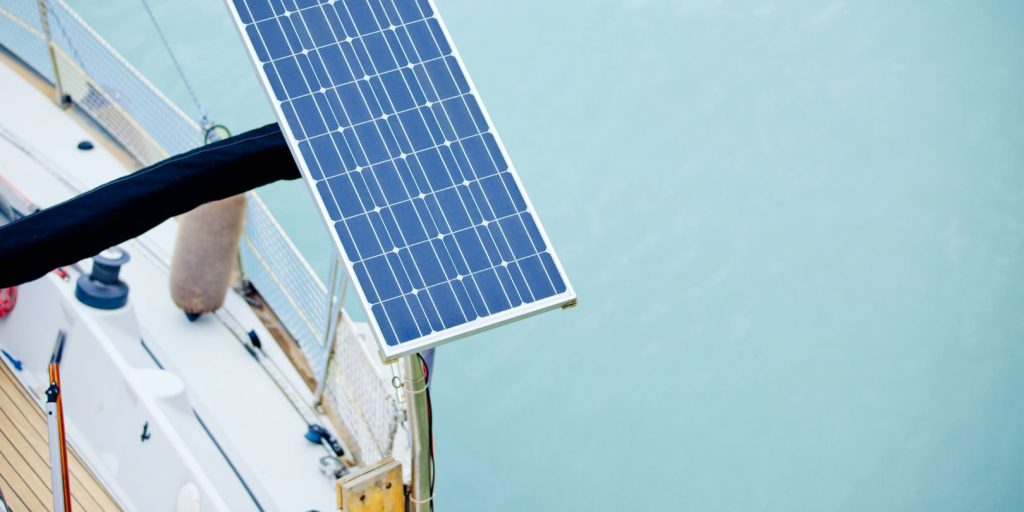
- 1 Monocrystalline Solar Panels
- 2 Polycrystalline Solar Panels
- 3 Thin-Film Solar Panels
- 4 Amorphous Solar Panels
- 5 Semi-Flexible Solar Panels
- 6 Rigid Solar Panels
- 7 Conclusion
Related Posts
As the world’s focus on sustainability intensifies, the allure of harnessing solar power for various applications, including marine settings, has grown significantly. For boat owners and enthusiasts, embracing solar panels offers a gateway to a greener and more self-sufficient way of navigating the open waters. The sun’s natural energy can power boats, reducing reliance on conventional energy sources and minimizing environmental impact.
In this blog, we delve into the diverse world of solar panels for boats , exploring the advantages and characteristics of each type. Whether you sail the vast ocean or cruise along tranquil rivers, understanding the array of solar panel options available will empower you to make informed decisions in embracing renewable energy and charting a course toward a more sustainable future on the waves.

Monocrystalline Solar Panels
Monocrystalline solar panels are known for their efficiency and sleek design, making them popular for boat owners seeking maximum power output in limited spaces. These panels are made from a single crystal structure, allowing them to convert sunlight into electricity efficiently. Monocrystalline panels boast an excellent power-to-size ratio, making them perfect for boats with limited roof or deck space. While they tend to be more expensive than other types, their durability and efficiency make them a wise long-term investment.
Polycrystalline Solar Panels
Polycrystalline solar panels are another prevalent option for marine applications. Unlike monocrystalline panels, polycrystalline panels have multiple crystal structures, slightly reducing their efficiency. However, they are more cost-effective to manufacture, making them a budget-friendly choice for boat owners. Polycrystalline panels are bulkier than monocrystalline panels, so they may require more space for installation. If you have ample deck or roof area on your boat and are looking for an economical solar solution, polycrystalline panels can be an excellent choice.
Thin-Film Solar Panels
Thin-film solar panels are highly versatile and lightweight, making them an attractive option for boats. They are created by depositing thin layers of photovoltaic material on various substrates, such as glass, metal, or plastic. Thin-film panels have lower efficiency than crystalline panels but perform better in low-light conditions, making them suitable for overcast or shaded areas on the boat. The flexibility of thin-film panels allows for easy installation on curved or irregular surfaces, making them an ideal choice for boat owners who value adaptability and space efficiency.
Amorphous Solar Panels
Amorphous solar panels, a subset of thin-film technology, are created by depositing non-crystalline silicon on a substrate. They are highly durable, lightweight, and flexible, making them a perfect fit for marine applications. Amorphous panels perform well in low-light conditions and have a better temperature coefficient than crystalline panels, meaning their efficiency drops less in hot environments. While they may have a lower efficiency overall, their ability to generate power in diverse conditions can be advantageous for long journeys or unpredictable weather conditions.
Semi-Flexible Solar Panels
Semi-flexible solar panels offer a middle ground between traditional rigid and thin-film options. These panels feature a thin layer of solar cells embedded in a flexible plastic or polymer material. Semi-flexible panels can conform to curved surfaces, making them suitable for mounting on boat decks, cabins, or sails. They are lightweight and easy to install, often requiring adhesive rather than bolts. While their efficiency might not match rigid crystalline panels, their versatility and ease of integration make them popular among boat owners.
Rigid Solar Panels
Rigid solar panels, typically monocrystalline or polycrystalline materials, are the most common type in various applications. While they are less flexible than other options, they remain a reliable and efficient choice for boats with ample deck or rooftop space. Rigid panels are durable, weather-resistant, and can deliver higher power outputs. They are ideal for boats with higher energy demands, such as those with multiple electronic devices or appliances.
Solar power is revolutionizing how we generate energy, and boats are no exception to this transformation. As boat owners seek eco-friendly and cost-effective solutions to power their vessels, solar panels offer a reliable and sustainable answer. Understanding the different types of solar panels available for boats is crucial in selecting the right solution for your needs, considering factors like space availability, budget, and desired efficiency. Whether you opt for monocrystalline, polycrystalline, thin-film, amorphous, semi-flexible, or rigid solar panels, embracing solar energy will propel your boat toward a greener and more independent future on the water.
Article Contributors
Sail magazine review team.
SAIL Magazine Review Team reports on best-selling products in sailing and boating. SAIL Magazine is reader-supported: When you buy through links on our site, we may earn an affiliate commission. Artificial Intelligence (large language models) may have been used in the research and creation of the content.
To ensure questions about product testing or a specific article are addressed, please contact [email protected]
672 Wine Club
- Motorcycles
- Car of the Month
- Destinations
- Men’s Fashion
- Watch Collector
- Art & Collectibles
- Vacation Homes
- Celebrity Homes
- New Construction
- Home Design
- Electronics
- Fine Dining
- Benchmark Wines
- Brian Fox Art
- Disneyland Resort
- Ka La’I Wakiki Beach
- Kalamazoo Grill
- Raffles Hotels & Resorts
- Sports & Leisure
- Health & Wellness
- Best of the Best
- The Ultimate Gift Guide
How Zero-Emission, Solar-Powered Yachts Entered Boating’s Mainstream
Yacht builders are designing zero-emissions yachts to compete with diesel-chugging rivals. they're so quiet you can hear dolphins swim by., shaun tolson, shaun tolson's most recent stories.
- The 25 Best US Golf Courses That You Can Actually Play Now
- Fore! The 5 Best Golf Simulators to Perfect Your Game at Home
- Justin Thomas on Defending His PGA Title, Golfing With Michael Jordan and His Legendary Man Cave
- Share This Article

For many years, yacht builders adding solar panels to their boats discovered those panels would typically power a few things like the electricity and galley, and if they helped with propulsion, it would only carry a boat so far. In the last few years, new companies and boat-builders have emerged that are proving solar can be the main source of power—a big deal considering that most yachts are solitary creatures that are entirely reliant on a specific form of propulsion. No boaters wants to be 50 miles away from civilization in a turbulent ocean and suddenly see their engines go out. It’s not like they can call AAA.
Related Stories
- SpaceX’s Polaris Dawn Mission Returns Safely to Earth After Its Record-Breaking Flight
This New Catamaran Concept Was Designed to Carry Your Bugatti Across the High Seas
The shipyard that built the ‘titanic’ has filed for bankruptcy.
The problem was that most yacht builders were sticking panels into yachts that were never designed to be self-sustaining. Boyd Taylor realized that several years ago as he was conceptualizing solar-powered catamarans for his company Serenity Yachts . Near the end of 2019, Taylor oversaw the launch of the Serenity 74, with almost 1,200-square-feet of solar panels. Those panels support all of the yacht’s onboard functions, while it cruises at 9 to 11 mph indefinitely.
The yacht functions so capably—using only solar power—because Boyd and his team of engineers started from the water up. They created an electrical system designed to only use solar energy. “We started with the solar system and built the rest of the boat around it,” Boyd told Robb Report.

Soel Yachts is one of the latest builders to introduce a solar-powered catamaran for emissions-free cruising. Courtesy Soel Yachts
Once the electrical system was in place, Serenity Yachts ’ team of naval architects and engineers designed a lightweight boat made of carbon-fiber weave, not pure fiberglass. Taylor says a fiberglass boat that size would weigh 8 tons more. Despite that emphasis on lightweight design, a Serenity Yacht still features interior accents and design materials that mean luxury. Granite countertops, for example, are built around a honeycomb structure, so only a thin layer of granite is needed.
Other boatbuilders have gained traction in the marketplace, as well. Soel Yachts , a Dutch company founded in 2011, recently launched its Soel Senses 48, a 48-foot pleasure craft that can sail at a top speed of 21 mph and cruise up to 56 nautical miles at 14 mph. Like Serenity, the Soel Senses 48 was designed for “high-efficiency electric propulsion,” as the company states—in other words, it was designed from the very beginning with solar power in mind.
Silent Yachts is one of the leaders in the solar-powered yachts industry, having just launched an 80-foot tri-deck catamaran that is powered by more than 1,200 square feet of solar panels.

Serenity’s 74-footer makes use of the catamaran’s wide beam, while adding windows across the entire upper salon. Courtesy Serenity Yachts
In September, BYD Group , a full-service naval architecture and engineering firm in Spain, unveiled a new all-electric, self-sufficient 65-foot coastal cruiser dubbed Eegle. Positioned as a “game changer in the world of eco-friendly motoryachts,” the Eegle is equipped with 323-square feet of solar panels on its hardtop. Those panels, combined with four, 150-kilowatt electric engines, allows the yacht to cruise 1,080 nautical miles at 8 mph.
“Today, solar panels are much more advanced and can be adapted to more surface shapes than in the past, giving us more freedom to install solar panels in more areas,” says Tià Simó, a co-founder of BYD Group.
Beyond offering clean, eco-friendly sustainability, the benefits that an exclusively solar-powered yacht can offer, according to Taylor, are what your senses don’t pick up while on board.

BYD’s master suite shows the design advances that have been made in the last year in solar yachting. Courtesy BYD Yachts
“You’re running a silent boat,” he says. “You don’t have the smell of diesel fumes or the vibrations and rumblings of a diesel engine. You get to smell the salty air and hear the waves slap against the hull of the boat. You can actually hear dolphins splashing in the water. You not only get to enjoy this incredible scenery and enjoy nature in all of its majesty, you get to know that you’re leaving it the way it was when you came.”
Read More On:
- Serenity Yachts
- Silent Yachts
More Marine

Meet Spitfire, a New 164-Foot Superyacht Based on a High-Performance Patrol Boat

What It’s Like to Watch an America’s Cup Race Right on the Water

Meet the Wine Club That Thinks Differently.
Receive editor-curated reds from boutique California producers four times a year.
Give the Gift of Luxury
Latest Galleries in Marine

Spitfire Superyacht in Photos

The AX/E 22 and AX/E 25 in Photos
More from our brands, the 14 best baggy jeans and how to wear them now , fox powers past ‘smackdown’ in ‘college football friday’ debut, documentary community contends with distribution challenges: ‘incredible, urgent films’ are ‘not getting those kind of platforms’, a new edition of john elderfield’s ‘frankenthaler’ shows an artist with real new york chutzpah, the best yoga mats for any practice, according to instructors.

Coppercoat: The environmentally sensitive antifoul choice *sponsored post*

Yachting Monthly sponsors the Chichester Marina Boat Show and Watersports Festival

Round the Island Race 2019: Entries open

Düsseldorf Boat Show 2019: Fairline announces yacht line-up

Düsseldorf Boat Show 2019: Bavaria to showcase its complete range of motoryachts
- Subscribe Now
- Digital Editions
Best boat solar panels: 6 options for boosting your yacht’s power
- Phil Sampson
We take a look at 6 of the best solar panels for boats, from folding units to cutting-edge flexible panels

Free power forever? If only it was that simple! Photo: Graham Snook
For many in the boating community, boat solar panels represent something of a holy grail. They are, after all, the gift that keeps on giving, aren’t they? Free power forever, (or many years anyway), coupled with zero running costs – what could possibly be better than that?
All you have to do to make this dream come true is banish the memory of the purchase price from your mind – something boaters are notoriously adept at doing – and wait for the sun to shine. If only it were that simple…
The fact of the matter is that there are costs associated with boat solar panels beyond the price of the panels themselves. While some types of panels can be simply laid on the deck, in many cases some form of mount will be required.
Then there’s the wiring to hook them up to your battery, plus any fitment and/or cosmetic work needed to hide the cabling from view. If your panels are to be left connected permanently, you’ll require a regulator too.
This will prevent both overcharging and a reverse flow of power out of the battery after dark. If you do not fit a regulator, a blocking diode can be used to halt the reverse flow instead.
But once all of the above have been overcome – and providing you’ve done your homework to ensure your panels will generate sufficient power to cover your needs – then, yes, it’s a power free for all!
There are many other benefits to boat solar panels too: First and foremost, they work all on their own – solar panels are automatic, so you can just let them get on with the job.
Apart from the occasional wipe over and a wiring check, they’re largely maintenance-free too. Unlike wind generators, (especially like the one with wonky bearings on that boat moored next to you), they don’t make any noise.
And finally, your battery will be pleased, because keeping it from going flat can extend its life.
Here’s our choice of the best boat solar panels.
6 of the best boat solar panels available right now

Giosolar 1,000W flexible solar panel
Best flexible boat solar panel
Delivering a mighty kilowatt of power, (not far off the amount used by a one bedroom house), this Giostar package comprises ten separate 100W panels, each of which is 1,050 x 540 x 2.5mm in size.
Capable of charging either 12 or 24V batteries, a kit of this magnitude is one for the most serious of solar enthusiasts – Eco Experts reckons 660-990W is sufficient for a liveaboard.
Giostar panels are abrasion resistant, anti-rust and dust proof and their junction boxes are sealed and waterproof. The panels are also light, thin and flexible, and can withstand being bent up to 30 degrees.
Price: £1,464.45
Buy it now on Amazon (UK)
Note: We may earn a commission when you buy through links on our site, at no extra cost to you. This doesn’t affect our editorial independence.

Mobisolar 100W foldable solar panel
Best foldable boat solar panel
Mobisolar’s foldable panels are light (4.5kg) and measure 121 x 56.5 x 3 cm when unfolded, with the longest dimension reducing to 60 cm when folded, making them easy to transport.
The panels use advanced technology to provide superior performance, with each panel subjected to a thorough testing routine before and after assembly.
So confident is Mobisolar in its products that the company stands behind its panels with a two-year defect warranty and a five years’ electrical performance warranty.
For maximum flexibility in operation, three USB power outputs are fitted per panel, one delivering 100W, the second 60W and the third 10W.
Price: £145.00
Buy it now on eBay

Eco-worthy 100W solar panel kit
With 100W panels being ideal for keeping batteries topped up, our second offering in this power class is from Eco-worthy, a major player in the solar panel field.
Competitively priced, our link below is for a kit which includes an LCD control unit and four ‘Z’ brackets in addition to the panel itself.
The Eco-worthy 100W panel is of the monocrystalline type, which means their cells are made from an ingot grown from a single silicon crystal of high purity. It’s also a rigid panel, so this particular product would need to be mounted on a frame or flat surface.
Price: £113.99

PV Logic 20W Flexi solar panel
Offered by Force 4 Chandlery, this lightweight semi-flexible solar panel comes complete with a dual battery solar charge controller.
The panel is completely waterproof thanks to its six-layer, heavy-duty laminate finish, and should a wayward crew member plod over it in their size 9s the panel’s dimpled top surface is ‘self healing’.
The controller can handle both 12 and 24V systems and the panel’s PWM (Pulse Width Modulation) charging system is efficient and battery-lifetime friendly.
Supplied with LED battery-status indicators and 4 metres of cable, PV Logic Flexi panels can be bonded to flat or curved surfaces.
Price: £149.95
Buy it now on Force 4 Chandlery

Powoxi 10W solar panel
At the budget end of the market comes this Powoxi 10W solar panel charger kit. While you won’t go far on just 10W of power, this kit claims to be capable of charging and maintaining various 12V batteries.
The kit features a fully automatic charging and maintenance controller, which provides intelligent three-level charging and protection against short- and open-circuits, under voltage and overloading.
A reverse flow system is included and the interface is described as ‘plug and play’. While the panel is rainproof, it will not withstand immersion in water, so this is a product to perhaps leave behind on the dock when you take to the water.
Price: £27.59

Eco-worthy 10W/5W solar panel
The least pricey option we could find anywhere, this baby 5W solar panel is simply a trickle charger. But if that’s all you need then look no further, for this is another Eco-worthy product.
The technology in the panel is polycrystalline, so it’s not the most efficient on the market, but for this power that’s hardly a great concern.
The panel is supplied with two charging options; a pair of crocodile clips which attach directly to the battery, and a cigarette lighter plug.
According to the product’s eBay listing, this seller alone has sold approaching 3,000 of these units – and at this price, we can understand why!
Price: £9.99

Avasolar is reader-supported. When you buy via our links, we may earn a commission at no cost to you. Learn more
Choosing the Best Marine Solar Panels for Your Boat
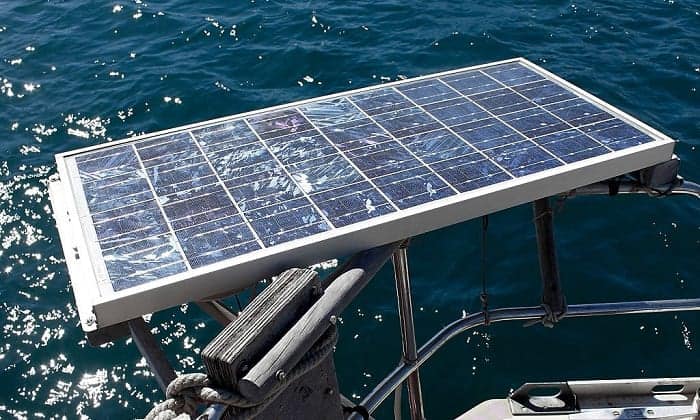
There’s nothing like kicking back and relaxing in a boat all to yourself. But while sailing the waves and soaking in the sun is an awesome getaway, you’ll still need to think about how to generate electricity while on board, especially for running your boat battery.
Get free power through solar energy with the best marine solar panels. Not only are they easy to set up and use, but you also save money by relying on renewable energy instead of paying expensive electricity bills like usual.
But how do you look for the most suitable solar panels for boats if there are dozens of solar panel types out there? Well, you’ve come to the right marine solar panels review. There are three key things you need to keep your eyes out for when choosing marine solar panel kits for your beloved boat.
- Waterproof: Since you’ll be traveling across bodies of water, you have to anticipate that your solar panels could get wet. Make sure your solar panels are resilient against water damage through waterproof designs.
- Flexible: Boats have curved surfaces, unlike roofs that are flat and can do with rigid panels. Marine solar panels can be straight and conventional, but it would be a big help if they were flexible so that you can mount them on tricky surfaces on your boat. Flexible solar panels hug irregular surfaces, ensuring they don’t topple over as your boat moves.
- Thin: Boats are small spaces as it is. You don’t need bulky, rigid panels occupying more space than necessary. Go for ones that are about an inch or so thick. Thinner solar panels are sleek and don’t take up too much space, so they’re a must for marine solar solutions.
There are many other factors you need to consider when looking through boat solar panels for sale. Check out the rest of the important factors in our buying guide below.
Need more help picking out a good boat solar panel kit? Look through this rundown of solar panels for boats reviews to see some of the most popular options.

Best Overall

Renogy Monocrystalline Solar Panel
| ✅ The solar panel has a durable frame |
| ✅ Power production is quite |
| ✅ Stops overcharging and short circuits |
Premium Choice
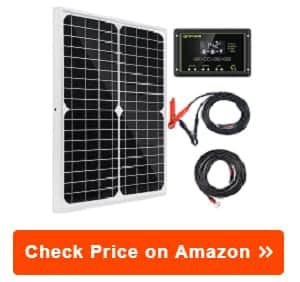
Topsolar Solar Panel
| ✅ Weighs only 4.8 lbs |
| ✅ Resistant to harsh weather |
| ✅ Has pre-drilled holes |
Editor’s Pick
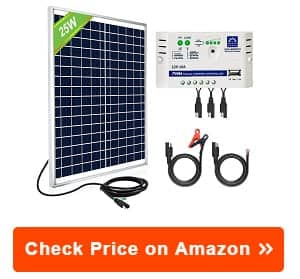
ECO-WORTHY Solar Panel
| ✅ 1-year warranty |
| ✅ Connector cables are quite long at 9.84 feet |
| ✅ Charge controller has power indicators |
Table of Contents
1. Renogy 100W 12V Monocrystalline Solar Panel
2. topsolar 20-watt monocrystalline solar panel, 3. eco-worthy 25w off-grid solar panel, 4. renogy extremely flexible solar panel, 5. suner power 30w polycrystalline solar panel, 6. newpowa monocrystalline 100-watt solar panel, 7. rich solar polycrystalline solar panel, 8. topsolar 100-watt 12-volt solar panel kit, 9. newpowa monocrystalline 30-watt solar panel, what to look for when looking through marine solar panel options, how many solar panels do i need to run a boat, how many amps does a marine refrigerator use, how do you install solar panels on a boat, top-rated marine solar panel reviews.
- Material: Monocrystalline
- Wattage: 100W
- Voltage: 12V
This solar panel kit by Renogy is awesome because it’s an all-in-one solar system. It includes all the necessary cables and accessories to get the show on the road.
The convenient kit includes a 100-watt solar panel, the Wanderer 30A PWM controller, and connectors and adapters. It even has Z brackets for mounting your solar panel. I like that I didn’t have to purchase all these separately.
I like that the Wanderer charge controller is negative ground, which means it prevents any overcharging and short-circuiting issues with our batteries.
Now, for the solar panel itself, I appreciated how the frame was made of sturdy, high-quality, corrosion-resistant aluminum, making the panel extra durable.
Its monocrystalline solar cells can convert 21% of the solar power to free energy you can use on your boat. That’s pretty high compared to other solar panels.
Plus, the production power of this solar panel kit is quiet, so it won’t bother you when you need silence.
- Includes the necessary connectors, controller, and mounting brackets
- The negative ground controller stops overcharging and short circuits
- The solar panel has a durable, corrosion-resistant aluminum frame
- Monocrystalline cells convert 21% of solar power into free energy for you
- Power production is quiet, so it will never disturb users
- The charge controller has no LCD screen
- Wattage: 20W
This Topsolar solar panel kit is another one that offers a lot of accessories. It comes with a charge controller, some alligator clips to hold your cables and connectors properly, and even an O-ring terminal.
The solar panel itself is made of thick, high-class tempered glass to protect the cells inside. It’s framed with aluminum for extra sturdiness as well. I love that it’s made of such premium materials, so I never have to worry about it being too flimsy or break apart easily.
All in all, the solar panel weighs a mere 4.8 lbs, making it easy to carry around. It’s lightweight enough for effortless lifting and transporting when I’m about to install it or move it to another area.
This marine solar panel is resistant to harsh weather, thanks to its maximum static load of 2,400 Pa. Because of this, you can use it worry-free, even in inclement climates.
There are pre-drilled holes at the back of the panel to make it easier to set up with screws and grommets.
- Comes with a charge controller, alligator clips, and O-ring terminal
- The panel is made of tempered glass and an aluminum framing
- Weighs only 4.8 lbs, so it’s easy to lift and carry around
- Resistant to harsh weather like wind or snow
- Has pre-drilled holes at the back to make set-up easier
- Doesn’t include mounting brackets
- Material: Polycrystalline
- Wattage: 25W
A long lifespan is one of the top factors I consider when looking for a marine solar panel. This one by ECO-WORTHY ticks off that box because it is built to last.
It’s made with highly efficient cells to give me adequate power output. The framing is designed with aluminum to make it sturdy, increasing its longevity.
This off-grid solar panel kit comes with a convenient charge controller. Its interface may not have a modern display screen, but it does have light indicators that update in real-time so you can tell how far your charge is coming along. It also has a USB port to let you charge your phones and other small devices.
The solar panel set comes with SAE connector cables to help users set up. They’re quite long and stretch to 9.84 feet, giving us maximum flexibility for moving our panel and charge controller around.
ECO-WORTHY offers a one-year warranty for this kit. You’ll also have access to the brand’s 24/7 hotline in case you have questions or concerns with your solar panel.
- Made with high-efficiency solar cells and aluminum for longevity
- Charge controller has power indicators that update in real-time
- There’s a USB port on the charge controller for small devices
- The SAE connector cables are quite long at 9.84 feet
- A one-year warranty with 24/7 technical support from ECO-WORTHY
- One 25W solar panel might not be enough to power multiple appliances
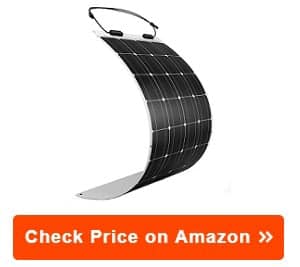
Setting up solar panels on curved surfaces is tough, but with these Renogy flexible solar panels for boats, it’s never a challenge.
These flexible solar panels bend to a 248-degree arc, which is a lot more flexible than other bendable panels. This is excellent for boat and yacht decks that are curved.
The panels are made of monocrystalline cells that emit 100 watts, ensuring a strong and reliable power supply for our consumption.
Transporting and setting up these flexible solar panels is a walk in the park, thanks to its lightweight and super thin design. They’re never bulky and retain the smooth silhouette of your boat.
They’re thin and light because they’re designed with advanced polymer, which is 70% lighter than other materials traditionally used to build solar panels.
These flexible panels are made to withstand bad weather. They resist impact and don’t get damaged in heavy loads of rain. You’ll find that they even tolerate up to 5,400Pa of snow.
- Bends to a 248-degree arc to fit irregular and curved surfaces and decks
- Monocrystalline panels emit a consistent 100 watts
- Super lightweight and ultra-thin, making it a breeze to transport
- Made with advanced polymer that is 70% lighter than traditional materials
- Resists impact and damage from heavy loads of rain and snow
- The cables in the solar panel kit aren’t the same length
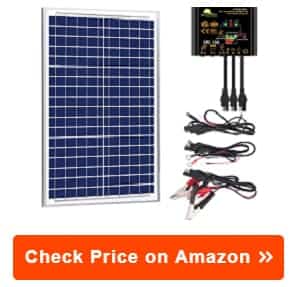
These solar panels by SUNER POWER are built with high-efficiency polycrystalline cells, giving me great performance even with the small energy output. They emit up to 30 watts of power to use as free energy on the boat.
This kit charges our batteries safely. It goes through a strict three-step intelligent algorithm to make sure our battery doesn’t go through overheating and short-circuiting, so I know I’m extra safe.
You’ll also find bright LED lights on the charge controller that indicate how the charge is coming for easy monitoring. It’s a convenient way to make sure our charging is right on track even when we’re doing other errands on the boat.
Tough weather conditions are nothing when it comes to this marine solar panel. It’s built with IP65 waterproof technology, so I don’t have to worry about the climate damaging my solar panel kit. It can even resist erosion, rusting, and damage from the sun’s UV rays.
- Polycrystalline cells emit 30 watts of power to use as free energy
- Charges our battery safely with an intelligent three-step algorithm
- Has bright LED light indicators so you can see how your charging is going
- Withstands tough weather because of IP65 waterproof technology
- Resists erosion, rusting, and UV damage in finicky weather
- The wires could be longer
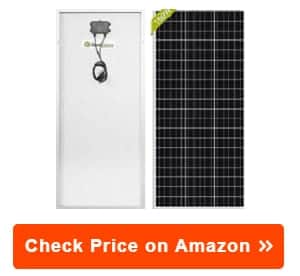
This Newpowa monocrystalline panel is smaller in size compared to most other panels. It comes up to about 45 x 20 inches, making it more manageable than bigger ones.
It’s made of monocrystalline cells that are highly efficient in turning power from the sun into free energy for our consumption and charging.
The panel’s aluminum framing prevents any corrosion, which extends the lifespan of the solar panel kit. That means I won’t have to constantly replace it.
The marine solar panel and some of its accessories are made to be waterproof. That way, they’ll survive even the most horrible weather conditions as you sail.
Venturing to areas and cities without much bright sunlight is no problem for this marine solar panel kit. The junction box is equipped with bypass diodes that ensure users don’t get any power outages even in cloudy, shaded areas.
- Smaller in size and more manageable than other solar panels
- The monocrystalline panels are efficient in converting power into energy
- Aluminum framing prevents corrosion, extending the solar panel’s life
- These monocrystalline solar panels can survive horrible weather
- Junction box has diodes to let your power work even in low-light areas
- You don’t get the rated 100-watt output every single day
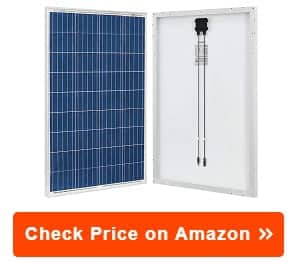
This RICH SOLAR panel is one of my favorites for travelling. I love it because it allows for more sunlight absorption. The panels’ anti-reflective, high-transmission film also helps make energy conversion more efficient.
Because of these factors, this panel works extremely well even in areas that are low in sunlight . So when I know I’m going to be sailing to cloudy shores, I make sure to bring this panel along.
This set uses quick-connect cables that don’t take more than a few seconds to fix up. It makes installation fast and easy even for beginners.
There are also about 14 holes on the panel so that you can simply screw it onto your mount. That means you can set it up without the complication of drilling the holes yourself. The design is also compatible with a variety of mounts, further adding to user’s convenience.
- Its anti-reflective panels are high-transmission for even more efficiency
- High conversion efficiency even in areas without bright sunlight
- Uses quick-connect cables, so setting up is fast and easy even for beginners
- There are 14 pre-drilled holes on the panel for quick installation
- Works with many types of mounts
- Doesn’t include mounting brackets, so you have to purchase some
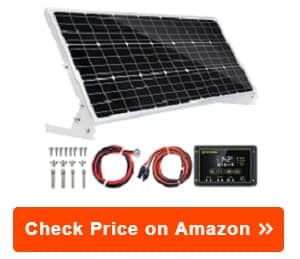
This solar panel by Topsolar emits 100 watts of power to charge any 12-volt battery while you’re on the go. It’s perfect for cars, RVs, and a huge range of off-grid uses, but it works excellently for boats too.
The panel is made with monocrystalline cells, protected by a coating of high-quality tempered glass. This protective layer also prevents wear-and-tear in the long term. Meanwhile, anodized aluminum frames the panel, protecting the edges from corrosion.
You get a V-shaped bracket along with your panel in this kit. This bracket allows users to tilt the panel in whatever direction they desire. It’s very helpful when we’re trying to position the panel to face the sunlight directly.
The charge controller this solar panel comes with is made with IP67-rated waterproof technology. This means it prevents any water damage from ruining our solar system.
- Charges any standard 12-volt battery while you’re on the go
- A wide range of uses
- The mono cells are protected with wear-resistant tempered glass
- The framing is made of anodized aluminum to protect the panel’s edges
- Comes with a V-shaped bracket to tilt the panel in the direction of the sun
- The charge controller is made with IP67 technology to avoid water damage
- The panel is quite heavy at almost 16 lbs, making it heavy to carry
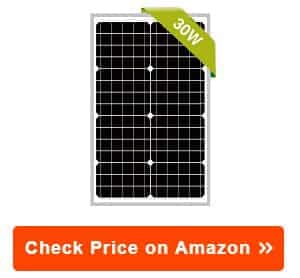
This Newpowa panel emits 30 watts of power. That may sound small to some people, but it’s perfect for charging small devices and running just a few appliances on a short boat ride.
It’s made with high-efficiency monocrystalline cells. These cells allow for a more compact panel design that is smaller and more manageable than the brand’s polycrystalline panels.
Multiple layers of the panel protect its cells. This includes an ethylene-vinyl-acetate encapsulation, iron tempered glass, and even a TPT back sheet that can help with heat dissipation.
There are wires already pre-attached to the panel, one at 3 ft and another at 1 ft. Both of these have Anderson connectors as well, so users don’t have to fuss about setting them up themselves.
The panel also has holes pre-drilled in them, so it’s ready to be screwed into your mount or bracket of choice.
- Provides 30 watts of power, perfect for small devices and short trips
- Made with high-efficiency mono cells that allow for a compact design
- Cells are protected by multiple layers, like tempered glass and TPT backing
- The wires and connectors are pre-attached, which is great for beginners
- Comes with mounting holes already drilled on the back of the panel
- The solar panel isn’t weatherproof, so you can only use it on sunny days
HQST 100W 12V Solar Panel (Outdated)
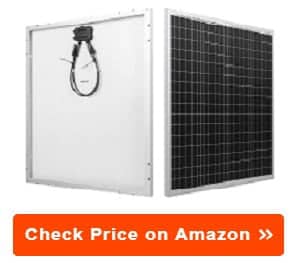
This 100-watt solar panel by HQST is designed for efficiency and durability. The panel itself is anti-reflective, thanks to thick and durable tempered glass. It’s also lined with aluminum in its framing, which resists corrosion and damage to the panel’s edges.
Polycrystalline solar panels like this one are made with high-efficiency cells that convert more power into energy than the usual panel. They also contain diodes to bypass any power outages or drops when your boat travels into a shaded area.
This kit’s junction box is rated IP65, which means it’s waterproof. That way, it can resist damage from water jets and uncontrollable weather.
Installation is a breeze with the pre-drilled holes at the back of this panel. It’s perfect for newbies that don’t want to call in a professional to set it up.
- The anti-reflective panel is made with sturdy tempered glass
- An aluminum frame
- Polycrystalline panels efficiently convert the sun’s energy into power
- Contains diodes to bypass power outages when you go into low-light areas
- The junction box is rated IP65 to resist damage from undesirable weather
- Comes with holes drilled at the back of the solar panel for easy mounting
- The wires on the panel are quite short
WindyNation 100W Off-Grid Solar Panel (Outdated)
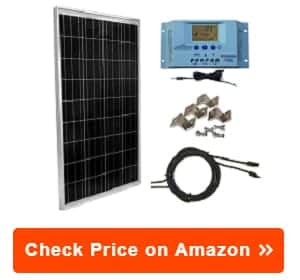
I love that this solar panel by WindyNation gives off a consistent 100 watts of power, provided that the panels are positioned directly under the sun. That makes it an ultra-reliable panel that isn’t flip-floppy when powering our devices.
The solar system comes with many accessories you’ll need to set up and use your panel. There’s a quality charge controller, some mounting brackets, and all the necessary cables needed.
My favorite part about this system is the charge controller. It has a high-quality LCD screen that displays all the information I need to see about my battery as it charges. It even has a sensor to help me monitor the battery’s temperature.
I can also choose and adjust what information settings are shown on the screen, depending on my preference. Buyers can get whatever information they’d like to know—amperage, amp-hours, temperatures, voltage, and more!
- Consistently provides 100 watts of power when positioned under the sun
- Comes with a charge controller, mounting brackets, and cables
- The charge controller has an LCD screen
- Sensor for battery temperature
- You can choose and adjust what settings to see on your LCD screen
- You must purchase fuses and fuse holders to complete this solar system
SUNER POWER 12-Volt Waterproof Solar Panel (Outdated)
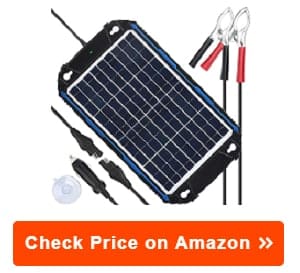
This solar panel by SUNER POWER doubles as a battery charger. It’s powered by highly efficient polycrystalline cells on a sturdy solar panel. These solar cells generate battery power in any condition, even when the sun isn’t so bright.
The charging system follows a stringent and smart three-step algorithm, keeping your battery safe as it charges. It does so with a unique “Maximum Power Point Tracking” (MPPT) chip, which prevents battery issues like overcharging and short-circuiting. MPPT also allows the charge controller to generate up to 30% more power than others do.
The controller has a LED light where you can see all the pertinent information on your battery, like whether it’s charging and if the battery’s full.
This entire solar system is made with IP65 waterproof technology. It won’t be susceptible to water damage, so users don’t have to worry about backflow from the water around the boat causing damage to it.
- High-efficiency polycrystalline solar cells generate power in any condition
- Has a smart three-step charging algorithm for a safer charge
- Its unique MPPT chip protects your battery
- MPPT controller generates up to 30% more solar power than others
- Has a LED light to indicate battery status
- The system is IP65 waterproof, so it won’t be susceptible to water damage
- Designed to work only on 12V batteries

Easy to install through grommets or adhesives
Setting up traditional solar panels on regular surfaces like walls and roofs can be difficult as it is. It might be trickier on a moving, swaying boat.
Make sure your marine solar panels are a breeze to set up. Look for ones that are okay to simply stick onto surfaces with adhesives, or have pre-drilled holes so you can screw them onto a mount quickly.
Provides an adequate amount of energy to power up your batteries and appliances
Select marine solar panels that will give you the right amount of solar power to meet your energy requirements.
For example, if you only need solar power on the boat to charge devices in the short term, 50W or 100W might be enough for your trip.
However, if you intend to use your solar panel to charge marine battery, you’ll definitely need one that converts a higher amount of solar energy—perhaps some 200 watt marine solar panels.
Comes with all the necessary accessories, like connectors and junction boxes
Don’t put yourself through the hassle of buying each part of your marine solar system separately. Look for solar panels that provide all the necessary cables, boxes, and accessories to get you set up immediately. Ensure that your panel comes with connectors, junction boxes, charge controllers, and more.
Manufactured by a legitimate and respectable solar power brand
You must always purchase solar panels from legitimate brands that will give you top-notch and high-quality panels. There are many bogus panels in the market today, so double-check to make sure the solar panels you’re buying come from good, renowned manufacturers
If you’re not sure which solar panels to buy, it’s wise to go for classic, tried-and-tested brands. These include Renogy, TP-Solar, and SunPower marine solar panels.
Plus, buying from bigger brands will increase your chances of getting a product warranty that lasts years.
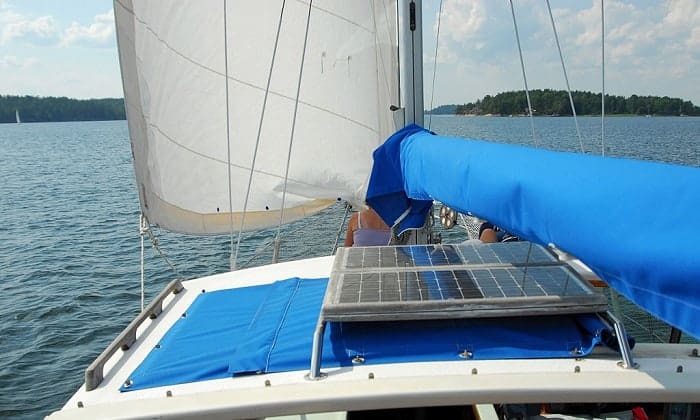
It depends on how much power you need to keep your appliances and gadgets up and running.
For shorter, one-day excursions, you can live with just one or two high-quality solar panels to provide some electricity to charge your phones and maybe a mini-fridge for the day.
But if you’re planning to sail for longer and live on the boat 24/7, you’ll probably need a bigger boat solar system with as many solar panels as you need. This is because you’ll likely have to run bigger appliances and lights, which demands more solar energy.
If you have a 12V marine refrigerator, it will likely only use up anywhere between 2-6 amps per hour. One solar panel emitting a usual 100 watts is more than enough power for such a fridge.
There are many different ways to set up solar panels on boats. If your solar panel is flexible, thin, and ultra-light, you can simply secure it in place with adhesives.
Thicker panels may need to be screwed in with grommets. If this is the route you’re going for, make sure you have sturdy mounting hardware to place your solar panels in.
Traveling through water may be relaxing and stylish, but the excursion is never complete without the best marine solar panels to provide solar energy and battery power during your trip. Hopefully, this round-up of traditional and flexible marine solar panels reviews help you out on your hunt to find the best panels.
Just make sure your panels are efficient in providing high power, waterproof to avoid damage from the sea, and thin and lightweight for easy mounting and storing. If you tick all those boxes, your sailboat solar panels should be all good.

I am Kathleen Miller, staff writer and reviewer of the Avasolar team. Working with the team has been a pleasure for me so far, I hope to bring readers useful information by creating detailed and easy-to-follow contents.

- Green Propulsion
- Renewable Energy
- Energy efficiency
- Sustainable materials
- Eco Insights
- News & Events
- Sunreef News Magazine
- Press About Sunreef

- 60 Sunreef Power
- 70 Sunreef Power
- 80 Sunreef Power
- 100 SUNREEF POWER
- Sunreef Ultima Range
- Sunreef 44 Ultima
- Sunreef 55 Ultima
- Sunreef 66 Ultima
- Sunreef 77 Ultima
- Sunreef 88 Ultima
- Sunreef fleet

- SUNREEF ZERO CAT
- SUNREEF 100
- Sunreef Fleet

- SUNREEF 35M
- SUNREEF 43M
- 49M SUNREEF POWER
- 210 Sunreef Power Trimaran
- Sunreef Explorer
- 40M SUNREEF EXPLORER
- 40M SUNREEF EXPLORER ECO
- 50M SUNREEF EXPLORER
- Superyacht Fleet
Solar Powered Yachts
Solar panels are a fundamental element of today’s quest for responsible energy generation. Used in households, commercial facilities, and power stations across the globe, they are also a vital source of energy for solar powered yachts. With significant progress made over the last years, photovoltaic technology has emerged as the natural energy source with the most exciting growth potential.
Thanks to photovoltaic cells, solar panels absorb sun radiation to generate direct current (DC). When sunlight reaches a solar cell, it causes silicon electrons to move. This motion will start the flow of electricity that is captured by wires and directed to an inverter. Inverter technology is then used to convert it to alternating current (AC) ready to power household appliances.
The solar power systems on solar powered yachts usually consist of solar panels, batteries, charge controllers and inverters. While batteries store the energy obtained from the solar panels, charge controllers prevent batteries from overcharging. Solar catamarans with house appliances on board will usually need to convert the DC energy into AC with the help of an inverter.
Sunreef Yachts produces solar panels in-house and uses a new (patent-pending) technology to integrate them within structural components. The panels are made of the industry’s most efficient cells with a peak performance of 24%.
Thanks to the solar cells’ outstanding flexibility, Sunreef Yachts’ solar panels can be mounted on any surface of the solar powered yacht. As a result, they are integrated with various areas on board, such as hull sides, mast, superstructure, bimini roof or bow terrace to maximize energy generation.
With a thickness below 1mm and weighing around 1,8 kg per square meter (average solar panels will weigh between 8 and 15 kg per square meter), they are one of the lightest solar power systems in the world. In addition, tests have proven that thanks to their advanced integration technique, Sunreef Yachts solar panels have a very high resistance to shock and abrasion. This allows them to be used on any surface, including hull sides.
EXPLORE OUR CATAMARANS
Sailing yachts, power yachts, superyachts, discover the green side of yachting.
SUBSCRIBE TO OUR NEWSLETTER
- Sailing Yachts
- Power Yachts
- Superyachts
- Making a Change
- Green Concept
Copyright © 2024 Sunreef Yachts . All rights reserved.
- Whistleblowing
- Privacy Policy

Sunreef Venture S.A.
Sunreef Yachts Shipyard
ul. Tarcice 6
80-718 Gdańsk, Poland
+48 58 769 77 77
You are using an outdated browser. Please upgrade your browser or activate Google Chrome Frame to improve your experience.
- Commercial & industrial PV
- Grids & integration
- Residential PV
- Utility scale PV
- Energy storage
- Balance of systems
- Modules & upstream manufacturing
- Opinion & analysis
- Opinion & analysis guidelines
- Press Releases
- Technology and R&D
- Sustainability
- 50 States of Solar
- pv magazine UP initiative
- pv magazine Hydrogen Hub
- Magazine features
- US module maker directory
- pv magazine Events
- pv magazine USA Week
- pv magazine Webinars
- pv magazine Roundtables
- Event calendar
- Past events
- Special Editions
- OMCO Solar white paper
- Print archive
- pv magazine test
- pv magazine team
- Newsletter subscription
- Magazine subscription
- Community standards
This yacht sets sail with solar
The 60 square meters of solar panels produces 30-50 kWh of energy per day, enough to power all of the onboard electronic equipment for around seven hours.
- Commercial & Industrial PV
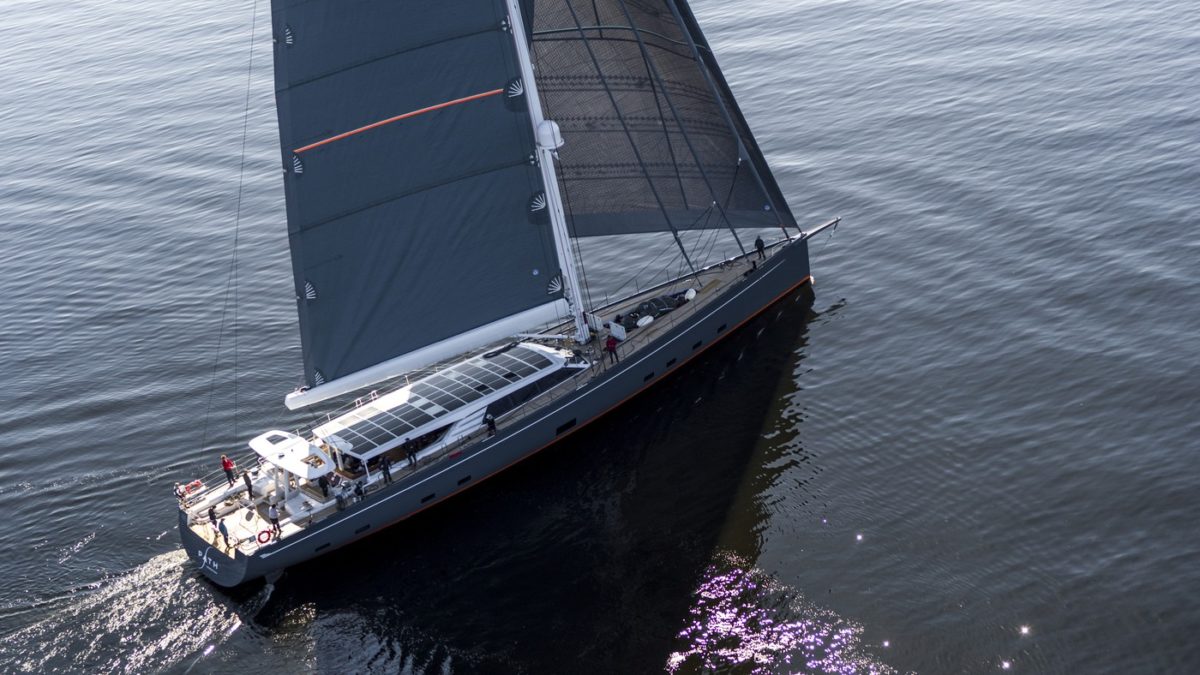
Solar-powered Baltic yacht.
Image: Solbian Solar
Baltic Yachts began delivery in July of its Baltic 146 Path, which includes an 8,714 watt solar rooftop and energy storage system designed by Solbian Solar using the company’s walkable solar modules.
Recently, some of the yacht’s technical work has been shared online. Built from 1,742 monocrystalline solar cells, many of the 86 solar panels were custom cut to fit the deck’s shape by the Solibian team in Italy. The units were based on the company’s Super Rugged (SR) Series .
The SR series has solar cell busbar technology developed by Merlin Solar. In one video, the Merlin team drives over the solar panel, throws bags of cement on it, and even shoots it with a bow and arrow in an effort to prove the product’s resilience. The company said its busbar technology makes this kind of abuse possible.
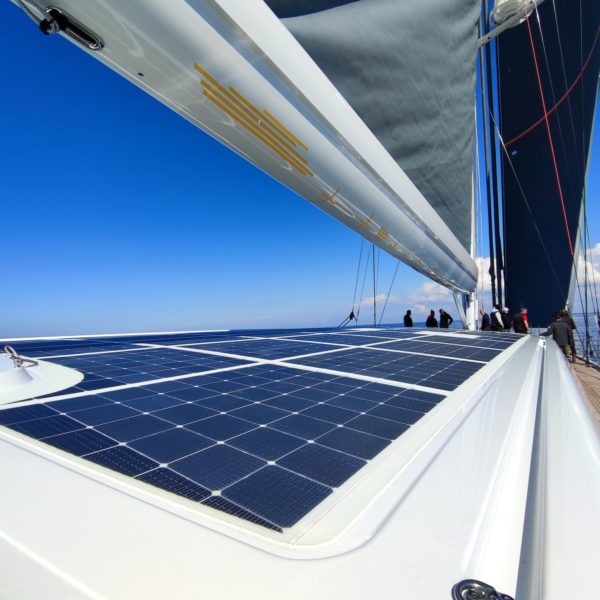
The 60 square meters of solar panels produces 30-50 kWh of energy per day. The company said that’s enough to power all of the onboard electronic equipment–including navigation, autopilot, lighting, and entertainment–for around seven hours.
Once the sun goes down, a Mastervolt MLI 44kWh LiFePO4 battery pack allows the diesel generator mostly to stay off, providing generally silent operation for 14-18 hours.
Baltic Yacht’s solar system is roughly half the size of the Silent 60’s 16.8 kWdc solar plus storage system. The Silent 60 is a solar-propelled yacht less than half the lengthBaltic yacht and price, which reaches 6-8 knots on solar power alone. The Path does not feature electric propulsion and therefore relies on diesel engines when the wind dies down.
Since the Path uses a sail for propulsion, the team installed 154 bypass diodes and 12 solar panel strings and trackers – Mastervolt SCM-60 MPPTS – in an effort to maximize power output and minimize the effect of the sail’s shadows on the panels. The entire solar system, including wiring, controllers and small parts, weighs less than 300kg, the company said
The 146 Path has an overall length of 146 feet. The yacht can accommodate eight in addition to the ship’s owner, as well as eight crew members. Path carries two tenders, an 8hp Torqeedo electric outboard-powered RIB, and a 6.5m twin-engined RibEye. There are also two ultra-lightweight Reverso Match sailing dinghies.
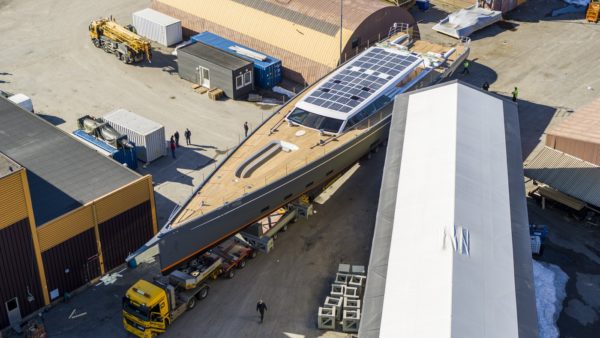
When the front tender is deployed, its storage container can be turned into a pool.
The ship’s main diesel engine is a 405kW (550hp), six-cylinder Scania. The specific model isn’t listed, however the “ DI13 092M IMO Tier III, EU Stage IIIA ” lines up with all of the stats and looks like the unit in a video of the engine being installed.
The owner’s suite includes a sleeping cabin, and an en suite lounge with a glass divider doubling as a movie, tv, and sailing information screen. An upper lounge features a 2.7m-long video wall.
This content is protected by copyright and may not be reused. If you want to cooperate with us and would like to reuse some of our content, please contact: editors@pv-magazine.com .
Popular content

John Fitzgerald Weaver

More articles from John Fitzgerald Weaver
People on the Move: ACORE, Sunnova Energy, Lighthouse bp, and more
Sandia offers public access to csp archives, related content.
- GM signs agreement to match assembly plant power demand with solar The automaker entered a 15-year, 180 MW solar power purchase agreement (PPA).
- Agrivoltaics for corn Researchers have created a novel model that can help developers asses corn growth in agrivoltaic facilities. They also...
- Sunrise brief: Sunrun stock rises on strong cash generation in Q2 earnings Also on the rise: Mobile floating PV plant powers Paris’ Olympic village. Array Technologies unveils wireless tracker ...
Since it is E propulsion all they have to do to change while sailing is use the motor in regen it’ll generate power back into the pack at much larger amounts. And a small RE fueled generator just in case. As a sailor who does solar, not a chance it’ll get that much from the solar from all the shading from the rigging. More likely 10-30kwh/day. On mine, I made the sails small with 2 masts so I can lower them to not shade the panels.
Any photos of your boat you can share?
Leave a Reply Cancel reply
Please be mindful of our community standards .
Your email address will not be published. Required fields are marked *
Save my name, email, and website in this browser for the next time I comment.
Notify me of follow-up comments by email.
Notify me of new posts by email.
By submitting this form you agree to pv magazine using your data for the purposes of publishing your comment.
Your personal data will only be disclosed or otherwise transmitted to third parties for the purposes of spam filtering or if this is necessary for technical maintenance of the website. Any other transfer to third parties will not take place unless this is justified on the basis of applicable data protection regulations or if pv magazine is legally obliged to do so.
You may revoke this consent at any time with effect for the future, in which case your personal data will be deleted immediately. Otherwise, your data will be deleted if pv magazine has processed your request or the purpose of data storage is fulfilled.
Further information on data privacy can be found in our Data Protection Policy .
pv magazine USA offers daily updates of the latest photovoltaics news. We also offer comprehensive global coverage of the most important solar markets worldwide. Select one or more editions for targeted, up to date information delivered straight to your inbox.
- Select Edition(s) * Hold Ctrl or Cmd to select multiple editions. Tap to select multiple editions. U.S. (English, daily) Global (English, daily) Germany (German, daily) Australia (English, daily) China (Chinese, weekly) India (English, daily) Latin America (Spanish, daily) Brazil (Portuguese, daily) Mexico (Spanish, daily) Spain (Spanish, daily) France (French, daily) Italy (Italian, daily)
- Read our Data Protection Policy .
Subscribe to our global magazine

Most popular

Our events and webinars
- pv magazine USA Week 2024 This content is protected by copyright and may not be reused. If you want to cooperate with us and would like to reuse...
- Growing the solar pie: how BIPV unlocks new growth opportunities This pv magazine Webinar will delve into the necessity of BIPV in Europe, focusing on advanced solutions that address ...
- Automating solar PV financial asset management German renewables monitoring company meteocontrol claims its newly launched software suite, mc Assetpilot, can standar...
- Más allá de las expectativas: Rendimiento y fiabilidad de última generación de los inversores para autoconsumo de TBEA En este pv magazine webinar podrá conocer, de la mano de Javier Fernández, Channel Manager para Iberia de TBEA, los úl...
Keep up to date

photo© www.svdelos.com
Let us help you go solar aboard, start enjoying c lean, quiet & renewable po wer.
At Sun Powered Yachts we hope to inspire and inform yacht owners on the benefits of going solar with SunPower & Maxeon. We're here to answer any questions you may have.
With a background in sailing & solar, and also from living off-grid for 11 years in Hawaii, we have the knowledge to help you with your solar install. Find out more about us
In 2021-2022 we spent 15 months as a family living aboard our sailboat, a Dufour 382 sailing from Corsica to Cancun and more recently to Florida & Bahamas. An intrepid adventure of over 7,000NM visiting 12 countries along the way. We're available for solar consultations with SunPower & Maxeon panels in stock in the USA ready to fulfill orders.
Aloha, Katie & Lyall
+1 808 825 2670
info@sunpower edyachts.com

Join over 5,700 people receiving our quarterly email updates
Thanks! You will receive our next email update . Follow us on Facebook & Instagram for latest news

SunPower ® 100 Watt
Maxeon ® a ir 3 30 watt.

SunPower ® 50 Watt

Maxeon ® 415 Watt -R (all black)

Maxeon ® 475 Watt

Maxeon ® 470 Watt
Choose your maxeon ® solar panel bundle, fixed frame panel bundles.

1x 415 Watt bundle

1x 470 Watt bundle

1x 475 Watt bundle

2x 415 Watt bundle

2x 470 Watt bundle

2x 475 Watt bundle
Visit our shop for flexible & fixed frame bundles*, *at sun powered yachts we only sell premium cosmetic quality sunpower® e-flex panels. our inventory is warehoused in arizona, please visit our shipping policy for full details , 1% for the ocean, we are committed that 1% of your order with us goes directly to support the papahānaumokuākea marine debris proj ect ( pmdp ) in hawaii. the 2024 clean up season began in april with a 19-day mission to midway atoll removin g an incredible 70,080 lbs of marin e debris .

Federal Tax Credits

Have you heard about the Federal Tax Credits that you could take advantage of for going solar on your boat? Yes, your boat!
Do you have a head, galley & bunk aboard? Then you may qualify and t he Federal Tax Credit has now gone back up to 30% of the total cost to put your solar system in place.
This can include solar panels, controllers, wiring, labor etc. and can now more easily include batteries - maybe time for that lithium upgrade to Battle Born
SunPower Advantage s

Silent power
Solar panel systems burn zero fuel and have no moving parts. They are clean and silent, producing no atmospheric emissions or greenhouse gases that are harmful to the earth. Enjoy those quiet anchorages with no more noisy engine/generator running just to charge your batteries.

Easy install
The simple and easy installation of SunPower® E-Flex panels on your bimini, dodger, or deck, will reduce costs of adding an expensive davit or custom racking and mounting solution for traditional large & heavy fixed frame solar panels.

Highest quality
Incredibly reliable and easy to maintain. With no moving parts, visual checks and servicing easily keep systems operating. Solar panels are robust & durable with a junction box designed with a high level of protection from dust & water ingress.
SunPower Solar Panel Installs

Follow us on Instagram @sunpoweredyachts
News & reviews.

Maxeon to open new factory in USA
Great news! Maxeon recently announced (Aug 10th) that they will be opening a 3 Gigawatt factory in New Mexico. Construction will begin Spring 2024 and so by 2025 that's high efficiency Maxeon solar panels being made right here in the USA!
Read our news post for full details.

For sale - 'Blake' our Dufour 382
Are you looking for a boat already set up to go cruising? We have our 2016 Dufour 382 GL 'Blake' listed for sale on Yacht World . She is the adventure version with taller mast/deeper keel, 950W of SunPower flexible solar panels, a DC watermaker, new dinghy and plenty of safety gear. Currently in Freeport, Bahamas. For more details contact us directly
T: 808 825 2670

Check out our Install List
We have added an Install List page to our website which currently has over 130 installs from our customers. Get inspired by what other boat owners have added for SunPower & Maxeon solar panels.
Maybe you own a Lagoon 400 or a Morgan 41 and wonder what panels might fit aboard, check out the list to see how other owners have gone solar aboard.

Calico Skies 3x 410W
Bill & Grace sail Calico Skies , a Sabre 36, and whilst in Mexico they installed 3x410W SunPower fixed frame solar panels as part of a major upgrade to their arch/davit system.
Check out their YouTube episodes including #177 to see how they get on adding 1,230W (or 1.23kW) of SunPower solar panels.
Calico skies install details
"We made 7.2kWh yesterday out of our panels, what an upgrade!"
Bill & Grace

SV Delos 3x 410W + flex
Brian & Karin of SV Delos installed 3x410W SunPower fixed frame panels when on the hard in Mexico ( YouTube Ep.407 )
Combined with their SunPower E-flex panels, which have been aboard for ~3 years ( YouTube Ep.262 ) they now have just under 2,00W of solar keeping them powered up in the Pacific - awesome!
SV Delos install details
"Love our new 410W panels and they're the same size as the old 300W ones - woohoo!"
Brian & Karin

Sailing La Vagabonde 2x 470W + flex
Riley & Elayna of Sailing La Vagabonde have been working on their new Rapido 60' trimaran and added 2x470W Maxeon fixed frame panels.
They also have 6x170W SunPower flex panels they can deploy when needed. With a 48V battery bank these panels are wired in series YouTube episode
SLV install details
"Thank you, the solar panels have been absolutely incredible."
Riley & Elayna
Testimonials

"So now I generally
Don't bother hooking, up to shore power".
Thanks for all the help in planning my solar project for my boat. The two 170W flexible panels fit well on my Bimini and now I generally don't bother hooking up to shore power. Although I haven’t had any long trips since my installation I have done a few day trips. And even with fridge, radio, plotters, autopilot and occasional radar it seems that these panels are keeping up with my usage. The advice and service has been great. Thanks again.
Jeanneau Sun Odyssey 469

"It is by far the best decision I made "
I bought a solar system from Sun Powered Yachts in 2020. It is by far the best decision I have made for the electrical system on my boat. I would (and do) recommend Sun Powered Yachts to anyone looking to add solar to their boat.
Endeavour 33

"Terrific customer service, always responsive"
The process of researching a solar solution for my Beneteau 41 was simplified & clearly understood once I discovered Sun Powered Yachts. Terrific customer service, patient, always responsive with guidance and products that just work. Being a novice at setting up a solar system, I had many questions along the way, and the team at Sun Powered Yachts were always there to answers my questions and provide support.
Beneteau 41
Become a more sustainable sailor with SunPower® & Maxeon® solar panels
Sunpower® solar videos, jodi endicott environmental art june 2024.

Our Beautiful Boat Home (FULL BOAT TOUR)

Mastering OFF-GRID Living: 4 Key Things Every Sailor Should Know ⛵️ Sailing Vessel Delos Ep. 441

New Feature: Prioritising solar or wind when on shore power Victron Energy
GOING SOLAR - Video by Profiles in Dust (2023)

Custom Double Flexible Solar Panel Mounting System (No Drilling, Welding, or Permanent Adhesive)
How Do Solar-Powered Boats Work? 7 Innovative Vessels That Run on Solar
Solar boats can serve ordinary functions for more sustainable transportation.
David Kuchta, Ph.D. has 10 years of experience in gardening and has read widely in environmental history and the energy transition. An environmental activist since the 1970s, he is also a historian, author, gardener, and educator.
:max_bytes(150000):strip_icc():format(webp)/professional-headandshoulders-b7be2761c16e44438607bf932fc1993c.jpg)
- Wesleyan University, University of California, Berkeley
:max_bytes(150000):strip_icc():format(webp)/ScreenShot2021-04-07at1.57.45PM-bcef177316c94cdf998457c694cce6d5.png)
- University of Tennessee
Finnbarr Webster / Getty Images
- Renewable Energy
- Fossil Fuels
When Greta Thunberg crossed the Atlantic in 2019 to address the 2019 UN Climate Action Summit, she sailed aboard the Malizia II , a racing yacht powered by hydro, solar, and sail. The Malizia II raised the international profile of powering boats with renewable, carbon-free energy.
Installing solar panels on the Malizia II and other boats is a challenge. The panels and electronic equipment can be exposed to corrosive saltwater, strong winds, and extreme weather conditions. The panels must conform to the shape of the vessel, but cannot interfere with the work of the crew. Fortunately, these are challenges that many boat owners have overcome. In a growing industry, flexible solar panels capable of being installed on a boat can cost as low as $200 . Solar power isn't just for high-end racing yachts.
One of the virtues of a solar-powered boat is its infinite range when paired with lithium-ion batteries on board, which can store the energy produced by the solar panels. Like a sailboat, a solar-powered boat never needs to make refueling stops.
Spurred on by competitions like the Solar Splash (which calls itself “the World Championship of Collegiate Solar Boating”), the Solar Boat Regatta , the Dutch Solar Challenge , and Solar Sport One , engineers and innovators in sustainable transportation have turned solar-powered boats from a novelty item on the sea to vessels that can serve many functions.
The Malizia II
Mark Lloyd/Alea / Getty Images
The Malizia II is a 60-foot (18-meter) monohull boat weighing 8 tonnes. It was launched in Monaco in 2015. While it has participated in a number of races and regattas, it is best known for transporting Greta Thunberg to the United Nations Climate Action Summit in 2019. But it was built for racing—capable of speeds of up to 25 knots, it is one of the fastest boats of its class.
The Solliner
The Solliner is a line of small catamarans meant for day boating, from Green Dream Boats . At 21 feet (6.2 m), it can accommodate up to 10 people in a U-shaped seating area. They are fitted with four solar panels that allow for navigation without the need for an outside energy source. They can sail at up to 12 km/hr. Solliner boats have been seen around the world, such as the one pictured here in Poland. In the United States, they are sold by Infinity Solar Boats.
Samarjitbharat / Wikimedia Commons / CC BY-SA 4.0
The Aditya is India's largest solar boat and the world's first solar-powered ferry. Carrying approximately 1,700 passengers per day , it is 30 times cheaper to run than the diesel ferry it replaced. In 2020, it won the Gustave Trouve Award for Excellence in Electric Boats and Boating, an international award. The Indian state of Kerala, which commissioned the Aditya , plans on replacing the entirety of its diesel fleet with solar ferries. The Aditya is a 20-meter-long catamaran ferry boat made from glass-reinforced plastic with photovoltaic panels on its roof. It seats 75 passengers at a time.
The Interceptor
The Interceptor sounds like a racing boat, but it is a 24-meter (78 ft) solar-powered barge whose role is to intercept 50 tons of trash a day from Malaysia's rivers—most of it plastic that would otherwise reach the sea. The Malaysian Interceptor is one of a series of Interceptors created by The Ocean Cleanup , the largest effort to remove plastic waste from the oceans, 80% of which stems from 1,000 of the world's rivers. Other Interceptors are (or will be) stationed in Indonesia, the Dominican Republic, and Vietnam.
MS Tûranor PlanetSolar
Pascal Le Segretain / Getty Images
A 31-meter catamaran, the MS Tûranor PlanetSolar is the world's largest solar boat and the first to sail around the world. On its round-the-world voyage, it sailed at an average speed of 5 knots—not racing yacht speed, to be sure, but to be expected from a 6-meter-wide scientific research vessel weighing 89,000 kg (nearly 100 tons), 8.5 tons of which are lithium-ion batteries stored in the ship's two hulls. It was launched in 2010.
The 537 square meters of solar panels are sturdy enough to be walked on, and provide electricity stored in 6 blocks of lithium-ion batteries, allowing the Tûranor PlanetSolar to travel over 60,000 km (37,282 m) in 584 days without fuel stops.
The Ecowave
The Ecowave ( Ecowolna ) is Russia's first solar-powered catamaran. In 2018 it conducted a scientific expedition to explore the potential for solar-powered trams for the Neva, Oka, and Volga rivers. Launched from St. Petersburg, the Ecowave expedition covered more than 5,000 km (3,106 m) over 90 days, traveling the Black and Caspian Seas as well as major rivers of Russia. The catamaran is 11.6 metres long.
The solar panels cover an area of solar panels is 57 square meters (613 sq ft) and are capable of producing 9 kW of power. Lithium-ion batteries allow the vessel to sail for 20 hours without recharging.
While apparently no longer plying the waters of the Lot river in France, the Kevin was a solar-powered hotel boat that offered river cruises focused on sustainable river tourism. Calling his converted barge “ the first solar boat-hotel of the world ,” owner Dominique Renouf launched Kevin in 2011. The vessel was 97 feet (29.50 m) long, equipped with a solar water heater, and able to accommodate 14 overnight passengers in 6 cabins.
4FR / Getty Images
Solar-powered boats can be as humble as tour boats on Turkey's Lake Eğirdir or on Lake Altaussee in the Austrian Alps. Like ferries, tour boats are ideal candidates for solar power, as their regular routes allow for batteries to be sized with enough electricity to power voyages of days when the sun isn't shining.
Solar boats have barely entered the mainstream boating market, but the technology is within the financial reach of most boat owners, as the cost of solar panels has dropped precipitously over the past decade. Any boat with a large-enough surface exposed to the sun can attach solar panels to it, and with a little wiring and (optionally) battery storage, infinite sailing is an increasingly affordable possibility.
" Largest Solar-Powered Boat Completes Around the World Voyage ." Guinness Book of World Records , 2012.
- What Are Flexible Solar Panels?
- What Are Solar Shingles? How Do They Work?
- Why Airports Are Embracing Renewable Energy
- What Are Solar Trees? How Do They Work?
- Solar Air Conditioning: Does It Work? What to Know Before Investing
- How Do Solar Panels Work?
- What Is a Solar Tower and How Does It Work?
- Do Solar Panels Work on Cloudy Days? At Night?
- How Do Solar Windows Work?
- Solar Ovens: What Are They? How Do They Work?
- Are Portable Solar Panels Worth It? Everything You Need to Know
- How Long Do Solar Panels Last?
- Solar Technology for Farming and Urban Gardening
- Do Solar Panels Work When It Snows?
- Your Guide to RV Solar Panels: Components, Installation, and More
- Solar Water Heaters: What You Should Know
Field test: PV Modules
A real world comparison between Mono, Poly, PERC and Dual PV Modules.
* This is a field test and the results are specific for this installation on this location please research which is the best solution for your own situation as the results can be different based on environmental influences.
Total solar yield as of 27/03/2023 when the results were reset: Mono: 9158 kWh Split-cell: 9511 kWh Poly: 9113 kWh Perc: 9471 kWh Perc-east: 1970 kWh Perc-west: 1730 kWh
Enjoy the sound of silence
Harnessing the power of the wind makes sailing an unforgettable experience. All you want to hear is the sound of the wind blowing and the waves breaking. But what is the best way to power the on-board electronics while the engine and generator are switched off? Victron combines energy storage and solar generation to provide the power you need. In absolute silence.
Whether you’re sailing away for the weekend or planning a trip around the world, big chance the very same Victron solution could support both. It’s the level of comfort that really determines your optimal solution aboard. With Victron you can power just about any plans, but as an example we illustrated ‘normal’ and ‘heavier’ power profiles in the below for the ‘average’ sailing yacht.
Consumption
- Power Profile
- Complete system
How much do you need?
A modern sailing yacht is packed with a lot of electrical equipment. Most things used to run the boat usually use DC, bigger (household) appliances need AC. When it comes to estimating power consumption, many just add up the Watts. Time is equally important. A microwave might use 1000 Watts, but only for 2 minutes. A fridge might consume as little as 50 Watts, but is turned on 24 hours a day.
For inspirational purposes we’ve outlined 2 system examples based on ‘normal’ and ‘heavier’ use.
1.2 - 2.4 kWh / day
'normal' and 'heavier' energy consumption. Read more
The microwave uses 1000W an hour but is only on for 2 minutes a day. 1000W / 60 x 2 = 0.03 kWh / 2 minutes
The fridge uses 50W an hour but is on the entire day (actually cooling ½ the day). 50W x 24hrs/2 = 0.6 kWh / day
Storage & conversion
How much energy should be stored.
Storing energy allows you to live of shorepower at sea or lets you use solar power harvested during the day over night. The inverter will convert the stored power to 230V. Sailing yachts typically experience long intervals between battery recharges, so your house battery should have a generous capacity. As a rule of thumb, we’re calculating with 48 hrs on board without shore power shore/engine/generator/solar power. Multiply the daily power consumption x days for even greater independency.
The storage capacity of a lithium battery should be two times the daily power consumption.
Due to its ±50% smaller discharge capacity, the storage capacity of a lead-acid battery should be four times the daily power consumption.
The inverter should be sized to handle the average load continuously and should match the expected peak power current, which our inverters handle very well (on average 2 x their continuous current).
Where does the power come from?
Sources of power, power profile.
Normal and heavier power profiles in kWh, based on the daily energy consumption, which should be in balance with the generation.
Storage batteries in Ah, double the capacity using lead-acid batteries.
It seems like your browser does not support the latest technologies. To see this section properly, consider using a modern browser.
System diagram
For a lithium and lead-acid battery based system.
How do the system design considerations translate into a robust system?
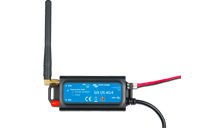
GX 4G modules

The professionals choice:

You’ll want to bring small devices on board for your trip. Or use household appliances like a microwave. These usually run of an AC outlet. Think of:
- Phone charger
- Refrigerator
Being able to plug-in these device saves you the trouble of finding a DC version.

Boat engines
Sailing yachts have one or two diesel engines (Catamarans) to get from harbour to horizon. The engines come with alternators to charge the engine batteries, drive fuel pumps, etc.
Once the starter batteries are recharged, the engines can also power the boat electrics and recharge the house battery. On bigger yachts you’ll find power hungry DC equipment such as anchor windlasses and bow thrusters. The engines have to be running before you can use them.
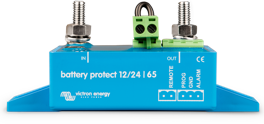
BatteryProtect
Discharging your battery too far will damage it. Adding a Victron BatteryProtect will disconnect the boat’s electronics when the battery voltage drops below a pre-set level. It will also automatically reconnect everything when the battery is sufficiently recharged.
There is more to a Victron BatteryProtect. The built-in shutdown delay ensures that vital electronics aren’t disconnected in error, i.e. when starting the engine causes a short drop in battery voltage.
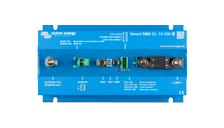
Battery Management Systems
Battery management systems take excellent care of Lithium batteries, protecting the individual cells of LiFePO4 batteries against over voltage, under voltage and over temperature and will shut down or reduce charging (VE.Bus products only) or disconnect the loads when this occurs.
Victron Energy offers several BMS options, in general the VE.Bus BMS and smallBMS signal separate devices to disconnect the charging (Inverter/Chargers, Cyrix-Li, DC-DC chargers) or disconnect the loads (BatteryProtect, Inverter/Charger), the modular Lynx distribution system features the Lynx BMS and other modules for more control over the DC busbar. For vehicles and boats all-in-one functionalities are available in the Smart BMS versions for Victron Lithium batteries, but also include current limiting to protect the alternator from overheating and BatteryProtect-like functionality to shut down the loads when pre-set critical battery conditions are met.
Victron Energy also offers full flexibility when it comes to selecting a third-party off-grid battery bank (and their BMS) of choice. A large number of well supported Lithium battery manufacturers can be easily integrated through the use of a mandatory GX-device. This flexibility enables our customers to perfectly match their off-grid needs for their unique power situation. When working with unsupported brands, a Victron Energy Battery Monitor is required to pass on accurate state of charge readings to the wider system.
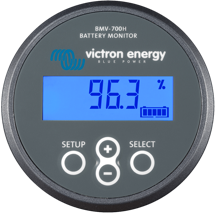
Battery Monitors
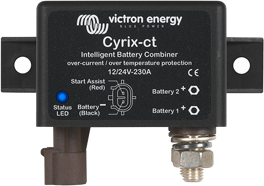
BatteryCombiner
The Cyrix BatteryCombiner is the only safe way to connect the house battery to the starter battery (to start your boat’s engines). With a BatteryCombiner you can charge the house battery from the alternator without running the risk of draining the starter battery (which always should be ready to go). When other sources of power are available (eg. shore/solar/generator power), the Cyrix BatteryCombiner will allow bi-directional charging from the house battery to the starter battery.
When the Voltages of the starter and house batteries are the same, use a Cyrix: its current rating should be equal or bigger than the current rating of the alternator. If the house battery is Lithium and the alternators Amperage is smaller than the house battery, or when the Voltages of the starter and house battery are different: use a Orion or Buck-Boost.

Boat Network
Keeping grips on all the systems on board can be a hassle. The solution: tie everything together in a single boat network using NMEA communication standards. Your boat network can include navigation equipment, tank senders, battery monitoring and much more. The status information can trigger alarms and shutdowns, adding to the safety on board. The Cerbo GX now supports the NMEA2000 out protocol, allowing you to monitor your boat’s network of systems from wherever you are.
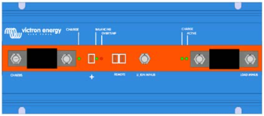
The BMS 12/200 is a dedicated battery management system (BMS) that protects Victron Smart 12,8V LFP batteries against deep discharges, overcharging and high temperatures with up to 200 Amps maximum DC current. When critical values are exceeded, the BMS acts immediately: loads are disconnected physically in case of a deep discharge and charging is stopped when there is a risk of overcharging. High temperatures trigger an immediate end to both charging and discharging.
This is the only BMS that can be directly connected to an alternator, protecting them from overload/overheating. This works with a combination of an AB fuse (rated in accordance with the expected max load current of the alternator) and an internal programmable input (which limits the input current electronically to 80% of the AB fuse).
Please check your manufacturer for the maximum charging current of your alternator and size AB fuses of the BMS 12/200 accordingly, see manual.
When different Lithium batteries & higher voltages are used, other solutions are needed, such as the VE.bus BMS and Lynx Ion BMS.

Boat Electronics
A sailing yacht is home to several electronic devices. These are all connected to the house battery. Think of:
- Boat control panel
- Log/depth sounder
- Chart-plotter or GPS
- Navigation lights
- Bow thruster
- Interior lighting
- Music player
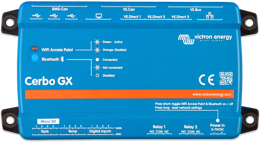
The Victron Cerbo GX is the communication-centre of your boat’s installation, allowing you to always have perfect control from wherever you are and maximises its performance. Simply connect through our Victron Remote Management (VRM) portal, or access directly, using the optional GX Touch 50 screen, a Multi Functional Display or our VictronConnect app thanks to its added Bluetooth capability.
The Victron Cerbo GX is an easy to use visual system. Instantly monitor the battery state of charge, power consumption, power harvest from PV, generator, and mains, or check tank levels and temperature measurements. Easily control the shore power input current limit, (auto)start/stop generator(s) or even set quiet periods to avoid starting the generator in the middle of the night. Change any setting to optimise the system, follow up on alerts, perform diagnostic checks and resolve challenges remotely. The Cerbo GX turns any power challenge into an effortless experience.
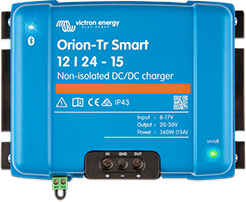
DC-DC chargers
DC-DC converters, or battery-to-battery chargers (converters with built-in charge algorithms) are used in dual battery systems, where the (smart) alternator and the start battery are combined with the service battery (of equal or different voltages) to charge it. They can also be used to charge applications that have dedicated batteries (eg. bow thrusters), or to power applications that have a voltage different than the service battery bank.
Most DC-DC chargers can be used in 12V or 24V systems and all are suitable for both lead acid and lithium batteries. Some DC-DC charger models can be parallel connected to increase the output current. DC-DC chargers are a perfect and safe solution to charge Lithium battery banks from smart alternators (and lead-acid batteries for that matter).
Charging lithium batteries from the alternator Most alternators cannot be directly connected to lithium batteries. A lithium battery will draw more current than the alternator can supply, which may result in permanent alternator damage. To not damage the alternator, current limiting is one of the options to stay within the safe zone of the alternator.
Victron offers multiple solutions to solve this problem, of which one of them are the DC-DC converters:
- DC-DC converters act as a current limiter between the alternator and the battery: the battery can be safely charged without blowing up the alternator.
- Victron also offers alternative solutions for dual battery systems powered by alternators. Some (smart) BMS products physically limit the current drawn from the alternator, in other systems, battery combiners might be a solid option. See the datasheets for more info.
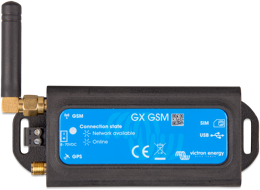
GX GSM Dongle
The Victron GX GSM is a 3G cellular modem that enables GX devices with mobile internet for the system and connection to the VRM Portal, allowing you to monitor your system from remote. When the boat is in range of a 3G network, it will send data to the VRM website and you can monitor the boat from your smartphone. The GSM module adds tracking the boat, recording your trips and putting up a geo-fence around the boat. You will get an alert via mail when the boat travels outside the geo-fence area.
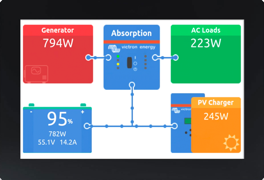
The Victron Energy Cerbo GX is the communication-centre of your systems installation, allowing you to always have perfect control from wherever you are and maximises its performance. The optional GX Touch 50 is a companion to the Cerbo GX, it’s five inch touch screen display gives an instant overview of your system and allows you to adjust settings in the blink of an eye.
Instantly monitor the battery state of charge, power consumption, power harvest from PV, generator, and mains, or check tank levels and temperature measurements. Easily control the shore power input current limit, (auto)start/stop generator(s) or even set quiet periods to avoid starting the generator in the middle of the night. Change any setting to optimise the system, follow up on alerts, perform diagnostic checks and resolve challenges remotely with the free Victron Remote Management (VRM) portal.
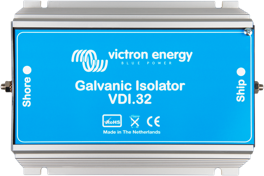
Galvanic Isolator
A galvanic isolator prevents electrolytic corrosion. The isolator is mounted directly behind the shore power connector on board. It blocks DC currents that might leak through the shore power earth terminal. These currents can cause corrosion to all metal parts under water, like the hull, propeller, shaft, etc. The galvanic isolator should have the same power rating as the incoming shore power.
It’s a misunderstanding that galvanic corrosion occurs only in metal and aluminium hulls. In fact it can occur on any boat as soon as a metallic part (the shaft and propeller) is in contact with water. Galvanic corrosion will quickly dissolve your sacrificial anodes, and attack the shaft, propeller and other metal parts in contact with water as soon as the boat is connected to the shore-side supply. It might therefore be tempting not to connect the ground conductor: this is however extremely dangerous because Ground Fault Current Interrupters will not work nor will a fuse blow in case of a short circuit to a metal part on the boat.
The safe option is to use a Galvanic Isolator for non-metal smaller boats, or use an isolation transformer for metal boats or boats with bigger systems.
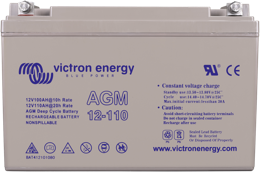
House battery
The house battery stores power for the boat’s electrical system. Sailing yachts typically have long intervals between battery recharges and the house battery should have a generous capacity.
For a house battery you can choose from two types: lead-acid and lithium. There are various reasons to favour one over the other. Here are a few common ones:
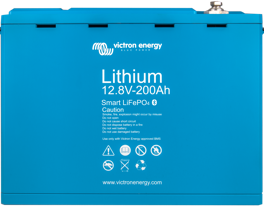
Inverter/Charger
The inverter/charger is the heart of the system. In the marina, it charges the batteries from shore power. While sailing it inverts the energy from the boat’s battery into AC power for household devices. The switch from charging to inverting and from inverting to charging is seamless.
- Victron inverter/chargers come with a handful of outstanding features:
- PowerControl: automatically manage battery charging to prevent an overload of the generator or shore power.
- PowerAssist: uses the battery as a buffer to assist the shore power during peak power demand.
- Perfect power: even sensitive devices run flawlessly on the pure sine wave power.
- High peak-power: use motorised equipment without overheating.
- Low self consumption.
For this power profile we would recommend:
We would recommend our Multiplus-II inverter/charger. If you have a generator on board you’ll need a Quattro inverter/charger, which has an extra input (shore power and generator).
We strongly recommend 24 Volts for new boats. The higher voltage is simply a better choice when it comes to meeting the power demands of a modern sailing yacht. If your boat’s system is based on 12 Volts, select a 12 Volts unit instead.
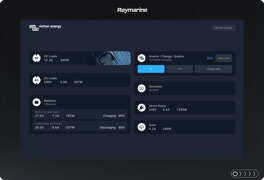
MFD GX Integration
The Victron integration between our GX range and several leading Multi Functional Display manufacturer brands enables you to easily connect an MDF to the heart of your power system such as the Cerbo GX, or the GX enabled Multiplus-II GX. Once connected you can easily monitor and control your boat’s power system, right on your Glass Bridge.
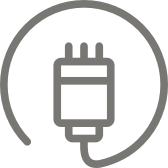
Shore Power
In the marina, the boat will be connected to shore power. Shore power recharges the batteries. It can also be used for maintenance and to run large AC loads.
Often shore power is limited in how much power you can draw, i.e. just 10 Amps. Berths with higher ratings might not always be available. Victron inverter/chargers allow you set a maximum shore power current. Now you can charge your batteries and turn on any equipment without blowing a fuse.
Sometimes shore power is less than perfect. You might run into voltage drops if you’re at the far end of the harbour. There could also be power surges, which could harm sensitive equipment on board. Victron’s inverter/chargers smooth out these problems and turn bad power into perfect power.
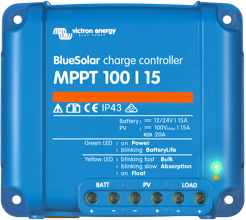
Solar charger
A solar charger- also called MPPT controller, harvests the power from the solar panels to charge the house battery. Solar chargers have the same charging cycles as our regular, fully automatic, battery chargers. When your boat is moored without shore spower, solar power is a great way to keep the batteries charged.
In a marine environment, the performance of solar panels changes constantly. Victron’s solar controllers use ultra fast maximum power point tracking to squeeze up to 30% more power out of your panels.
The rating of the solar charger is defined by the size of the solar panel. For solar panels of less than 150W or less, choose a 75/10 charger. If your solar panel produces between 150 and 220W, pick a 75/15 instead.
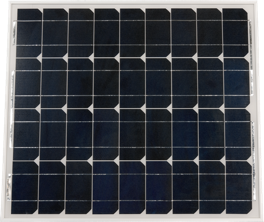
Solar panel
More and more sailing yachts area equipped with solar panels. After all, they extend the autonomy range without the noise of a diesel engine and… for free. Victron offers a wide range of small, highly efficient, solar panels that are just perfect for boats.
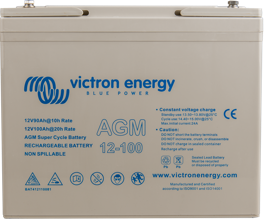
Starter Battery
The starter battery is needed to start your boat’s engine. These batteries are different from house batteries and engineered to deal with a large discharge current. The starter battery should always be ready to go. It’s best to isolate the important starter battery from all other electrical circuits on board, so it cannot be accidentally drained of power.
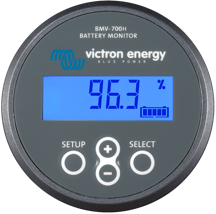
VE.Direct Bluetooth Smart dongle
The Bluetooth dongle enables you to use the VictronConnect app with VE.Direct enabled devices (without Bluetooth built-in). With the app you can have real-time insight and full control, and you can access all VE.Direct enabled devices such as the smaller VE.Direct inverters, the BMV 70x series battery monitors or MPPT solar controllers.
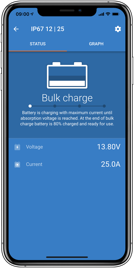
VictronConnect
All Victron products on your boat can be monitored and controlled from the palm of your hand. Just connect the VictronConnect App via Bluetooth and you’ll have direct access to values like battery voltage and current. You can also turn devices on or off, as well as change their settings.

VRM - Victron Remote Management
Monitor and manage.
Monitor and manage your Victron Energy systems from anywhere and catch potential issues early by setting alerts and alarms. With VRM you are always in perfect control from wherever you are.
VRM works with a GX-device such as the Cerbo GX with internet connection, the GlobalLink 520 or GSM LTE 4-g for smaller systems.
Monitor the battery state of charge, power consumption, power harvest from solar, generator and mains in real-time. Optimise the energy harvest and usage with history graphs and detailed analytical reports. Catch potential issues early by setting alerts and follow up on alarms to prevent definitive system failure.
Easily control the shore power input current limit, switch on the inverter, (auto)start/stop generators or even set quiet periods to avoid starting the generator in the middle of the night. With VRM you can change any setting, follow up on alarms, perform diagnostic checks and resolve challenges from wherever you are.
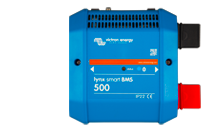
Lynx Smart BMS
The Lynx Smart BMS is a dedicated Battery Management System for Victron Lithium Smart Batteries (for non Victron Lithium batteries, see below). There are multiple BMS-es available for our Smart Lithium series of batteries, and the Lynx Smart is the most feature rich and complete option. Its main features are:
- Built-in 500A contactor, used as a fallback safety mechanism and also suitable as a remote controllable main systems switch.
- Battery monitor, indicating state of charge percentage and more data.
- Pre-alarm signal: provide a warning before the system shuts down due to -for example- a low cell.
- Bluetooth for use with our VictronConnect App, for setup and monitoring.
- Local and remote monitoring using a Victron GX device, for example the Cerbo GX.
Battery Management System
The dedicated battery management system (BMS) protects Victron Lithium Smart batteries against deep discharges, overcharging and high temperatures. When critical values are exceeded, the BMS acts immediately: loads are disconnected physically in case of a deep discharge and charging is stopped when there is a risk of overcharging. High temperatures trigger an immediate end to both charging and discharging.
Battery monitoring
Lynx Distribution system
Non Victron Lithium batteries
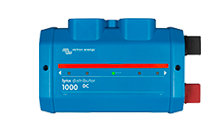
Lynx Distributor
The Lynx Distributor is a modular DC busbar, with locations for four DC fuses. It will monitor the status of each fuse, and indicate its condition with a LED on the front. When connected to a Lynx Smart BMS or Lynx Shunt, the status of the fuses will be visible in VictronConnect and VRM (when the Lynx Smart BMS is connected to a GX-device).
Multiple Lynx Distributors can be used to connect all the DC-loads and charge sources on one side of the BMS, on the other side, a Lynx Power In (without fuses) or another Lynx Distributor (with fuses) can be used to connect the battery bank to the modular busbar.
This product is part of the modular Lynx busbar system that also provides the Lynx Smart BMS, a dedicated Battery Management System for Victron Lithium Smart Batteries (for non Victron Lithium batteries, use the Lynx Shunt).
Power consumption will vary from yacht to yacht and from owner to owner, even on sailing yachts. Here are two examples - with a normal and a heavier daily energy consumption - of what an Optimal Energy plan for a sailing yacht could look like. Please note that many more factors come into play when designing and installing your optimal solution: your Victron Professional will gladly help you with that.
To see this detailed table and the entire section properly, consider using a modern browser.
It seems like your browser does not support the latest technologies to see this section properly, consider using a modern browser.
MultiPlus magic: small generator, big power.
An expert view: lithium or agm aboard, get your wiring right with wiring unlimited, see your system performance right from your glass bridge, see all our marine products and more configurations., real-time insight and complete control with our victronconnect app, find your local dealer.
Our well established global network of local Victron Professionals is dedicated to help find an optimal solution for your challenge.
Count on our worldwide service
At Victron we find it essential that customers are serviced and supported quickly and competently. This is why our global network of Victron Professionals pack the highest level of technical know-how and are committed to deliver repairs as fast as possible.
So you can start or continue your journey, wherever you’re headed.
- France – IGY Sète Marina
- France – IGY Vieux-Port de Cannes
- Italy – Cala di Volpe Mooring Buoys
- Italy – IGY Portisco Marina
- Italy – Marina Di Porto Cervo
- Kingdom Of Saudi Arabia – Sindalah Marina
- LONDON – ST. KATHARINE DOCKS
- SAVANNAH, GA – IGY SAVANNAH HARBOR MARINA
- Spain – IGY Ibiza Marina
- Spain – IGY Málaga Marina
- St. Lucia – Rodney Bay Marina
- St. Maarten – Simpson Bay Marina
- St. Maarten – Yacht Club Isle De Sol
- St. Thomas, USVI – American Yacht Harbor
- St. Thomas, USVI – Yacht Haven Grande
- Turks & Caicos – Blue Haven Marina
- MANHATTAN, NY – NORTH COVE MARINA AT BROOKFIELD PLACE
- Miami, FL – Yacht Haven Grande at Island Gardens
- St. Petersburg, FL – Maximo Marina
- Colombia – Marina Santa Marta
- Costa Rica – Marina Bahia Golfito
- Mexico – Marina Cabo San Lucas
- Panama – Red Frog Beach Marina
YACHT MANAGEMENT
- France – IGY Vieux-Port de Cannes
- Italy - Cala di Volpe Mooring Buoys
- Italy – Marina Di Porto Cervo
- Kingdom Of Saudi Arabia - Sindalah Marina
- LONDON – ST. KATHARINE DOCKS
- Spain – IGY Ibiza Marina
- Turks & Caicos – Blue Haven Marina
- MANHATTAN, NY – NORTH COVE MARINA AT BROOKFIELD PLACE
- Portland, ME – Fore Points Marina
United States Caribbean Latin America Europe KINGDOM OF SAUDI ARABIA Destination Charter Itineraries
- United States American Yacht Harbor Maximo Marina Yacht Haven Grande Miami at Island Gardens North Cove Marina at Brookfield Place Yacht Haven Grande USVI IGY Savannah Harbor Marina VIEW ALL MARINAS
- Carribean American Yacht Harbor Blue Haven Marina Yacht Haven Grande USVI Rodney Bay Marina Yacht Club Isle De Sol Simpson Bay Marina Red Frog Beach Island Marina Marina Santa Marta VIEW ALL MARINAS
- Latin America Marina Bahia Golfito Marina Cabo San Lucas Red Frog Beach Island Marina Marina Santa Marta VIEW ALL MARINAS
- Europe IGY Vieux-Port de Cannes Cala di Volpe Mooring IGY Portisco Marina IGY Sete Marina Marina Di Porto Cervo IGY Malaga Marina St. Katharine Docks IGY Ibiza Marina VIEW ALL MARINAS
- KINGDOM OF SAUDI ARABIA SINDALAH MARINA VIEW ALL MARINAS

- Superyacht Miami Yacht Have Grande Miami Miami International Boat Show | Feb 15 – 19 VISIT EVENTS PAGE

- Safety & Security
- Crew Administration
- Financial Administration
- Technical Support
- Documentation
Island Global Yachting Announces Inauguration of Solar Power Project at IGY Yacht Haven Grande in St. Thomas, USVI
by Tammy | Sep 11, 2024
PRESS RELEASE
For immediate release:.

St. Thomas, USVI | September 12, 2024 – Island Global Yachting (IGY) LLC, the only global portfolio of premium yachting destinations, today announced the activation of a large-scale solar power generation project at Yacht Haven Grande in St. Thomas, U.S. Virgin Islands.
Clean, Renewable Energy
The project is a collaboration between IGY and Prosolar Caribbean, a leading solar energy provider in the region. IGY installed a rooftop photovoltaic generation array that generates clean, renewable energy for the mixed-use property. Power from panels will supply a meaningful share of Yacht Haven Grande’s energy needs, reduce the property’s reliance on fossil fuels and lower its carbon footprint. Additionally, the project will lessen demand on the local utility grid, freeing up power for use by the surrounding community.

“This solar project is a milestone for IGY’s renewable energy solutions and our ongoing commitment to sustainability initiatives across our global portfolio of industry-best marinas. We are committed to working with our partners to find innovative ways to reduce our environmental impact and create a more sustainable future for the marina industry.” said Steven English, IGY’s President.
Commitment to Sustainability
“We are thrilled to announce the completion of our first solar panel project at Yacht Haven Grande Marina,” said Eric Simonton, Executive Vice President of Real Estate at IGY. “This project is a significant step forward in our commitment to sustainability and environmental responsibility.”
About Yacht Haven Grande, St. Thomas, USVI

As a flagship marina of IGY’s global network, Yacht Haven Grande, St. Thomas continues to establish new standards within the global industry with this new solar power project. Notably, the 5 Gold Anchor Platinum Marina has won TYHA’s International Superyacht Marina of the year an unprecedented 4 times and is one of the busiest charter destinations in the Caribbean. The destination is a dedicated superyacht marina capable of berthing yachts over 656 ft. (200m). The Shops at Yacht Haven Grande are an integral part of the economy in USVI occupying 130,000 ft 2 which include 11 restaurants, duty-free shopping, charter companies, provisioning, and spectacular event space, including the iconic Harbor360 building. There is always something exciting happening at this IGY destination, making it a vibrant hub for dining, entertainment, and luxury services for locals and visitors alike.
### END ###
About IGY Marinas
IGY’s worldwide marina network sets luxury standards for service and quality in nautical tourism. IGY has the only global portfolio of premium yachting destinations, serving over 10,000 annual customers at 23 marinas across 13 countries.
IGY’s unprecedented collection of marinas spans the Americas, Europe, and Middle East serving a variety of vessel types, and is the home port for many of the world’s largest superyachts. As a proud subsidiary of MarineMax, a publicly listed company on the New York Stock Exchange (NYSE: HZO), IGY Marinas benefits from its affiliation with the world’s largest recreational boat retailer and other MarineMax companies including Fraser Yachts ( www.fraseryachts.com ) and Northrop & Johnson (www.northropandjohnson.com). MarineMax not only holds a dominant position in boat sales but also excels in yacht brokerage, charter services, and overall maritime support. Discover IGY Marinas’ network at www.igymarinas.com .
IGY Media Contact: +1-954-510-3309 / [email protected]
About Prosolar Caribbean
Prosolar Caribbean is a leading provider of solar energy solutions in the Caribbean. The company offers a wide range of solar energy products and services, including solar panel installation, battery storage, and financing. Prosolar Caribbean is committed to helping businesses and homeowners in the Caribbean reduce their reliance on fossil fuels and save money on their energy bills. For more information, visit https://prosolarcaribbean.com/ .

RESTAURANTS AND SHOPS
From breakfast at the quayside, all the way to dinner on a rooftop terrace, menus range from fresh fish or pizza to traditional Sardinian cuisine that are also available for takeout or delivery onboard. The supermarket, conveniently located on the dock, specialty shop and liquor store offer a wide selection that are available for delivery to your vessel.
BWA YACHTING
BWA Yachting is a worldwide yacht agency and yachting services provider formed to support captains, managers and crew, making their lives easier, assisting with the increasing demands of managing a modern superyacht. Our global office network stretches throughout the Mediterranean, Northern Europe, the Caribbean and the Americas, providing a unique and seamless experience, wherever our clients are cruising. The BWA Yachting service can be anything from planning a complete trip, saving you time and a lot of hassle, with just one point of reference to the handling of a single port call or last minute concierge request. That’s everything from clearance procedures to berthing reservations, bunkering, provisioning, fiscal advice, logistics, technical assistance, travel arrangements, and more.
www.bwayachting.com Tel.+377 93 500 277 [email protected]
BOOK A SERVICE
Host your event in harbor360, download brochure, contact us today, coming soon, this part of our website is still under maintenance and will be available soon , find cruise lines.
Norwegian Cruise Lines Cruises: Norwegian Cruise Line Cruise Deals | NCL Cruises
MSC MSC Cruises Official Global Website – Select your Country
Celebrity Cruises Cruises: Award-Winning Luxury Cruise Line | Celebrity Cruises
Virgin Voyages Caribbean & European Cruise Vacations | Virgin Voyages
TUI Marella Cruises | Cruise Holidays 2023 / 2024 | TUI.co.uk
RCCL Cruises – Amazing Cruises and Cruise Deals | Royal Caribbean Cruises
Star Clipper Star Clippers UK – Home
FIND FERRIES
TRANS COTE D’AZUR 04 92 98 71 30 https://www.trans-cote-azur.com/
RIVIERA LINES 04 92 98 71 31 https://www.riviera-lines.com/
HORIZON 04 92 98 71 36 https://www.horizon-lerins.com/
PLANARIA 04 92 98 71 38 https://www.city-life.fr/
More Information Coming Soon!
General inquiries, need assistance.
- October to April : Monday- Friday 8:00AM to 6:00PM Weekends & Bank Holidays: 8:30AM to 12:30PM and 1:30PM to 5:00PM May and September: 8:00AM to 7:00PM June to August: 8:00AM to 8:00PM

- Patio, Lawn & Garden
- Generators & Portable Power
- Solar & Wind Power
- Solar Panels
Add to your order

- No Additional Cost: You pay nothing for repairs – parts, labor, and shipping included.
- Coverage: Plan starts on the date of purchase. Drops, spills and cracked screens due to normal use covered for portable products and power surges covered from day one. Malfunctions covered after the manufacturer's warranty.
- Easy Claims Process: File a claim anytime online or by phone. Most claims approved within minutes. If we can’t repair it, we’ll send you an Amazon e-gift card for the purchase price of your covered product or replace it.
- Product Eligibility: Plan must be purchased with a product or within 30 days of the product purchase. Pre-existing conditions are not covered.
- Terms & Details: More information about this protection plan is available within the “Product guides and documents” section. Simply click “User Guide” for more info. Terms & Conditions will be available in Your Orders on Amazon. Asurion will also email your plan confirmation with Terms & Conditions to the address associated with your Amazon account within 24 hours of purchase.
- Buy a lot of stuff on Amazon? Tons of items eligible for coverage, from the latest tech like Laptops, Game Consoles, TVs, Phones, and Cameras to major appliances, sporting goods, tools, toys, personal care, furniture, and more.
- Accidents Happen. That’s why for your portable products we cover accidental damage from handling such as drops, spills and cracked screens. We also cover electrical and mechanical malfunctions, power surges, and wear and tear.
- Past and Future Purchases covered. 30 days after you are enrolled, all eligible past purchases (up to 1 year prior to enrollment) and future eligible purchases made on Amazon will be covered by your plan as long as you are enrolled.
- Fast, easy claims. Frustration-Free claims, with most filed in minutes. We will fix it, replace it, or reimburse you with an Amazon e-gift card for the purchase price of your product (excluding tax). File at Asurion.com/amazon.
- No Hidden Fees. For just $16.99 a month + tax you’re covered for up to $5,000 in claims per 12-month period. *THIS PROGRAM IS MONTH-TO-MONTH AND WILL CONTINUE UNTIL CANCELED* Coverage for all products ends 30 days after the plan is canceled. Cancel any time.

Enjoy fast, free delivery, exclusive deals, and award-winning movies & TV shows with Prime Try Prime and start saving today with fast, free delivery
Amazon Prime includes:
Fast, FREE Delivery is available to Prime members. To join, select "Try Amazon Prime and start saving today with Fast, FREE Delivery" below the Add to Cart button.
- Cardmembers earn 5% Back at Amazon.com with a Prime Credit Card.
- Unlimited Free Two-Day Delivery
- Streaming of thousands of movies and TV shows with limited ads on Prime Video.
- A Kindle book to borrow for free each month - with no due dates
- Listen to over 2 million songs and hundreds of playlists
- Unlimited photo storage with anywhere access
Important: Your credit card will NOT be charged when you start your free trial or if you cancel during the trial period. If you're happy with Amazon Prime, do nothing. At the end of the free trial, your membership will automatically upgrade to a monthly membership.
Return this item for free
We offer easy, convenient returns with at least one free return option: no shipping charges. All returns must comply with our returns policy.
- Go to your orders and start the return
- Select your preferred free shipping option
- Drop off and leave!
3 Year Home Improvement Protection Plan
4 year home improvement protection plan, asurion complete protect: one plan covers all eligible past and future purchases on amazon, image unavailable.

- To view this video download Flash Player

GRECELL 350W Portable Solar Panel for Power Station, Foldable Solar Panel, High-Efficiency Waterproof Solar Charger Power Backup with XT60/Anderson Output for Outdoor Van Camper Boat Off-Grid
Purchase options and add-ons
| Brand | GRECELL |
| Material | Monocrystalline Silicon |
| Product Dimensions | 99.01"L x 36.41"W x 0.11"H |
| Item Weight | 19.84 Pounds |
| Efficiency | 23% Conversion Efficiency |
About this item
- 【MADE FOR SOLAR GENERATOR】GRECELL 350w portable solar panel is equipped with XT60 and Anderson output, compatible with most solar generators on the market (Jackery, Ecoflow, Bluetti, Anker portable generators, etc.), perfect for charging our GRECELL 2200w /2400w /4000w power station
- 【23% CONVERSION EFFICIENCY】The portable solar panel kit has built-in monocrystalline silicon solar cells that can generate energy from sunlight. It is also capable of generating up to 350W and 37.4V of mobile power, and the built-in smart chip can intelligently identify your device and maximize the conversion of light energy into electrical energy while protecting your device from overcharging and overloading
- 【FOLDABLE & PORTABLE】The solar panel adopts a folding design, a built-in zipper accessory bag for easy wire storage, and a non-slip rubber handle design. The stand adopts a lightweight and button design, which is lighter and more portable, and the folded size is 26.53*36.41*1.49 inches, you can easily lift it and carry it with you anywhere you want to go
- 【DUARBLE & IP65 WATERPROOF】The 350W foldable solar panel is made of advanced one-piece lamination technology and durable, ultra-light ETFE surface, which is durable and can effectively extend the service life of the solar panel. It can withstand IP65-level water splashes, which is very suitable for outdoor activities such as camping, hiking, picnics, caravans, RVs, cars, boats, and unexpected power sources
- 【GET MORE POWER】 The 350-watt solar panel supports series and parallel connections. The bracket angle of the solar panel can be adjusted through different light periods. You can expand the solar panel system through Y-cables (included) for large power stations to meet various needs. To get double power output and shorten charging time
Buy it with

Similar items that ship from close to you

Product Description

Single Solar Panel For Small Power Station
A single 350W solar panel is great for small device charging.

Multiple Solar Panel For Large Power Station
You can also parallel 2 GRECELL350W solar panels with a professional parallel connector to get more output power and recharge the high-capacity power stations faster.

When two solar panels are connected in series, the voltage increases (+ to -, + to -).

When two solar panels are connected in parallel, the current increases (+ to +, - to -).
How to Build the Series or Parallel Connection?
Grecell 350w portable solar panel for power station specifications.
| Peak Power | 350W |
| Solar Energy Conversion Rate | 23% |
| Solar Panel | Monocrystalline Silicon Cell |
| Connector Type | Solar Connector |
| Open Circuit Voltage(VOC) | 41±5%V |
| Short Circuit Current (ISC) | 12.3±5%A |
| Max Load Voltage/Current | 37.4V/9.6A |
| Operating Temperature | -68℉ to 140℉ |
| IP Rating | IP65 |
| Material | 600D Oxford Fabric |
| Surface Treatment | ETFE |
| Net Weight | 9kg/19.84lbs |
| Unfolded Size | 99.01*36.41*0.11in |
| Folded Size | 26.53*36.41*1.49in |
From the brand

We at GRECELL provide you with the right, green and portable power solutions to eliminate your power outage problems with our renewable energy storage products. Feasible to be used in outdoor,van,RV,home, you name it! With the professional R&D design team and market research operation team for years now, our major goals include making portable energy accessible for everyone around the globe. Our customers are our major priority.

Portable Power Stations
Visit the Store

Portable Solar Panels

New Release

Solar Power Bundle

2400W Solar Bundles

2200W Solar Bundles

Videos for this product

Click to play video

350W Portable Foldable Solar Panel for Power Station
Looking for specific info, product information, technical details.
| Brand | GRECELL |
|---|---|
| Material | Monocrystalline Silicon |
| Product Dimensions | 99.01"L x 36.41"W x 0.11"H |
| Item Weight | 19.84 Pounds |
| Efficiency | 23% Conversion Efficiency |
| Connector Type | Solar Connector |
| Folded Size | 26.53*36.41*1.49in |
| Included Components | 1* User Manual, 1* One-to-two adapter cable (MC4 to Anderson + XT60), 2* Y Branch Parallel Adapter Cable, 1* 350W Solar Panel |
| AC Adapter Current | 9.6 Amps |
| Maximum Voltage | 37.4 Volts |
| Upper Temperature Rating | 60 Degrees Celsius |
| Maximum Power | 350 Watts |
| Manufacturer | Maodi Solar Technology (Dongguan) Co., Ltd. |
| Part Number | ETFE-S350W |
| Item Weight | 19.84 pounds |
| Country of Origin | China |
| Item model number | Solar Panel 350W |
| Size | 350W |
| Color | Black |
| Batteries Included? | No |
| Batteries Required? | No |
Additional Information
| ASIN | B0D6Z1HCTG |
|---|---|
| Customer Reviews | 4.4 out of 5 stars |
| Best Sellers Rank | #145,212 in Patio, Lawn & Garden ( ) #641 in |
| Date First Available | June 13, 2024 |
Warranty & Support
Compare with similar items
| 350W Portable Solar Panel for Power Station, Foldable Solar Panel, High-Efficiency Waterproof Solar Charger Power Backup with XT60/Anderson Output for Outdoor Van Camper Boat Off-Grid | 100W Portable Solar Panel for Power Station Generator, 20V Foldable Solar Cell Solar Charger with High-Efficiency Battery Charger for Outdoor Camping Van RV Trip | 100 Watt Portable Solar Panel for Power Station, Foldable 100W Solar Panel for Camping Hiking Off-Grid Living, Monocrystalline Folding Panel Solar with 5V USB 18V DC Output | 100W Solar Panel for Power Station, 21.5V Portable Foldable Solar Panel with Fast Charger and Adjustable Kickstand Solar Cell Solar Charger for Outdoor Camping RV Travel | |
| Price | $469.99$469.99 | -10% $189.99$189.99 List: $209.99 | $169.98$169.98 | $199.99$199.99 |
| Delivery | ||||
| Customer Ratings | 97 | 584 | 405 | 97 |
| Sold By | ||||
| connector type | ||||
| material | ||||
| wattage |
Customer reviews
- 5 star 4 star 3 star 2 star 1 star 5 star 82% 3% 2% 3% 10% 82%
- 5 star 4 star 3 star 2 star 1 star 4 star 82% 3% 2% 3% 10% 3%
- 5 star 4 star 3 star 2 star 1 star 3 star 82% 3% 2% 3% 10% 2%
- 5 star 4 star 3 star 2 star 1 star 2 star 82% 3% 2% 3% 10% 3%
- 5 star 4 star 3 star 2 star 1 star 1 star 82% 3% 2% 3% 10% 10%
Customer Reviews, including Product Star Ratings help customers to learn more about the product and decide whether it is the right product for them.
To calculate the overall star rating and percentage breakdown by star, we don’t use a simple average. Instead, our system considers things like how recent a review is and if the reviewer bought the item on Amazon. It also analyzed reviews to verify trustworthiness.
Customers say
Customers like the functionality, build quality, and ease of use of the solar panel. They mention it works great, is perfect for off-grid use, and convenient for outdoor activities. Some appreciate the power source and value for money.
AI-generated from the text of customer reviews
Customers are satisfied with the functionality of the solar panel. They mention it works great, has excellent performance, and is perfect for off-grid use. Customers also say it's great for camping and convenient for outdoor activities.
"These solar panels worked great with my Grecell portable power station. Charged it up with good wattage input...." Read more
"... Panel performs as expected , and generates solar power just fine.No complaints for this product whatsoever." Read more
" Works great ! Good for the next hurricane!" Read more
"...The Jackery is gaining charge every time I look at it. That's excellent performance ! I got this because of the waterproof feature...." Read more
Customers are satisfied with the build quality of the solar panel. They mention it's well-made and the power cables are reinforced quite well.
"...Charged it up with good wattage input. They are flexible but sturdy , easy to collapse and carry away like a briefcase...." Read more
"...The power cables are reinforced quite well , You can bang and shake this thing around and nothing will ever become loose or disconnected...." Read more
"This panel charged better, was more durable , and cheaper than two other brands I've tried in the past...." Read more
Customers find the solar panel easy to use and convenient. They mention it's a great value for the money spent.
"...This panel is easy to use and it was a great value for the money spent...." Read more
"... It’s convenient , i just have to opened it up and adjusted the angle to face the sun plug in the device and charge." Read more
"In good winter sun, produced between 85 to 95 watts. Easy to use and set up ." Read more
Customers like the power source. They say it provides a nice power source, performs as expected, and generates solar power just fine.
"... Charged it up with good wattage input . They are flexible but sturdy, easy to collapse and carry away like a briefcase...." Read more
"...Panel performs as expected, and generates solar power just fine .No complaints for this product whatsoever." Read more
"...It provides us with a nice power source and it’s very versatile and the cables are not all over the place when in use...." Read more
Customers appreciate the value of the solar panel. They mention it's easy to use and a great value for the money.
"This panel charged better, was more durable, and cheaper than two other brands I've tried in the past...." Read more
"Great quality and price ..." Read more
Reviews with images

It’s light weight and convenient for outdoor activities

- Sort reviews by Top reviews Most recent Top reviews
Top reviews from the United States
There was a problem filtering reviews right now. please try again later..
Top reviews from other countries
- Amazon Newsletter
- About Amazon
- Accessibility
- Sustainability
- Press Center
- Investor Relations
- Amazon Devices
- Amazon Science
- Sell on Amazon
- Sell apps on Amazon
- Supply to Amazon
- Protect & Build Your Brand
- Become an Affiliate
- Become a Delivery Driver
- Start a Package Delivery Business
- Advertise Your Products
- Self-Publish with Us
- Become an Amazon Hub Partner
- › See More Ways to Make Money
- Amazon Visa
- Amazon Store Card
- Amazon Secured Card
- Amazon Business Card
- Shop with Points
- Credit Card Marketplace
- Reload Your Balance
- Amazon Currency Converter
- Your Account
- Your Orders
- Shipping Rates & Policies
- Amazon Prime
- Returns & Replacements
- Manage Your Content and Devices
- Recalls and Product Safety Alerts
- Registry & Gift List
- Conditions of Use
- Privacy Notice
- Consumer Health Data Privacy Disclosure
- Your Ads Privacy Choices
- Skip to primary navigation
- Skip to main content
- Skip to footer

7-DAY UNLIMITED ACCESS
White House raises tariffs on Chinese EVs, solar panels, batteries
By Clare Fieseler, Brian Dabbs | 09/16/2024 06:19 AM EDT
The Biden administration expanded many fees that were enacted under Donald Trump.

An employee works on solar photovoltaic modules at a factory in China's eastern Jiangsu province. STR/AFP via Getty Images
The White House enacted steep increases in tariffs Friday that could quadruple the price of electric vehicles from China and double fees on imported solar cells, upping the trade war between the U.S. and the Asian manufacturing giant.
The Office of the U.S. Trade Representative said it would increase duties on a range of goods from China under an authority known as Section 301, which permits import tariffs on products that threaten U.S. companies.
“Today’s finalized tariff increases will target the harmful policies and practices of the People’s Republic of China that continue to impact American workers and businesses,” said U.S. Trade Representative Katherine Tai. “These actions underscore the Biden-Harris Administration’s commitment to standing up for American workers and businesses in the face of unfair trade practices.”
Under the plan, Section 301 tariffs for electric vehicles will increase to 100 percent, while tariffs on solar cells will increase from 25 percent to 50 percent and lithium-ion batteries will increase to 25 percent, more than tripling current levels. Those tariffs are slated to take effect Sept. 27. The announcement, which largely finalizes a proposal in May , also raises tariffs on steel, aluminum, semiconductors and other products.
The transformation of the energy sector.
Policy. Science. Business.
Congress. Legislation. Politics.
The leader in energy and environment news.
Late-breaking news.
© POLITICO, LLC

COMMENTS
Giosolar 1,000W flexible solar panel. Best flexible boat solar panel. Delivering a mighty kilowatt of power, (not far off the amount used by a one bedroom house), this Giostar package comprises ten separate 100W panels, each of which is 1,050 x 540 x 2.5mm in size. Capable of charging either 12 or 24V batteries, a kit of this magnitude is one ...
Flexible Solar panels. Flexible solar panels, meanwhile, have become increasingly popular with yacht owners due to their versatility and adaptability. While not yet as efficient as rigid panels, they do offer a more eco-friendly and cost-effective option as well as being thin, light, bendable, and easy to install or mounted on almost any surface.
THE AVAILABLE SPACE. In practical terms, a modern 40ft monohull would have the space for around 1,200W of PV panels (cockpit arch, sprayhood top, deck), maybe 1,500W with the addition of a few portable panels for use at anchor. The 1,200W of fixed position solar array could produce around 360Ah on a sunny summer's day (zero shading) or more ...
A 10-watt horizontally mounted panel should generate between 3- and 5-amp hours per day. We'll need at least 13 volts to fully charge our 12-volt battery. As most solar cells generate at least 0.45 volts, you'll want a panel with a minimum of 33 cells, which should provide around 14.85 volts.
Solar Panels For Boats And Yachts. Written by: Heather Francis on August 12, 2023. Category: Gear & Apparel | 6 Min Read. Solar panels, or photovoltaic (PV) cells as they are known in the industry, have evolved in the past decade. Like cell phone technology, the size of solar panels has reduced over the years, while their efficiency has risen.
Sizing a Solar System for Your Boat or Yacht. First, you need to determine how much power your boat is currently consuming. The most effective way to do this is to add up all the energy you are using in Watt-hours. This includes. Refrigerator (s) Freezer (s) Lights. Radar & sonar units.
Our first model, the Silent 64, was launched to the market in 2016, several years before any other shipyard considered the possibility of going electric. Our founders began to research alternative energy sources to power yachts during the mid 1990s. Today, the technology of our in-house developed solar-electric drivetrain has been perfected and ...
For smaller sailboats, the main job of your solar panels would be to keep the battery fully charged for your boat's electricity. For larger boats, they help reduce or eliminate the need to use the engine to provide excess power. The average 30-foot boat would require about 300-350 watts of power. Depending on your energy use and boat size ...
Solar panels for boats work just like any other portable energy provider. To install it successfully, you must have four components: the solar panel itself, charge controller, inverter, and battery. When solar panels in the boat hit sunlight, they convert it into the electrical current, supplying your boat with the required energy. ...
Rigid solar panels, typically monocrystalline or polycrystalline materials, are the most common type in various applications. While they are less flexible than other options, they remain a reliable and efficient choice for boats with ample deck or rooftop space. Rigid panels are durable, weather-resistant, and can deliver higher power outputs.
Silent Yachts is one of the leaders in the solar-powered yachts industry, having just launched an 80-foot tri-deck catamaran that is powered by more than 1,200 square feet of solar panels.
Solar panels on boats replenish the DC power in your boat's battery system. A small solar panel or two can maintain or trickle charge your batteries while you're unplugged from shore power. Add a couple more panels, and you'll be able to produce enough energy to power appliances. And for sailboats that go on long passages, marine solar p ...
Mobisolar 100W foldable solar panel. Best foldable boat solar panel. Mobisolar's foldable panels are light (4.5kg) and measure 121 x 56.5 x 3 cm when unfolded, with the longest dimension reducing to 60 cm when folded, making them easy to transport. The panels use advanced technology to provide superior performance, with each panel subjected ...
These marine flexible solar panels by Renogy are a dream for boat lovers. They fit snugly into any curved surface, which is common in boats. Plus, their ultra-light and thin design is ideal for a smooth, hassle-free sail. 5. SUNER POWER 30W Polycrystalline Solar Panel.
Sunreef Yachts produces solar panels in-house and uses a new (patent-pending) technology to integrate them within structural components. The panels are made of the industry's most efficient cells with a peak performance of 24%. Thanks to the solar cells' outstanding flexibility, Sunreef Yachts' solar panels can be mounted on any surface ...
Baltic Yachts began delivery in July of its Baltic 146 Path, which includes an 8,714 watt solar rooftop and energy storage system designed by Solbian Solar using the company's walkable solar modules.. Recently, some of the yacht's technical work has been shared online. Built from 1,742 monocrystalline solar cells, many of the 86 solar panels were custom cut to fit the deck's shape by the ...
Solar panel shading is a major issue on many boats. Shading can reduce a standard panel performance by over 60%. Custom Marine Products has developed a series of semi-flexible shade tolerant solar panels that have superior performance when partially shaded by boat equipment or nearby objects.
The walkable solar panels are becoming increasingly popular as van solar panels and van solar systems, call any time (773 965 2546) for help if you're a van owner, the design and systems are all the same as for boats. The walkable (semi rigid) panels are especially popular as they maximize roof rack space, you can have your solar and store your ...
Sun Powered Yachts is an authorized dealer of SunPower flexible solar panels 50W, 110W & 170W. High efficiency, marine flexible solar panels for your boat or yacht. Best warranty, highest rated & most durable. Disconnect from the dock and start sailing with the sun.
The catamaran is 11.6 metres long. The solar panels cover an area of solar panels is 57 square meters (613 sq ft) and are capable of producing 9 kW of power. Lithium-ion batteries allow the vessel ...
ALVA Yachts, the German builder of luxury electric solar catamarans and sail boats, has announced it is currently building the world's first fuelless 90ft superyacht catamaran with wings, the OCEAN ECO 90 H2. The first superyacht catamaran to run without fossil fuels and producing zero emission, the OCEAN ECO 90 H2 is designed with luxury ...
When your boat is moored without shore spower, solar power is a great way to keep the batteries charged. In a marine environment, the performance of solar panels changes constantly. Victron's solar controllers use ultra fast maximum power point tracking to squeeze up to 30% more power out of your panels. The rating of the solar charger is ...
100 % ELECTRIC CATAMARANS. GILLES REIGNER YACHTS. We produce 100% electric yachts using the most natural sources of energy: the sun and the wind. Powered by solar panels & wind turbines, our yachts give a complete autonomous range, a robust build, and an array of innovations for an optimum yachting experience.. Gilles Reigner Yachts, a pioneering force in maritime excellence, defines the ...
St. Thomas, USVI | September 12, 2024 - Island Global Yachting (IGY) LLC, the only global portfolio of premium yachting destinations, today announced the activation of a large-scale solar power generation project at Yacht Haven Grande in St. Thomas, U.S. Virgin Islands. Clean, Renewable Energy. The project is a collaboration between IGY and Prosolar Caribbean, a leading solar energy provider ...
2. Your current energy consumption Homeowners with solar panels typically save $20,000 to $90,000 over 25 years. A typical Kentucky household needs a 11.47 kW system to offset its electricity ...
【23% CONVERSION EFFICIENCY】The portable solar panel kit has built-in monocrystalline silicon solar cells that can generate energy from sunlight. It is also capable of generating up to 350W and 37.4V of mobile power, and the built-in smart chip can intelligently identify your device and maximize the conversion of light energy into electrical ...
The smokestacks on the aging Sherco coal power plant tower over gleaming solar panels that stretch across thousands of acres of farmland. The polluting coal plant is on its way out, scheduled for ...
Under the plan, Section 301 tariffs for electric vehicles will increase to 100 percent, while tariffs on solar cells will increase from 25 percent to 50 percent and lithium-ion batteries will ...
WASHINGTON, D.C. - As part of the Biden-Harris Administration's Investing in America agenda, the U.S. Department of Energy (DOE) today announced $40 million in investments across the solar energy supply chain, including the selection of four projects to improve the lifecycle of photovoltaic (PV) solar systems.The selected projects will maximize the environmental benefit of solar energy ...
WASHINGTON, D.C. — As part of the Biden-Harris Administration's Investing in America agenda, the U.S. Department of Energy (DOE), through its Loan Programs Office (LPO), today announced the closing of a $72.8 million loan guarantee to finance the development of a solar-plus-long-duration-energy-storage microgrid.The microgrid will be located on the Tribal lands of the Viejas (Baron Long ...